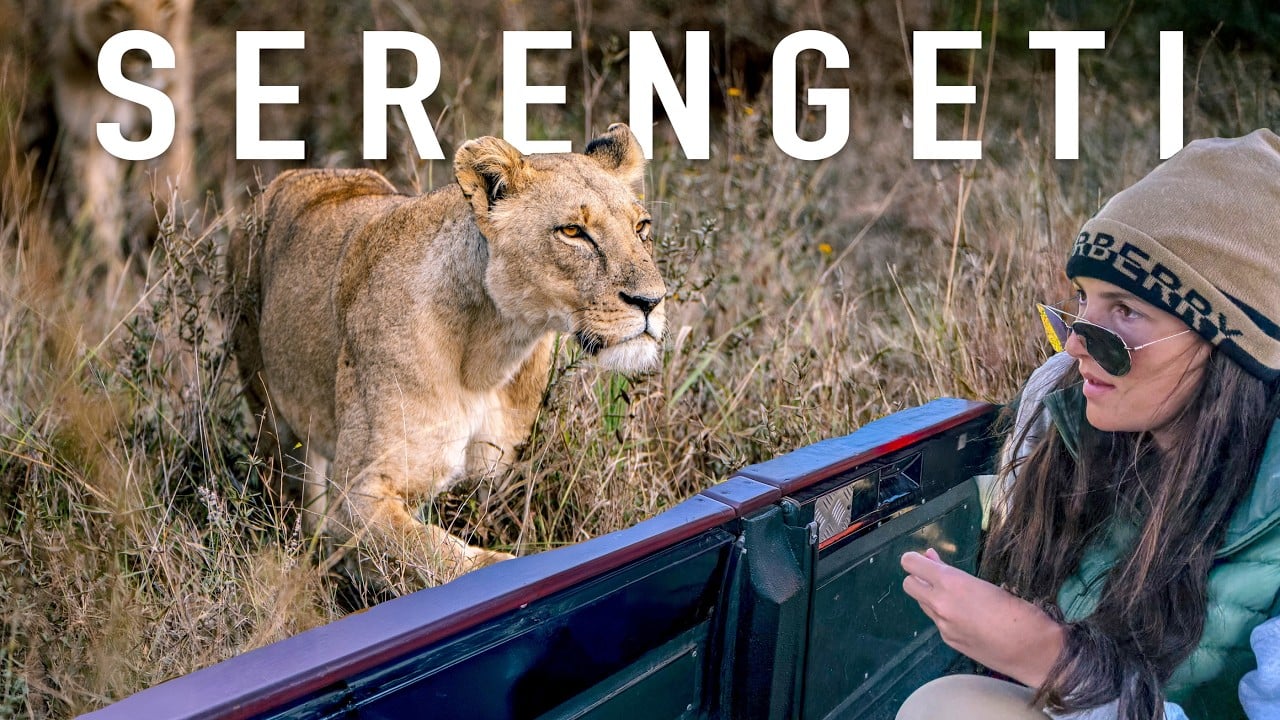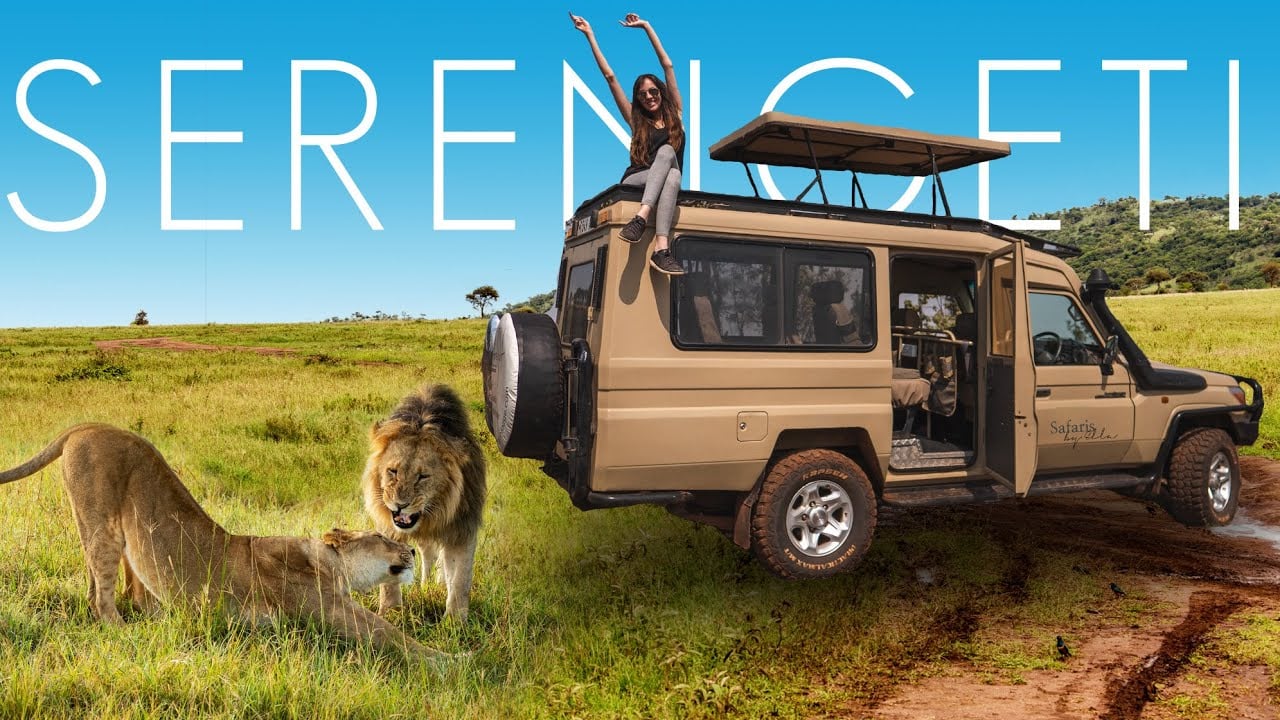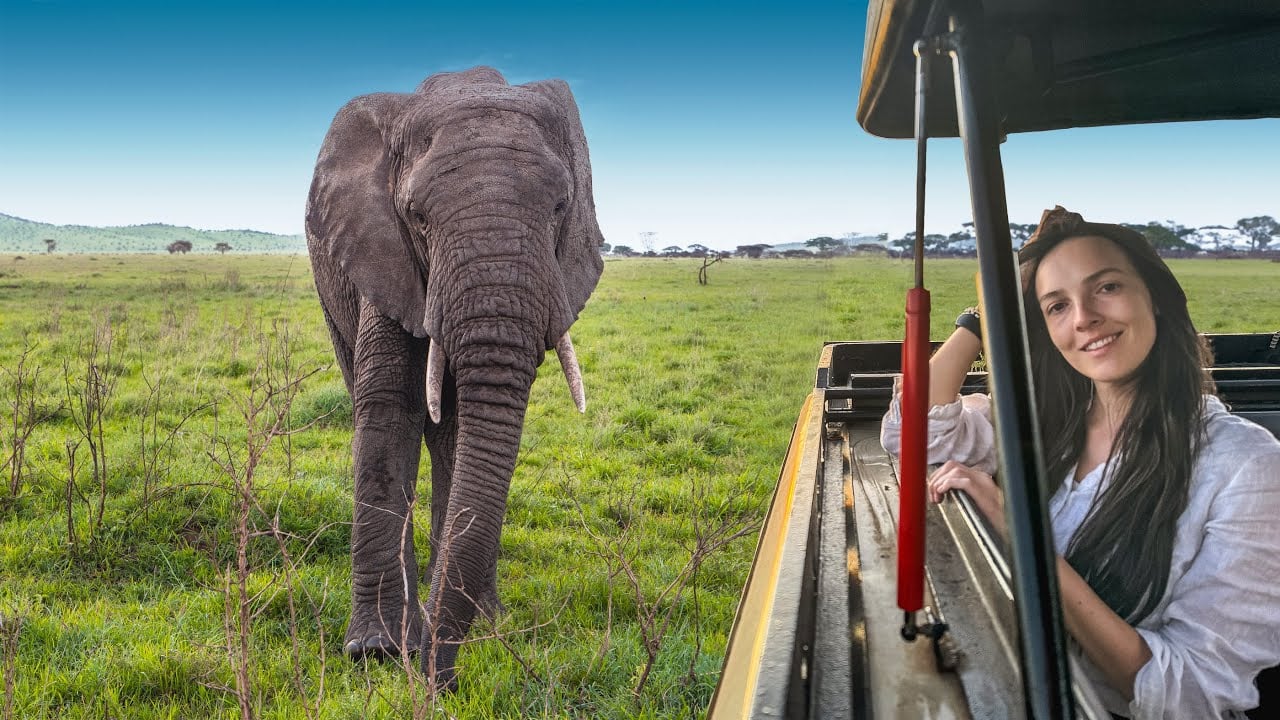Home to the highest concentration of lions on the planet as well as the world-famous great wildebeest migration, Tanzania has earned its place as one of the world’s best safari destinations.
And it doesn’t just boast exceptional wildlife. Tanzania has some of the continent’s best beaches as well as Africa’s tallest mountain: Kilimanjaro. There truly is something for everyone here!

But with over 23 national parks spanning around 15% of the country, it can be difficult to prioritise where to visit.
Add that to the fact that the parks are spread out with journeys of several hours, sometimes days between them, and you may start to be scratching your head in regards to how to fit in everything you wish in your safari itinerary.
I’m here to help! Having visited Tanzania numerous times and been on countless game drives, I’ve amassed enough experience to confidently advise you on how to plan the best Tanzania safari.
I’ve also consulted local experts as well as done copious amounts of research to ensure this article is comprehensive – so you can have the safari of a lifetime!
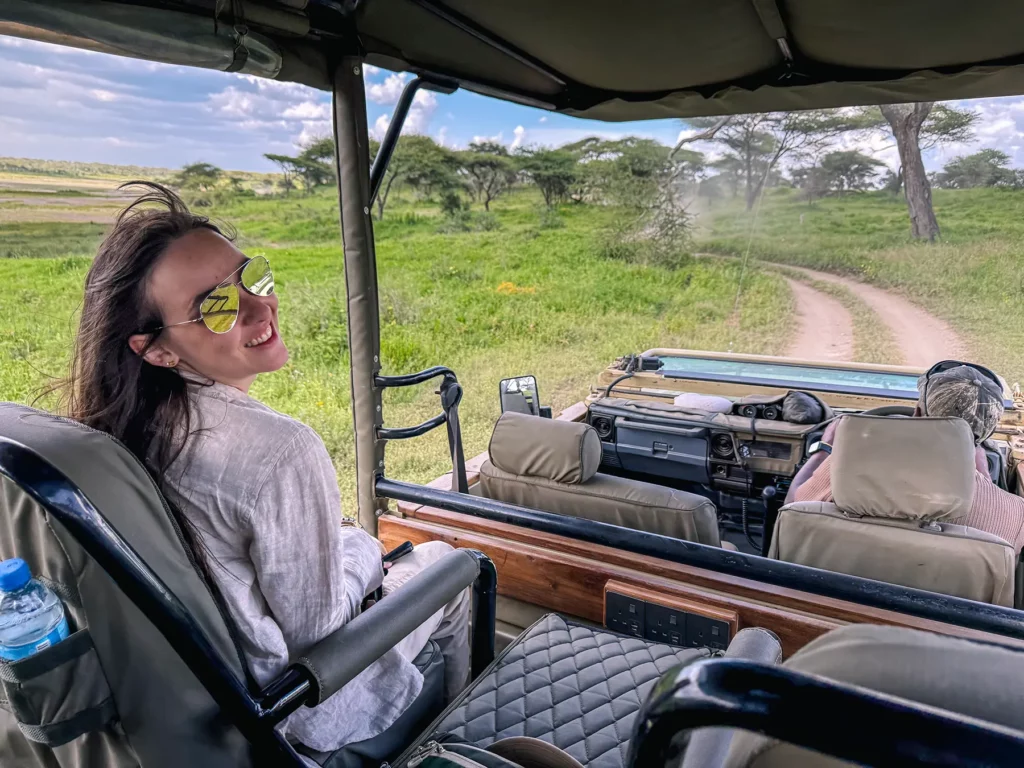
In this guide, I’m going to dive into everything I wish I’d known before booking my first Tanzania safari. I’m going to discuss the best time of year to visit, how much a safari costs, how to book your safari as well as share tips and tricks that will make your safari truly memorable!
Tanzania Safari Map
Below is a map of northern Tanzania, including my favourite safari destinations in the region.

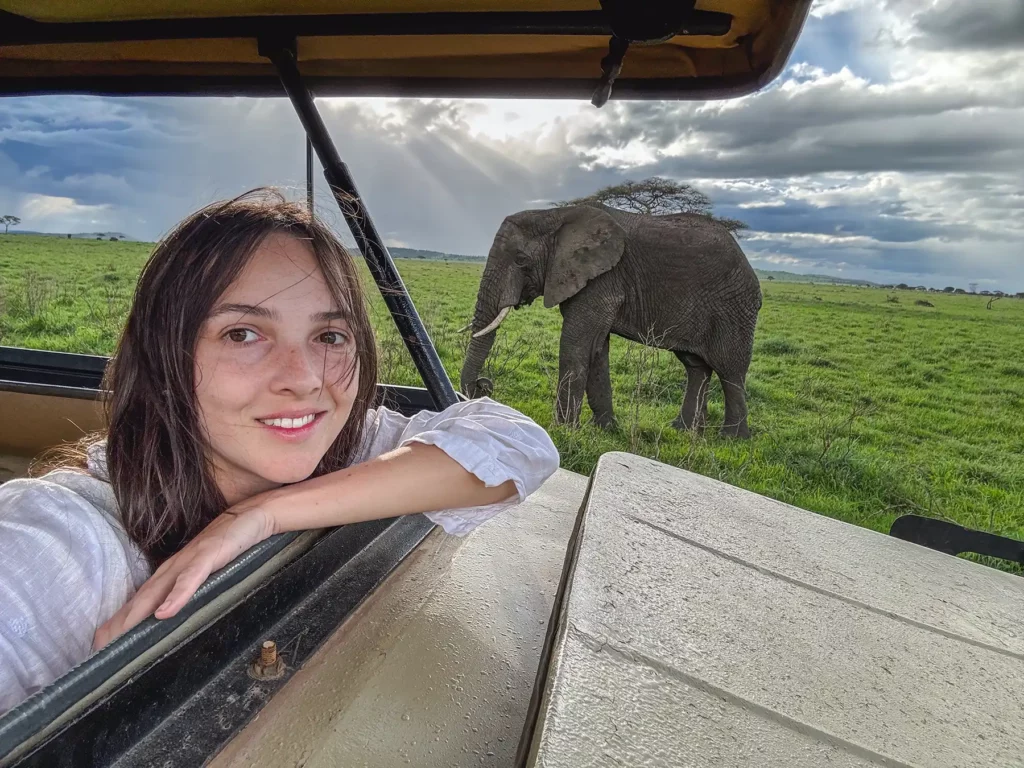
Embark on the Safari of Your Dreams
Save time and ensure an incredible safari experience by getting quotes from my recommended local safari companies
I’m here to make booking your perfect safari quick, easy and risk-free.
Join the rapidly growing tribe of over 1,000 travellers who’ve booked their dream safari using my insider tips and recommendations.

It takes under 60 seconds to fill out the form and in under 48 hours you will receive multiple, no-obligation proposals from my favourite local tour operators with glowing online reviews.
Get your free no-obligation safari quotes and my top safari tips and recommendations
In This Guide
- 7 Reasons to Go on Safari in Tanzania
- How to Book Your Tanzania Safari
- How Much Does A Tanzania Safari Cost?
- Best Time To Visit Tanzania
- How Many Days In Tanzania?
- The Great Migration In Tanzania
- National Parks and Wildlife Reserves In Tanzania
- How Does Tanzania Compare With Other Safari Destinations?
- Is a Tanzania Safari Safe?
- Best Tanzania Safari Itineraries
- How to Prepare for Your Tanzania Safari
- How Should I Pack For A Tanzania Safari?
- Special Interest / Unique Safaris
- Final Thoughts
- Read More Guides

7 Reasons to Go on Safari in Tanzania
Tanzania is the third most popular safari destination in Africa, receiving over 2 million visitors per year. There are many reasons why visitors numbers are growing year on year and why people, like myself, keep returning to this mesmerising country. I’ll delve into some of the best below.
1. The Great Migration
The second largest terrestrial mammal migration on earth takes place in the sprawling Serengeti National Park in northern Tanzania. Over 2 million wildebeests, zebras and antelopes stampede across the vast plains, in a never-ending cycle that’s filled with drama and heart-stopping moments.
There are three key parts of the migration which visitors to Tanzania are eager to see:
1. The Mara River Crossing – between mid-July and mid-October the great herds cross the treacherous crocodile-infested Mara River. Dodging strong currents, hungry crocodiles and lions hiding behind bushes on the riverbanks, there’s never any shortage of action here.
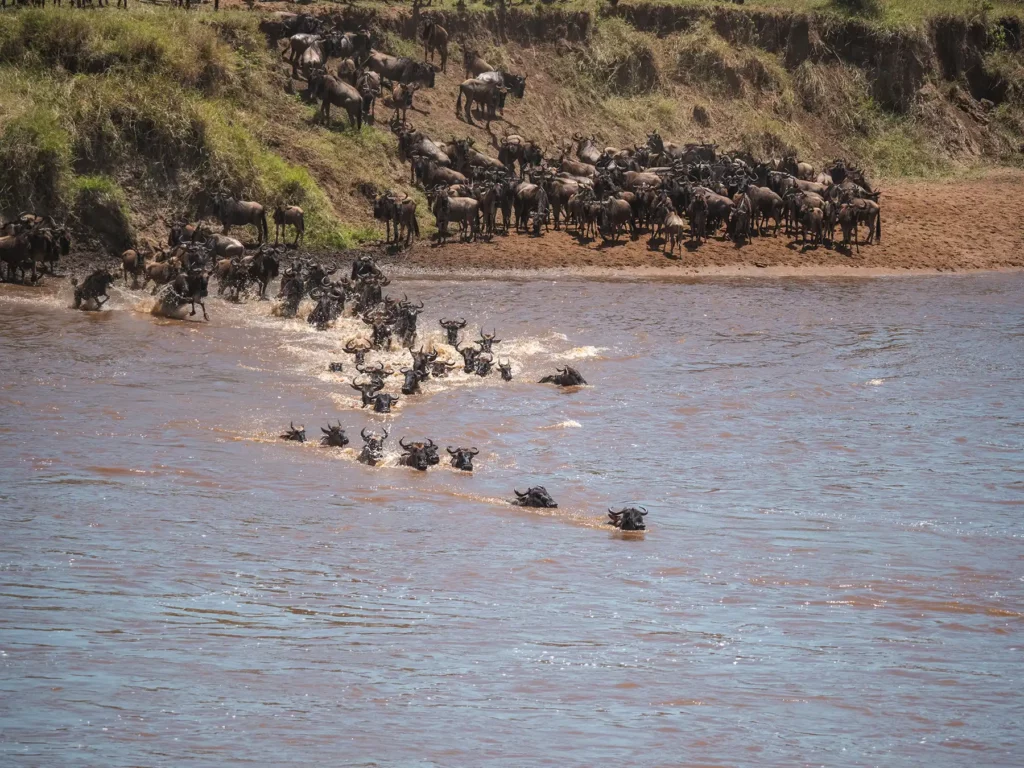
2. The Calving Season – between mid-January and mid-March the wildebeests start to give birth in southern Serengeti. Around 8,000 babies are born each day and take their first tentative steps. This is also a great time of year to see predators in action as new life means there’s no shortage of food.
3. The Grumeti River Crossing – between May and mid-July the herds cross the Grumeti River in Serengeti’s western corridor. Whilst not as famous as the Mara Crossing, there’s still lots of action to see here as the herds try to evade lurking crocodiles.
You can read my full guide to the great wildebeest migration in detail.

2. Hiking Kilimanjaro
The tallest free-standing mountain on earth can be found in northern Tanzania. Standing at 5,895 metres above sea level, many adventurous travellers have summiting Mount Kilimanjaro on their bucket list.
It takes up to 9 days to complete the trek. You can expect to hike through a range of habitats and are gifted with superb views. Then there’s nothing like the feeling of standing on the roof of Africa!
Kilimanjaro is just a stone-throw away from many of Tanzania’s top national parks meaning it’s very convenient to combine a hike with a safari.
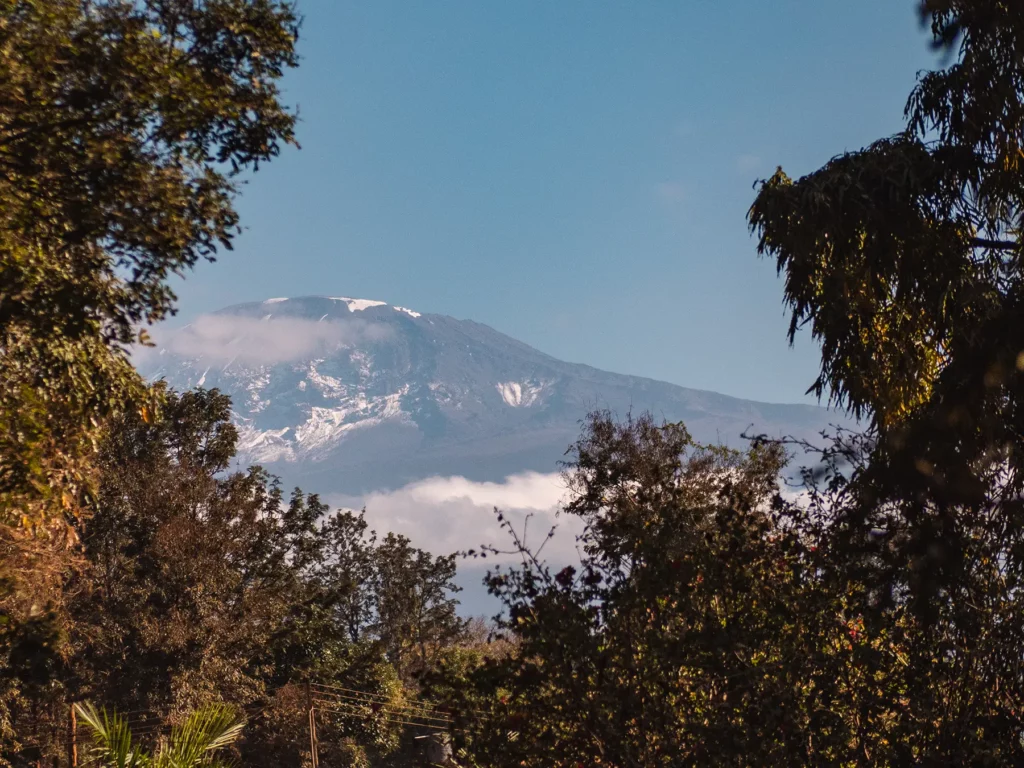
3. The Hadzabe And Maasai Tribes
Tanzania is a culturally-diverse country, home to over 120 individual tribes. Two of the most renowned are the Hadzabe and Maasai Tribes.
The Hadzabe are some of the world’s last hunter-gatherers. There’s only around 1,000 of them left and they can only be found around Lake Eyasi in northern Tanzania. Visiting the Hadzabe is a great way to learn about and conserve their culture.
The Maasai tribe is arguably the most famous tribe in Africa. Their tartan-patterned shukas are recognisable all over the world. They have a reputation for being a fearsome tribe and are famous for their unique jumping dance. They can be found in northern Tanzania, from the Serengeti to Kilimanjaro, and so a visit to see the famous warriors can easily be added to your safari itinerary.

4. Seeing The Big Five
Tanzania is home to the famous and sought-after Big Five: elephant, rhino, lion, leopard and buffalo. It’s not uncommon to see all of them on a safari in Tanzania’s northern circuit.
Serengeti is big cat heaven with healthy numbers of both lion and leopard.
Elephants can also be found in Serengeti in large herds. However, Tarangire is probably the best place in Tanzania to see elephants – it’s possible to see herds that are over 100 members strong!
Buffalos can be found in all of Tanzania’s key parks and reserves in northern Tanzania, including Serengeti, Ngorongoro Crater and Tarangire.
Rhinos are perhaps the hardest of the Big Five to see. You only really stand a good chance of seeing them in Ngorongoro Crater, although they are present in Serengeti too.
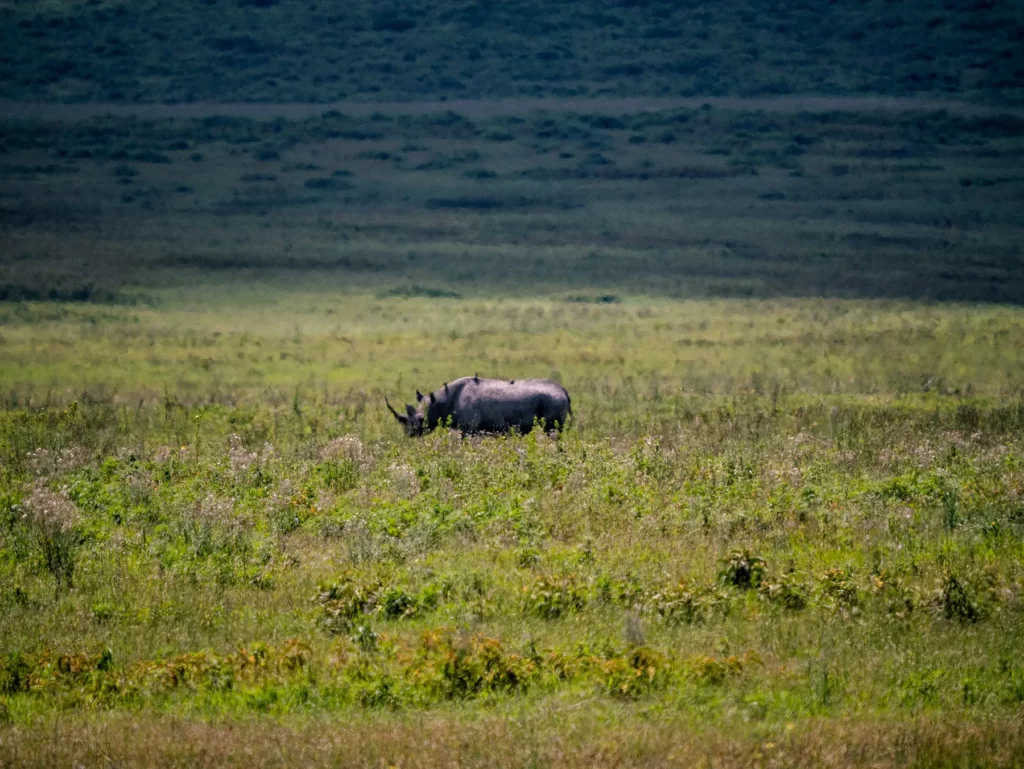
5. Density of Predators
Tanzania has the largest population of lions in the world. In fact it’s thought to house over 40% of the lion population with an estimated 14,000 individuals. In contrast, South Africa, which has the second largest population of lions has just over 3,000 individuals.
Below you can see a chart which shows the lion population throughout Africa.

It’s not just lions which can be found in abundance throughout Tanzania.
In a report published in 2022, there was thought to be an estimated 39,000 leopards in Tanzania.
Interestingly, recent findings have discovered that the exact number of leopards within a particular area in Tanzania varies depending on the time of year, with 5.72 leopards per 38.6 square miles (100 square kilometres) recorded in the wet season in Serengeti compared to a slightly lower 5.41 leopards in the dry season.
Whilst these findings may suggest that your chances of bumping into a leopard are slightly higher in the wet season, their numbers are still healthy throughout the year.
Other predators such as cheetahs, spotted hyenas and servals can also be found in Tanzania.
Wild dogs are present in Tanzania but largely in the southern parks such as Ruaha. They are extremely rare to see in northern Tanzania.

6. Tree Climbing Lions In The Serengeti
Uganda was once dubbed the tree-climbing lion capital of the world. However, it now has serious competition from neighbouring Tanzania with more and more lions displaying this habit.
And as Uganda’s Queen Elizabeth National Park has suffered from poaching in recent years (most notably the poisoning of 6 tree-climbing lions in 2021) it’s actually becoming increasingly reliable to see the big cats in action in Serengeti.
Serengeti has recently overtaken Lake Manyara when it comes to tree-climbing lion sightings in Tanzania. Recent flooding in Lake Manyara has caused many large animals to move away, including lions.
The Seronera region in central Serengeti is the best place to see lions lounging in sturdy acacia trees. I was lucky to see not one, but two, on my first ever visit to Serengeti.
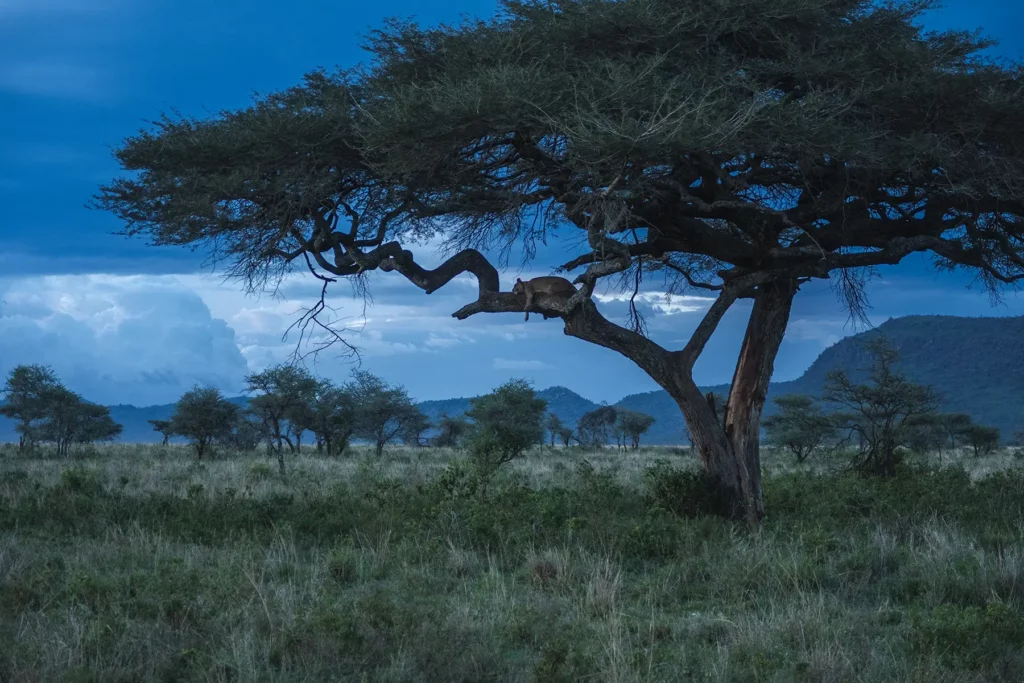
7. Safari And Beach (Tanzania And Zanzibar)
Tanzania is located on Africa’s east coast facing the Indian Ocean. The country has an archipelago of coral islands just off the coast known as Zanzibar. These islands are home to some of the world’s best beaches!
Unwinding on a white-sand beach in Zanzibar is the perfect way to end an adventure in Tanzania. And with flights connecting Tanzania’s main locations including Serengeti National Park to Zanzibar, combining the two couldn’t be easier.
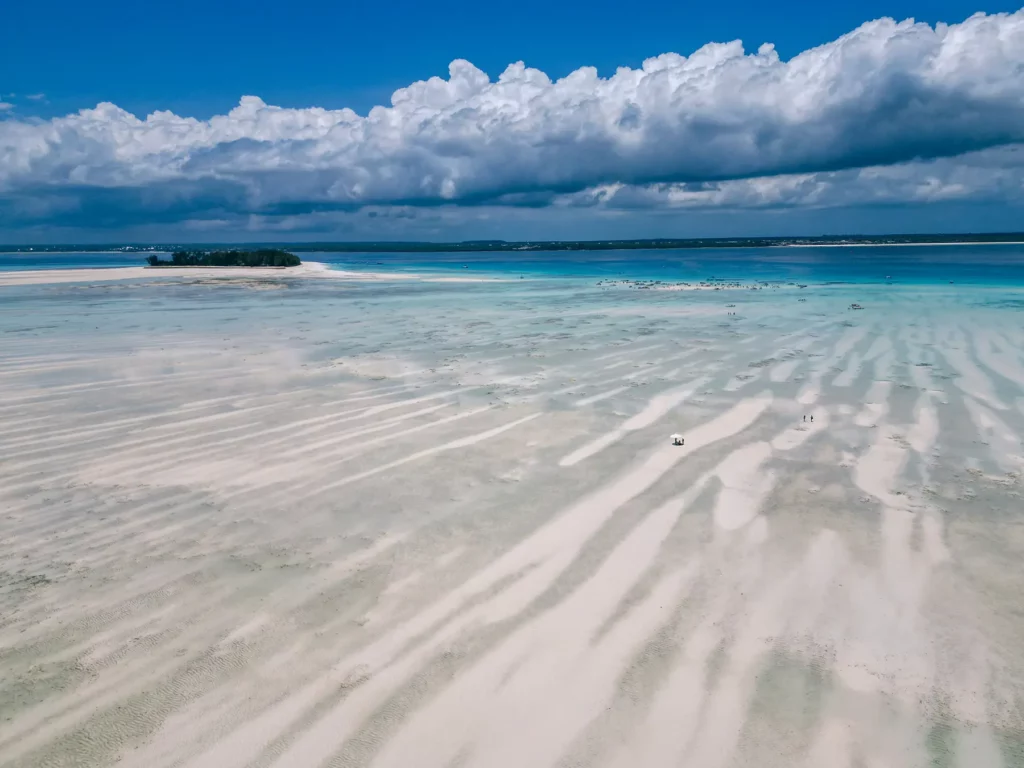
How to Book Your Tanzania Safari
In my opinion the best way to book your Tanzania safari is through a reputable local tour operator. This is how I book all my safaris.
I find local tour operators strike the perfect balance between good value for money and a smooth and rewarding safari experience.
Local safari companies take care of every detail, from securing your accommodation to arranging park fees, while also providing invaluable insights into recent wildlife movements and the best viewing spots.
You can get quotes from the same local tour companies I use to organise my own trips here: Safaris By Ella
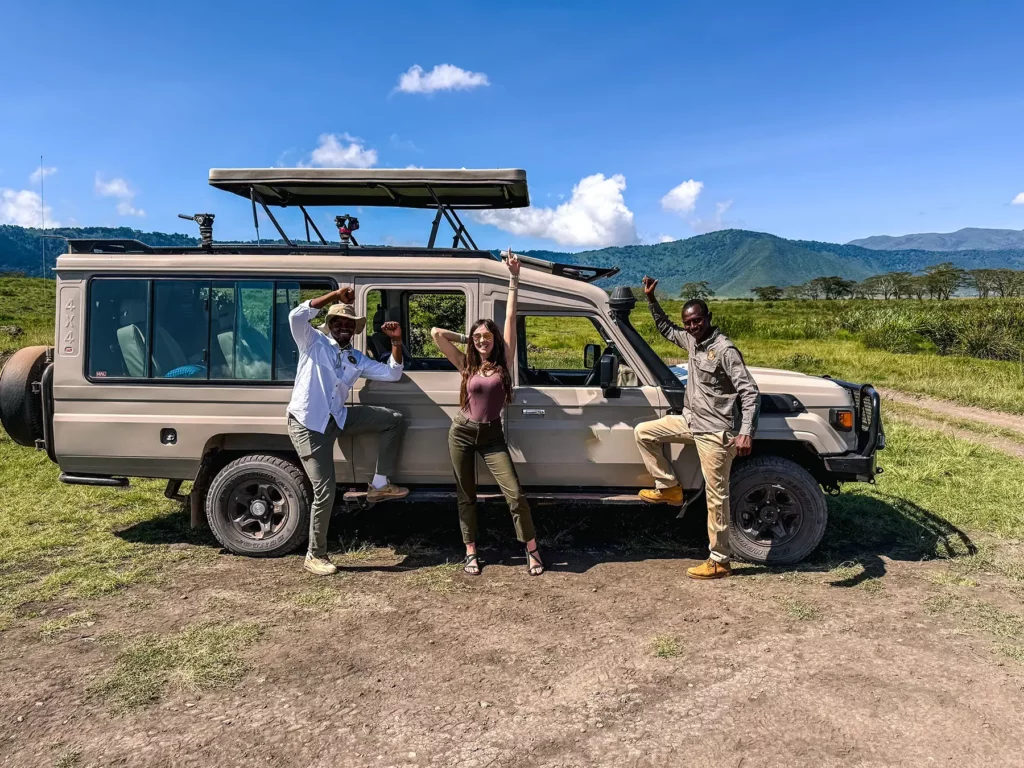
There are other types of safari available, including self-drive safaris and fly-in to hotel safaris, where you fly from lodge to lodge and each lodge offers game drives.
Additionally there are package holidays, where an international travel agent takes care of everything, including international flights.
The option you choose will have a large impact on the price of your safari as well as the experience itself.
Let’s take a look at the pros and cons of each option.
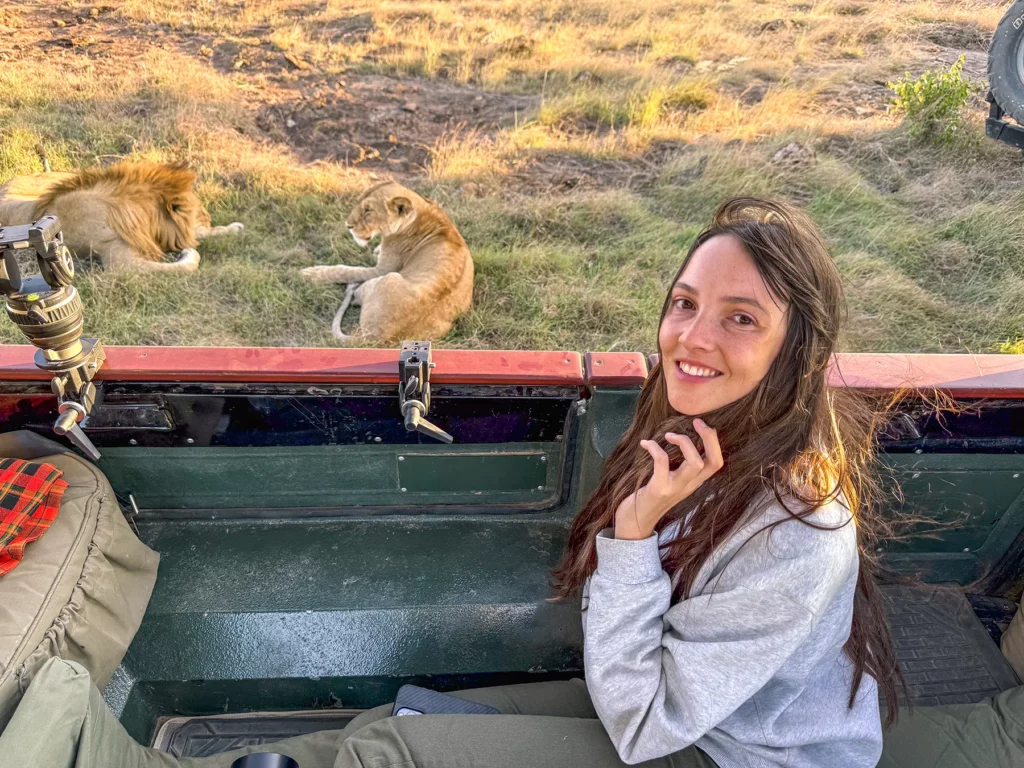
You can jump to more information on each of the booking options using the links below.
Option 3: Hotel-Provided Safaris
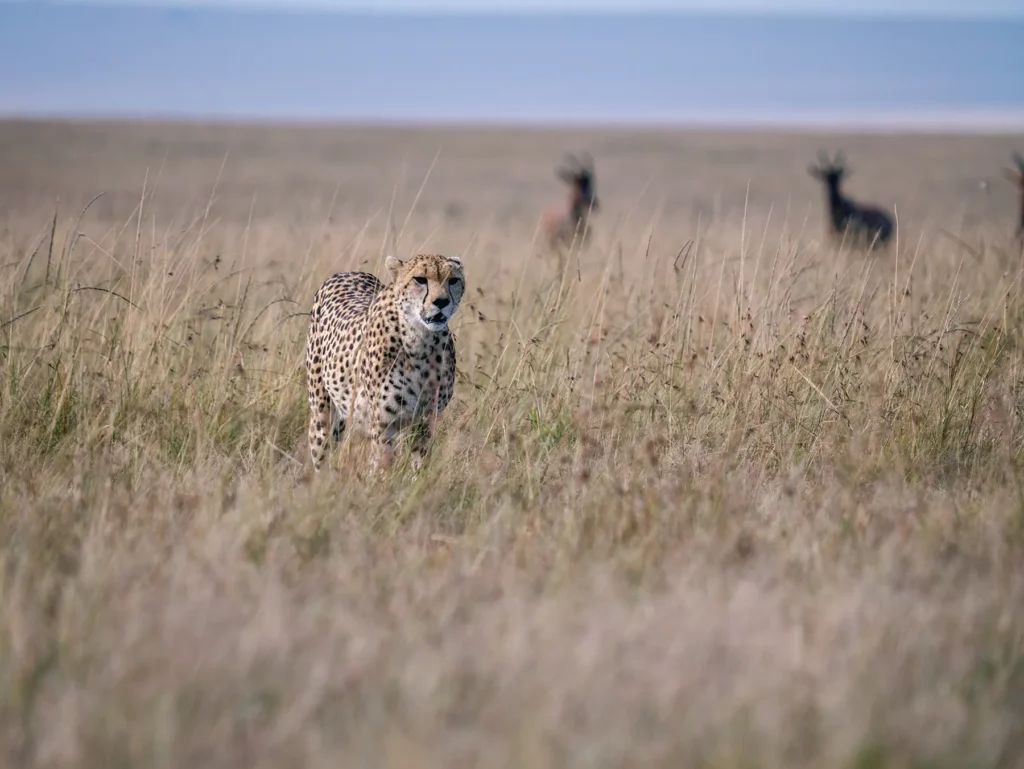
Option 1: Self-Drive Safari
Self-drive safaris are suited to budget conscious travellers who don’t mind trading comfort and ease for a bit of adventure. With this option you will take care of everything – from campsite bookings to cooking your own food, navigating the roads and finding your own wildlife sightings.
If that sounds like a lot of responsibility, don’t worry. You can still go on a guided safari in Tanzania on a budget which saves a lot of stress.
In all honesty, I wouldn’t really recommend self-drive safaris in Tanzania as the country isn’t really set-up for it, not like southern Africa. Parks are strict on the specification of vehicle they let in and the costs aren’t much different to going on a more relaxing guided safari.
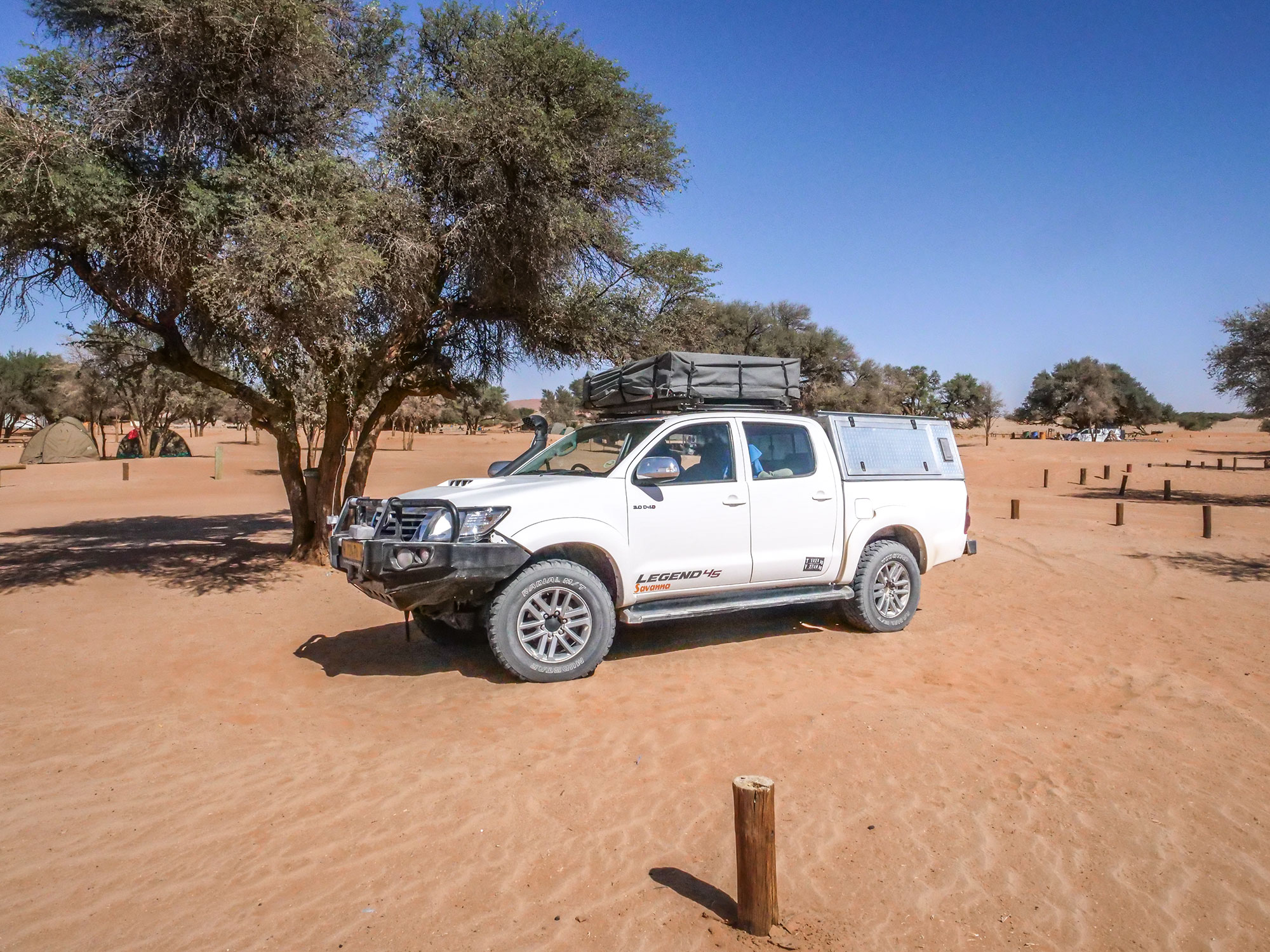
Pros of Self-Drive Safaris:
- Self-drive safaris offer complete independence and flexibility, allowing you to make spontaneous stops and schedule adjustments.
- This option is perfect for those seeking the adventure and challenge of navigating the wilderness on their own terms.
- You will save on some costs, such as a driver guide.
Cons of Self-Drive Safaris:
- Without a professional guide, you risk missing out on the best wildlife sighting opportunities and in-depth local knowledge about the environment.
- For this option to be more cost-effective than booking with a local tour operator, accommodation is limited to basic camping, and setting up and taking down your camp between long drives on difficult roads can be quite tiring.
- This option requires extensive preparation and technical expertise, particularly in navigation and off-road driving.
- Your actual cost savings may prove minimal once all expenses are tallied.
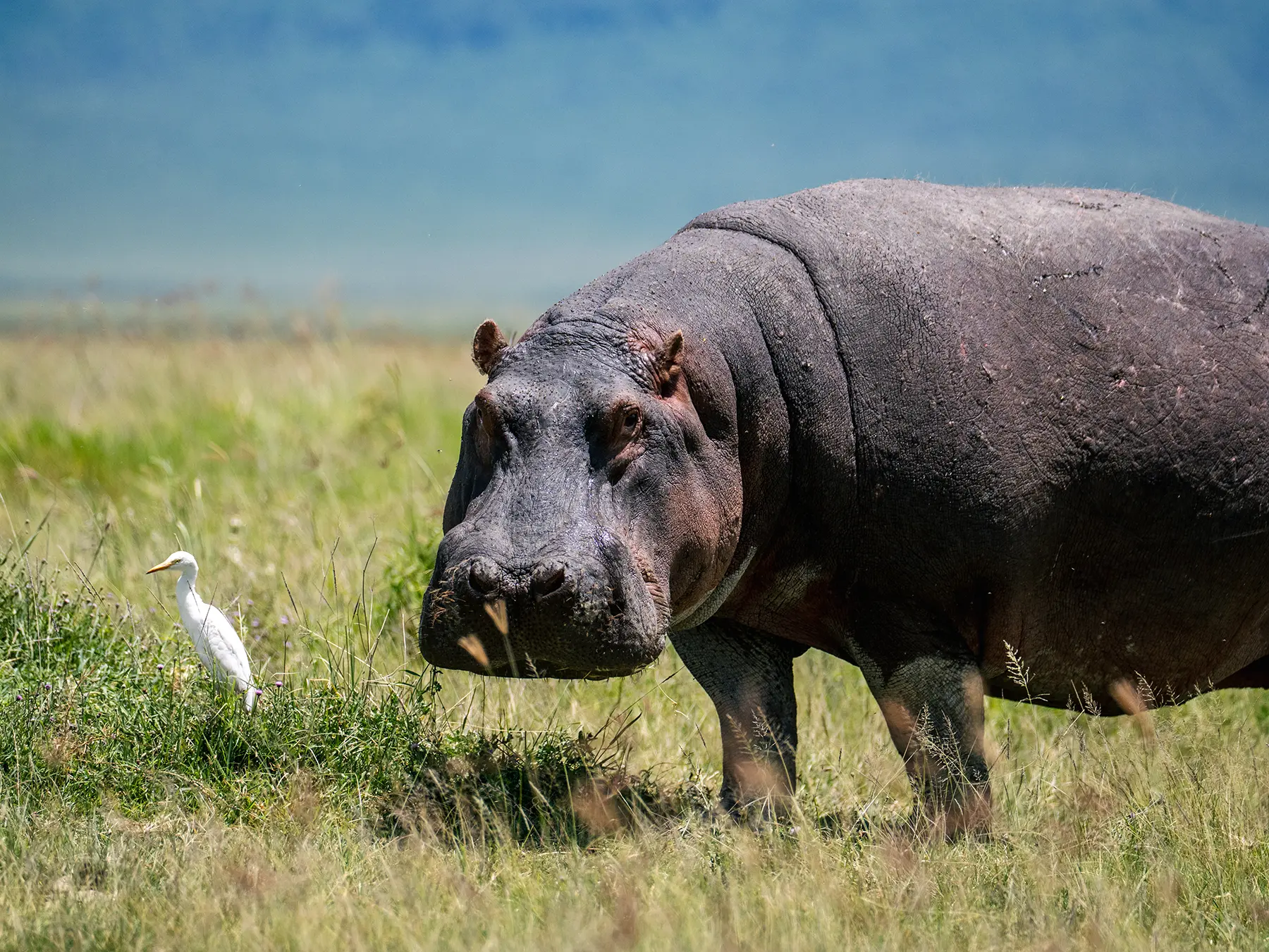
My Verdict on Self-Drive Safaris:
Based on my extensive safari experience, I’d advise most travellers to steer away from the self-drive option. The minimal cost savings are simply not worth the stress of organising everything, challenging driving conditions and risk of missing out on great wildlife sightings.
A safari with a local tour operator doesn’t cost much more than a self-drive safari and comes with many benefits, including everything being booked for you and a knowledgable local guide who understands the roads and wildlife.
How to Book a DIY Self-Drive Tanzania Safari
- Option 1: Comparison sites which provide multiple quotes from verified suppliers such as Safaris By Ella. Make sure to write you want to self drive in the notes when requesting a quote. (This is a hybrid approach where you’ll drive yourself but they will arrange everything)
- Option 2: Research and book all elements of the trip yourself using Google and online travel agents.
Join the rapidly growing tribe of over 1,000 travellers who’ve booked their dream safari using my insider tips and recommendations. Get your free quotes and my top tips and recommendations now.
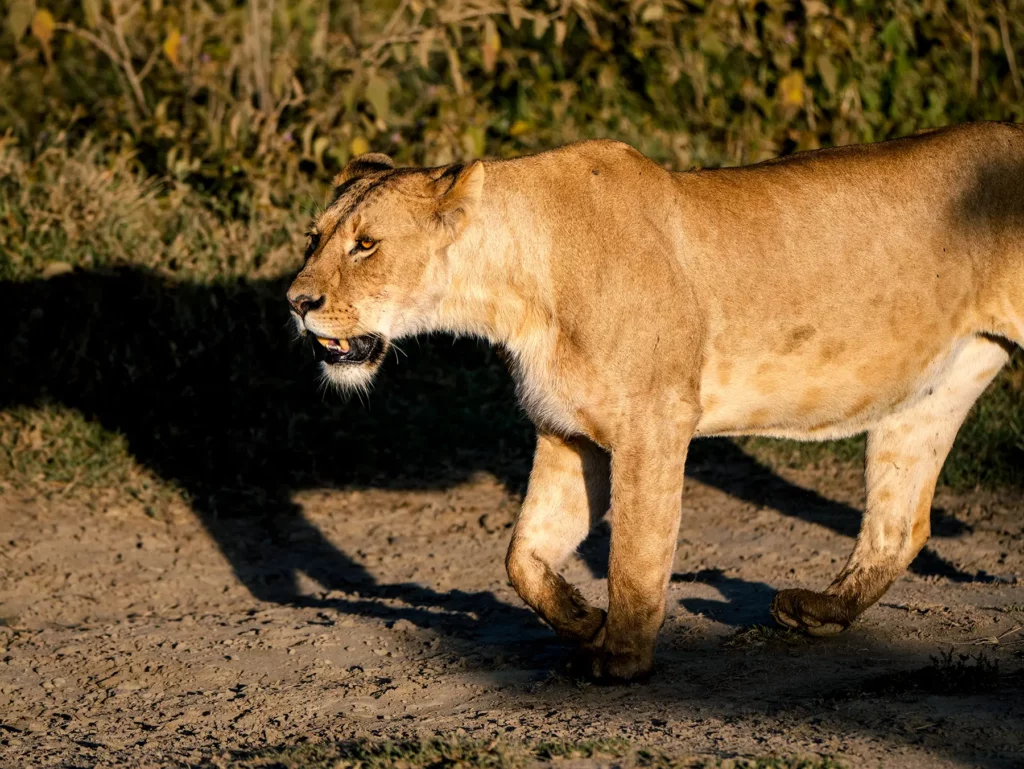
Option 2: Local Tour Operator
This is by far my favourite way to book a Tanzania safari!
Local tour operators are cost-effective in comparison to booking with international tour agents and yet provide an exceptional service. They take care of all aspects of your safari apart from international flights. This provides a stress-free, seamless safari experience.
Their on-the-ground knowledge enables you to have up-to-date information on where the best wildlife sightings are as well as the best hotels and lodges based on recent feedback.

Pros of Local Tour Operators:
- The best local tour operators provide end-to-end service, managing everything from arranging park permits to booking accommodations according to your specifications. They employ excellent driver guides and arrange vehicles, dedicated guides, fuel, and even meals throughout your safari.
- Having experienced both self-organized and professionally managed safaris, I can assure you that letting experts handle the details makes the whole trip extremely relaxing.
- Booking through local operators often costs about the same as arranging everything yourself. Thanks to their established relationships with lodges and camps, they secure preferential rates and can sometimes even snag rooms when hotels appear fully booked online. You’ll get all this value and save countless hours of research and coordination.
- The real value of working with local operators lies in their deep expertise. Your local guide’s intimate knowledge of the terrain, wildlife behavior, and tracking techniques are invaluable assets.
- Another huge advantage is your guide’s access to a radio network of fellow professionals. This communication web significantly increases your chances of good wildlife sightings.
- As local tour operators have so much experience booking safaris, you will end up with a far more optimised itinerary and hotel recommendations than if you were to self-drive or book directly with hotels.
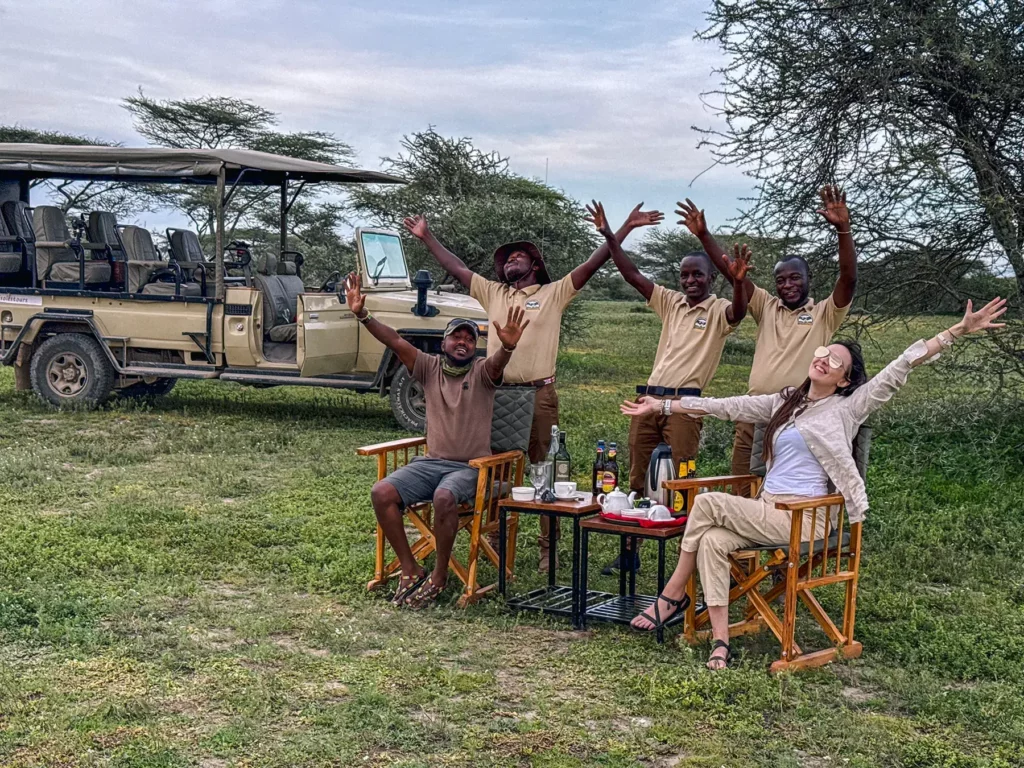
Cons of Local Tour Operators:
- Tour operators can vary in quality, and the lowest price doesn’t necessarily mean the best value.
- Substantially cheaper packages may include lower-quality accommodation and less experienced guides, which negatively affect your overall safari experience.
- Typically, local tour operators do not handle booking your international flights.
Top Tips
- Guides with less experience in the wild could miss wildlife sightings or not know the best spots to find wildlife, so it’s important to choose a recommended local tour operator.
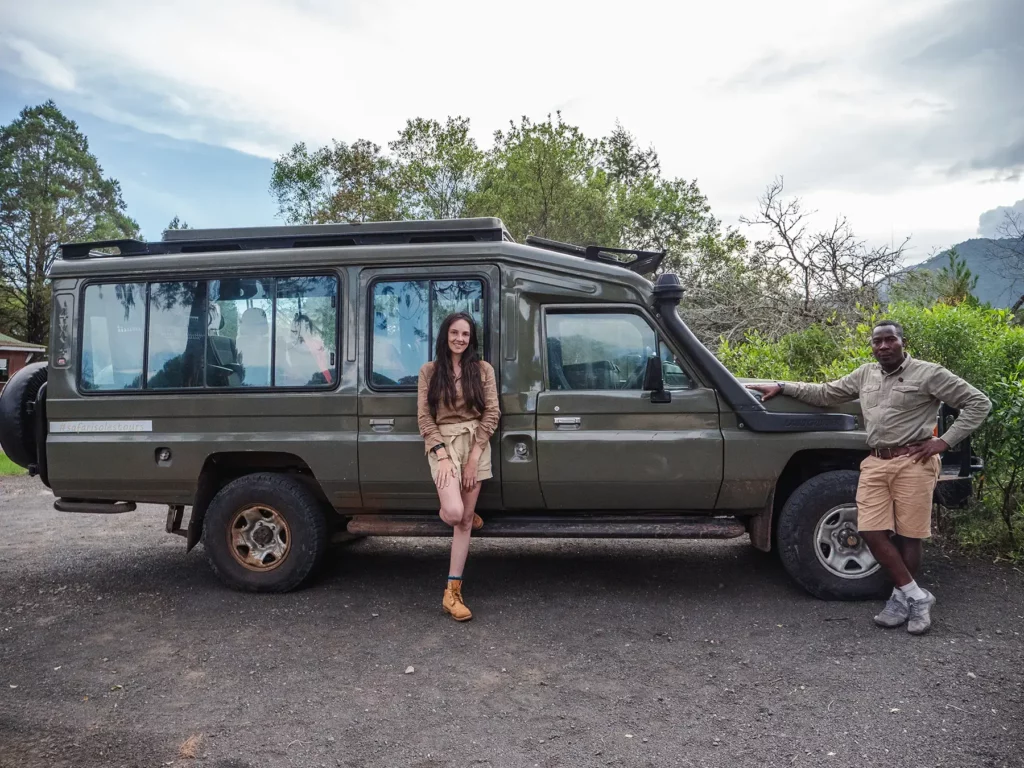
My Verdict on Local Tour Operators
Local tour operators provide excellent value for your safari, but it’s important to choose the right company who you feel confident working with, rather than simply picking the cheapest option.
Doing a bit of homework beforehand is key. Browse through online reviews, keeping an eye out for any recurring negative comments. Be sure to look for operators who consistently receive praise for their knowledgeable guides, reliable vehicles, and overall safari experience.
I’d love to help you choose the perfect local tour operator. You can receive safari quotations from my favourite local tour operators, who I have personally been on safari with and had an excellent experience with, here on Safaris By Ella.
Recommended Booking Options For Your Tanzania Safari Itinerary
Safari with local tour operator
Most popular & best experience – typical prices for this itinerary start from $350 per person per day.
Visit safarisbyella.com for free quotes from trustworthy local tour companies I use to book my own trips.
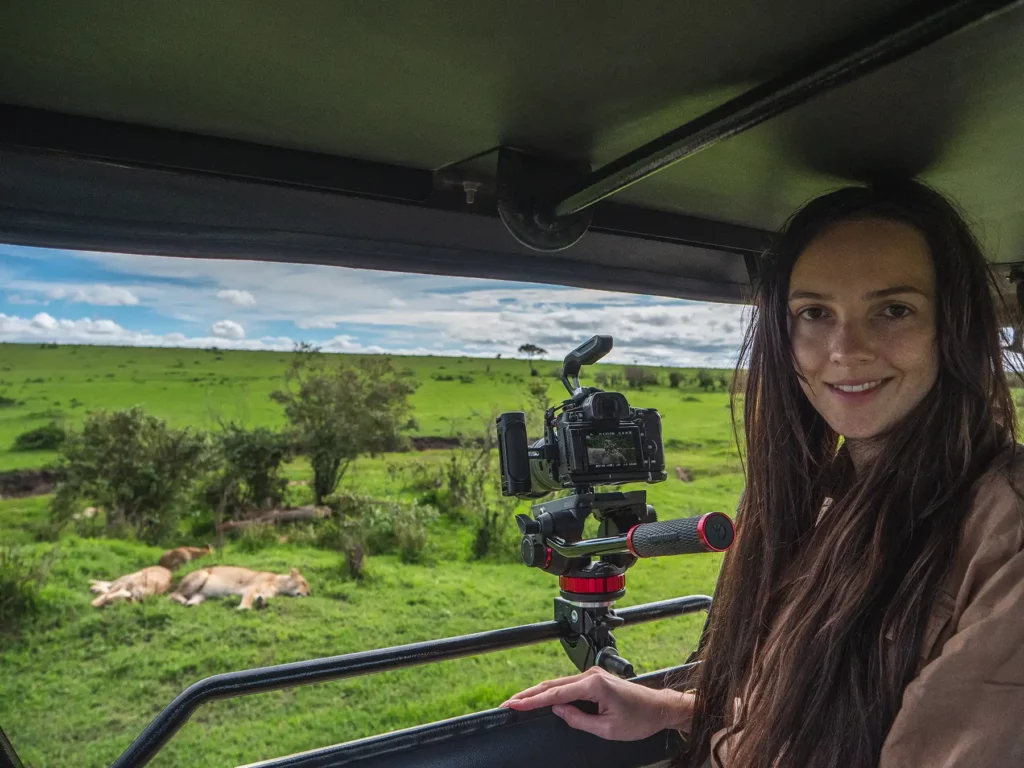
How to Book with the Best Local Safari Companies
- Comparison sites which provide multiple quotes from verified suppliers such as Safaris By Ella
Join the rapidly growing tribe of over 1,000 travellers who’ve booked their dream safari using my insider tips and recommendations.
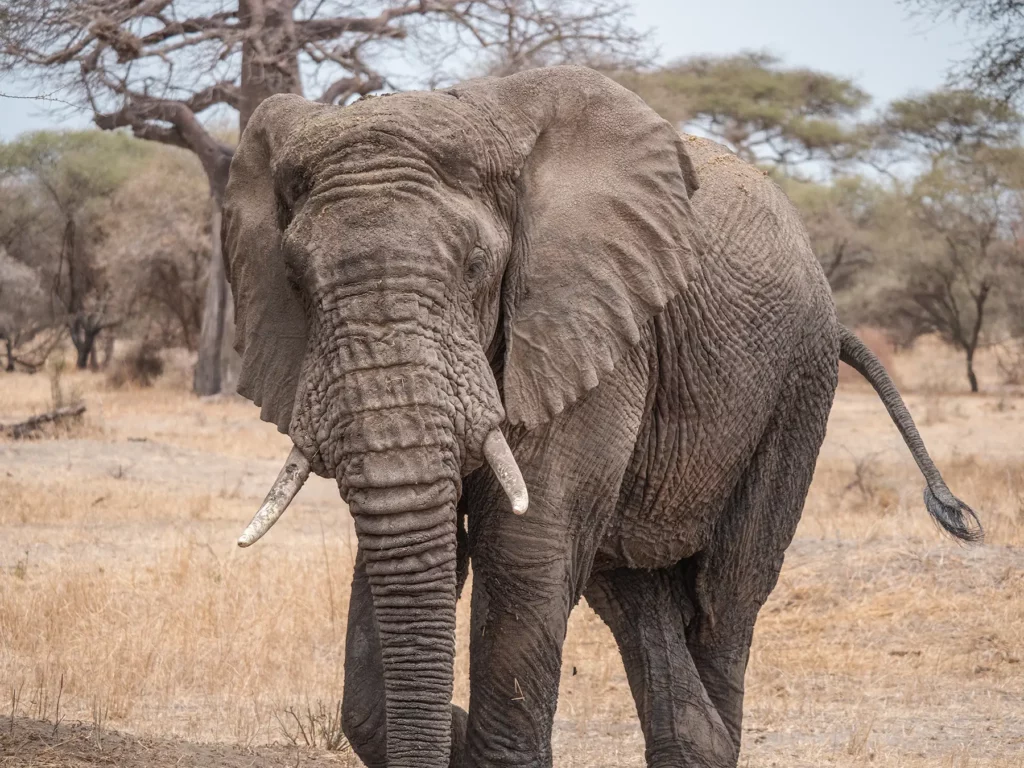
Option 3: Hotel-Provided Safaris
It’s possible to book your safari directly with lodges and hotels. This option may be worth considering if have a large budget, prefer to stay in one location for a longer period of time or if you’d like to travel between lodges by air.
However, hotel-provided safaris are expensive and often the safari trucks are shared rather than private.
Pros of Hotel-Provided Safaris:
- If you choose to fly between lodges, your experience should be seamless and convenient, eliminating long road transfers.
- You can expect a high standard of accommodation in pristine surroundings.
- Whilst more expensive than booking with a local tour operator, this option is often more cost effective than booking with an international travel agent.
Cons of Hotel-Provided Safaris:
- Lodge-based safaris are substantially more expensive than safaris organized by local tour operators.
- Flights can be either scheduled (if you’re heading to popular airstrips) or chartered. While chartered flights provide more direct access to your destination, they do come with a significantly higher price tag.
- Lodge safaris often require you to share safari vehicles with other hotel guests, which can limit your flexibility regarding game drive timings, the duration spent at each sighting, and your overall safari experience.
- Lodges may not always be in ideal locations. As you don’t have an impartial third party (like a local tour operator) advising you, you may end up booking hotels far away from prime game viewing areas.
Top Tip:
Consider combining lodge stays with a private local safari company for game drives. This hybrid approach can offer both luxury accommodation and personalized wildlife viewing experiences.
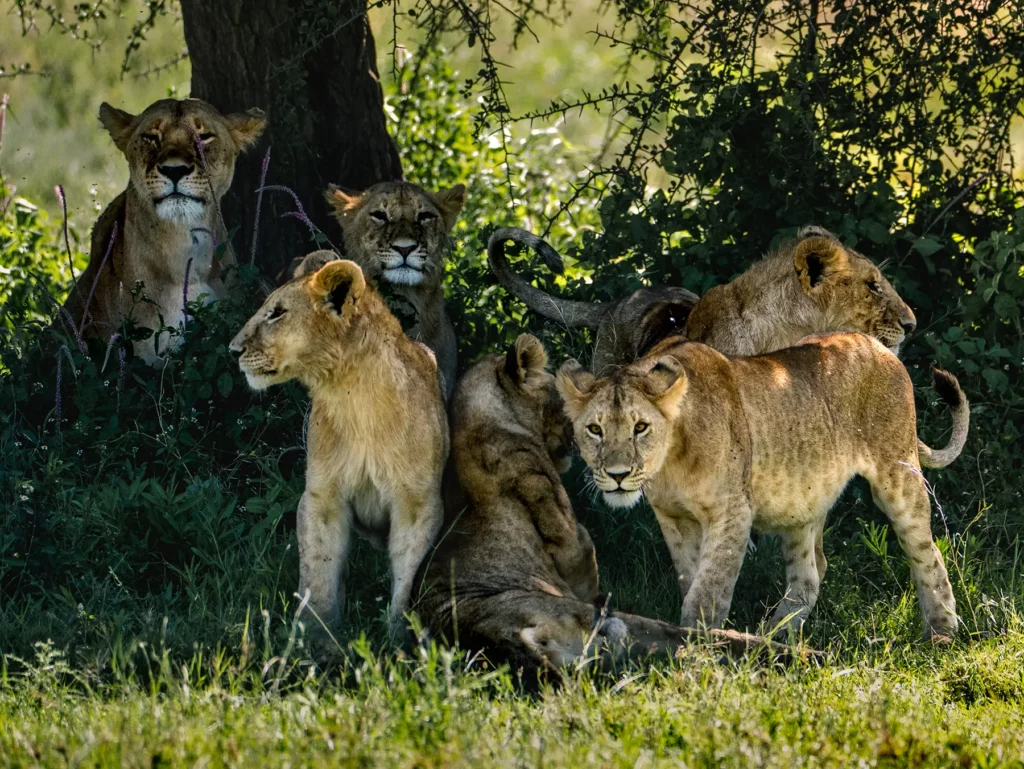
My Verdict on Hotel Safaris:
In my opinion, lodge-based safaris are a good option if you have a large budget and prefer a more stationary, luxurious safari experience. It’s important to be aware, however, that you’re likely to share your game drives with other hotel guests. It may be possible to have a private vehicle but it will likely come at a higher price.
How to Book a Hotel-Provided Safari
- Option 1: My recommended tour operators on Safaris By Ella can arrange hotels and air or road transport to and from the hotels. If you opt for the more cost-effective road transport, since they have driven you to the hotel, you might find it cheaper to use the safari company for safaris rather than using the hotel-provided safaris.
- Option 2: Check with your chosen accommodation whether they provide this service and the booking requirements.
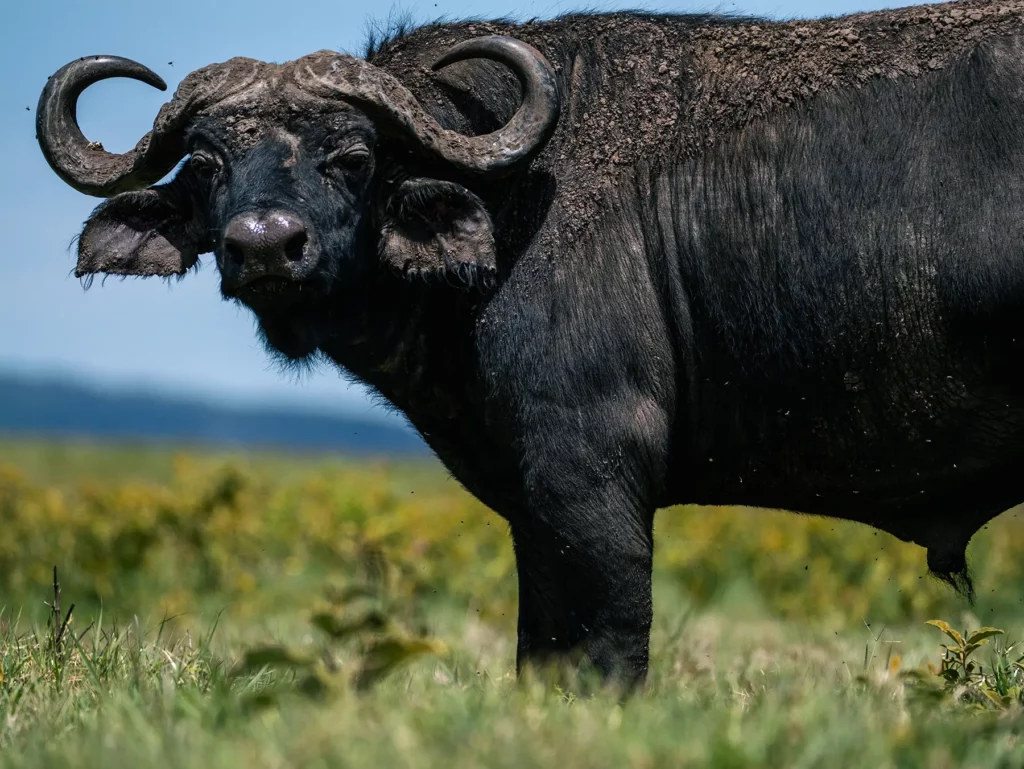
Option 4: International Travel Agents
If budget is not a concern and you’re after the convenience of somebody arranging your entire trip, including your international flights, then booking your safari via an overseas travel agent may be a good option to consider.
However, there are some major drawbacks of booking this way, the most obvious of which is that you will typically pay 25% – 40% more for your safari than if you booked through a local tour operator. This is because they will usually outsource the actual safari activities to local tour operators, and then add a markup onto their services in order to make a profit.
The actual safari experience will be the same as if you’d booked with a local tour operator or hotel.
Pros of International Travel Agents:
- Having one provider book all aspects of your trip, including your international flights, can be convenient.
- Booking through international travel agents usually provides some mitigation of risk for the traveller. In the UK you will be covered by Package Travel Regulations and if your international flights have also been booked as part of your package, you’ll be covered by the ATOL scheme. In the USA there are also schemes such as the Airline Passenger Protection Act and the Federal Aviation Administration’s consumer protection rules which apply when booking through travel agents in the US.
Top Tip
There are steps you can take to ensure similar levels of protection for yourself when booking directly with local operators. If you use your credit or debit card to pay your deposit, you will legally have some purchase protection (in the UK it’s called Section 75).
It’s a good idea to buy good travel insurance with travel interruption protection. Use reputable, trusted local safari companies that allow for balance payments closer to the day of departure.
Cons of International Travel Agents:
- The main drawback of booking your safari through an international travel agent is that this is by far the most expensive way to organise your trip. It’s 25-40% more expensive than booking through a local tour operator.
- Overseas travel agents often lack in-depth local knowledge, which can impact cost and the overall quality of your experience. For instance, they may not be aware of special rates being offered by particular lodges during the time of your visit, and end up booking you more expensive accommodation.
- You have no control over which local safari operator they subcontract to. Because you won’t know who your local providers are, it’s not possible to perform the necessary due diligence to make sure they are reputable.

My Verdict on International Travel Agents:
I personally can’t see many advantages of booking with an international tour operator. This is the most expensive booking option and as the safari is outsourced to a local company anyway, it doesn’t feel like the extra cost is good value.
The only benefit I see of booking this way is that they can book your international flights too. However, there are cons to this as not all agencies allow you to earn points with airlines which can give you rewards later down the line.
From my personal experience, booking through a local tour operator gives you the best combination of value and experience.
How to Book Your Safari with an International Travel Agent / Safari Company
- Comparison sites which provide multiple quotes from verified suppliers such as Safaris By Ella. When you select a luxury budget on the quote request, you will receive a quote from my recommended International safari company as well as my recommended local companies for comparison.
Join the rapidly growing tribe of over 1,000 travellers who’ve booked their dream safari using my insider tips and recommendations.
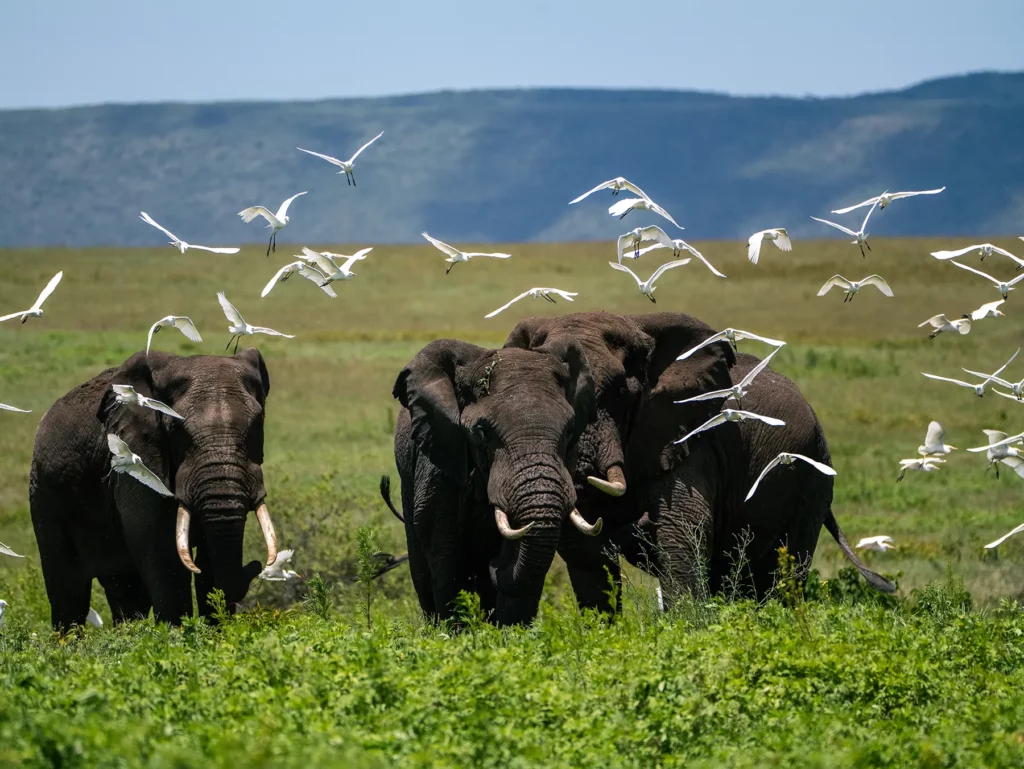
Private vs Group Tanzania Safaris
There are two types of safaris: private (where it’s just your group) and group safaris (where you share with other people). Which type of safari you choose will have a large impact on your overall safari experience.
Let’s delve into the pros and cons of each option.
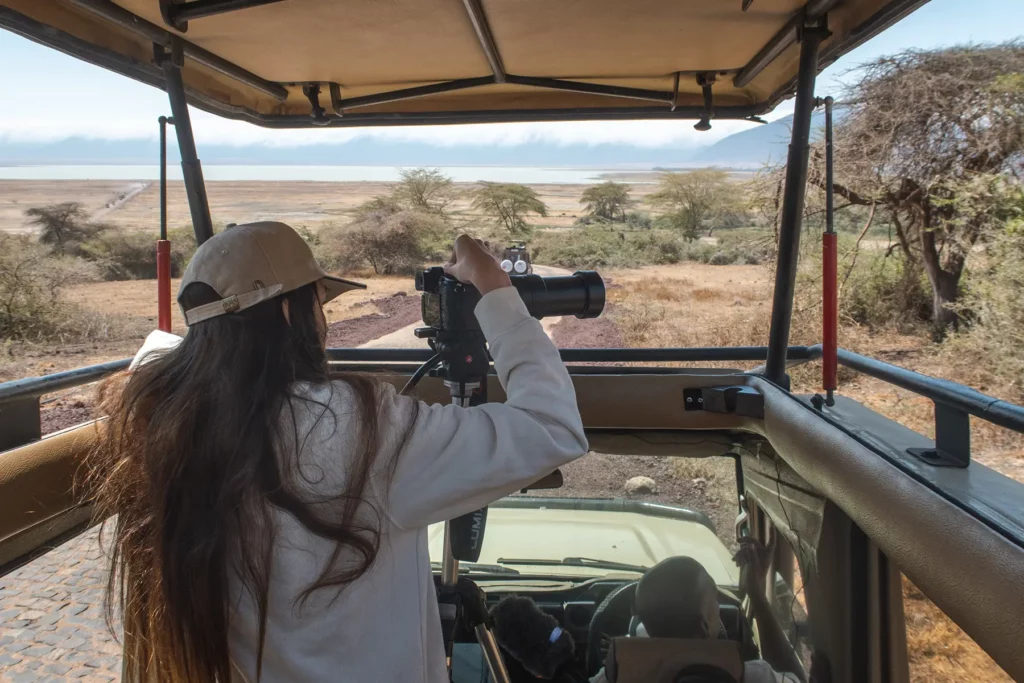
Private Tanzania Safaris
Private safaris are the best option for most travellers, as the entire safari experience is custom-made to your individual needs.
Pros of Private Safaris
- You can customise just about every part of your experience. You get to choose where you go, when you go there, which sightings to prioritise, and how long you stay at each sighting.
- You have ample room in the safari vehicle and can therefore ensure you’re always in the perfect place to watch the wildlife, without having to jostle with other passengers for the best view.
- Many safari companies keep their most knowledgeable guides for private safaris.
- Since your safari vehicle is private, you won’t waste time collecting and dropping off other passengers at their lodges before and after your game drives. This way you get to spend more time in the bush focusing the wildlife.
Cons of Private Safaris
- Private safaris tend to be more expensive than group safaris, particularly for solo travellers.
Conclusion on Private Safaris
I always recommend a private safari, if your budget allows. I find that private safaris almost always provide a more enjoyable and fulfilling experience, and for that reason are better value for money.
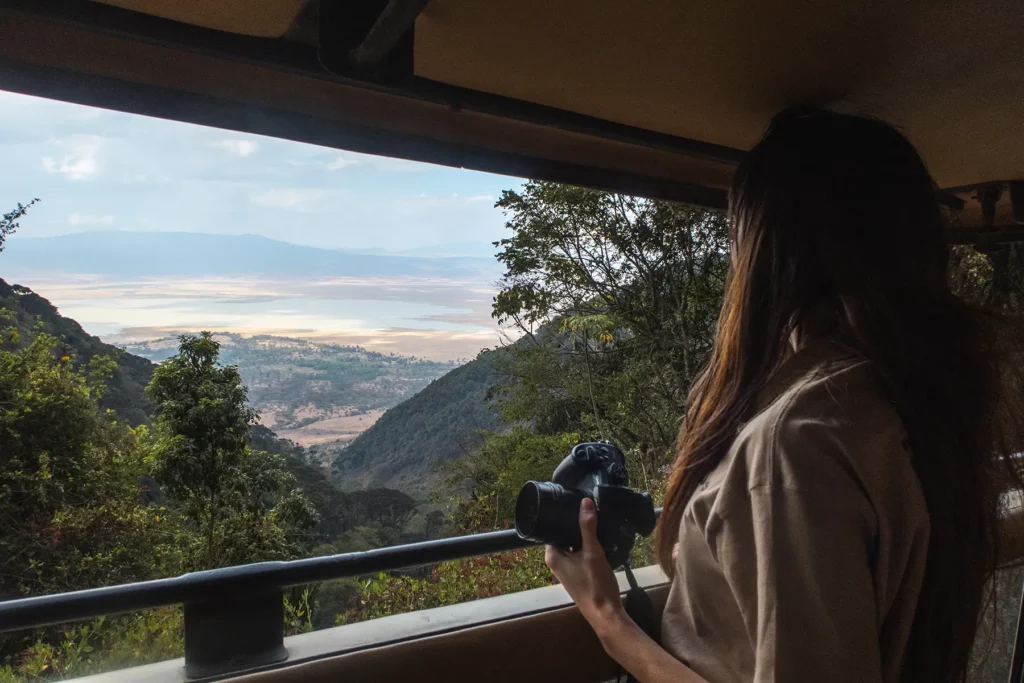
Group Shared Tanzania Safaris
Group shared safaris tend to be more popular with those on a tight budget, or for solo travellers who are interested in meeting fellow travellers on their game drives.
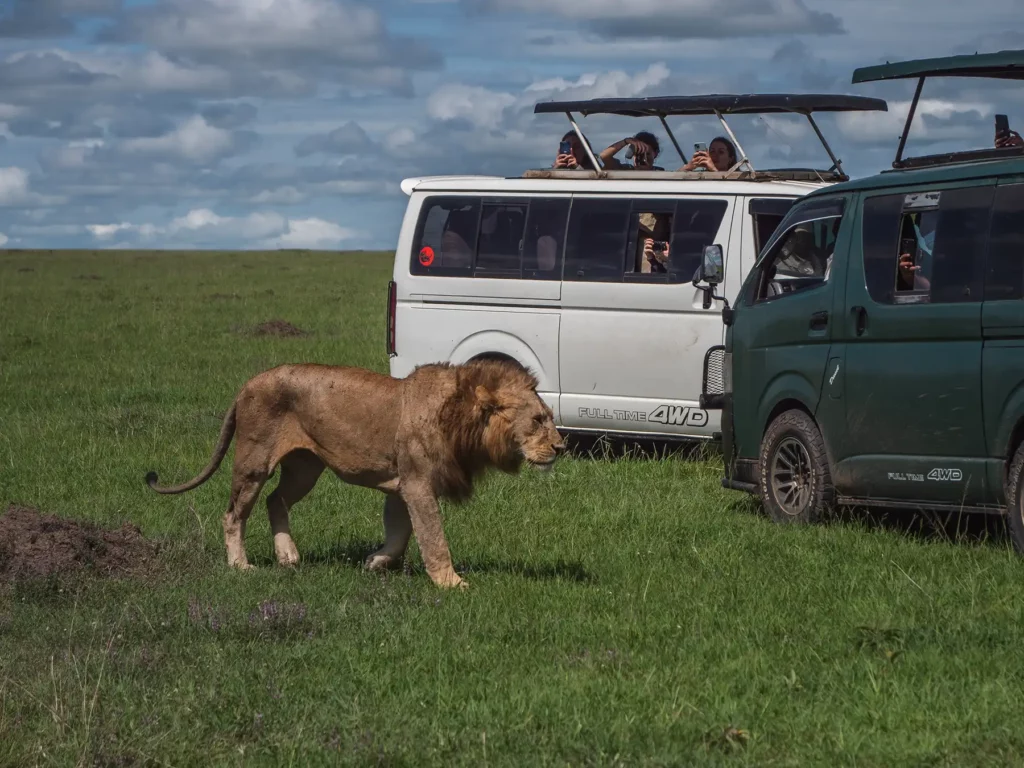
Pros of Shared Group Safaris
- The main appeal of shared safaris is that they are usually less expensive than private safaris, especially for solo travellers. Fixed costs such as your vehicle and driver guide are split between all members of the group, making this a more appealing option for solo travellers on a budget.
- This is a good option if you like to meet new people and share your travel experiences.
Cons of Shared Group Safaris
- Shared group safaris lack flexibility, running at set times and following a predetermined route.
- You have no say over which sightings to prioritise and how long you stay at each sighting.
- A full vehicle means that you may not always get the best seat. These vehicles sometimes also squeeze a third row of seats down the middle, restricting the views of those in the middle.
- There is often a fair amount of time-wasting at the start and end of each game drive, as you may have to drive from lodge to lodge collecting and dropping off all the passengers. This usually means that you all miss prime viewing times early in the morning and in the evening, when predators and other wildlife are more active.
- You have no say over which accommodation you stay at. For a safari that’s more cost effective than a private one, budget camping is the only option.
Conclusion on Group Shared Safaris
If you’re a solo traveler on a budget, shared group safaris can be a fair choice. However, they’re not ideal for most travellers. Sharing vehicles and having limited flexibility are major drawbacks for those who want a more personalised experience.
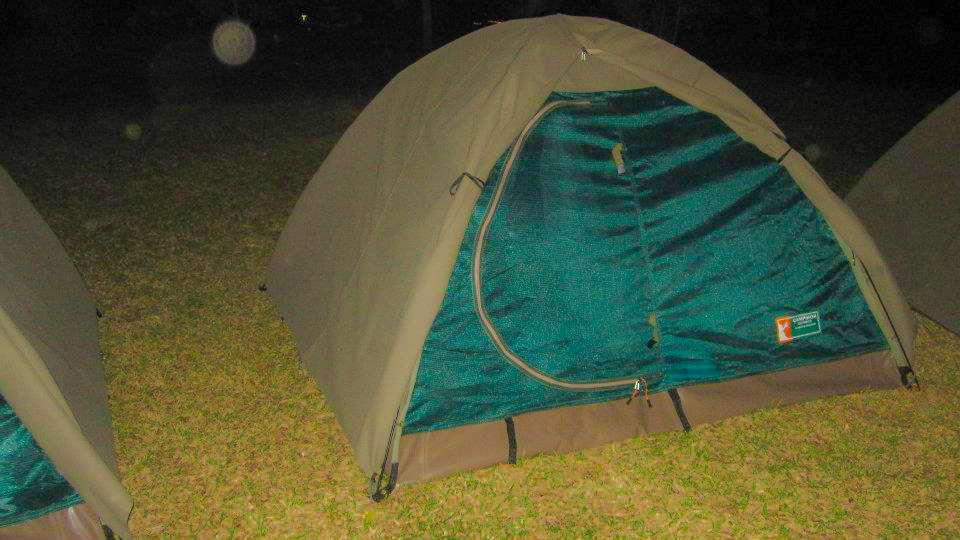
How Much Does a Tanzania Safari Cost?
A private safari in Tanzania typically starts at $350 per person per day. This price assumes budget accommodation but allows you to visit Tanzania’s best parks, including Serengeti and Ngorongoro Crater.
Your safari cost includes all accommodation, meals, park fees, the cost to hire the vehicle and driver guide as well as fuel.
Your safari price increases as you increase the level of comfort of your accommodation, with mid-range safaris starting at $450 per person per day.
Shared safaris come in a bit cheaper, starting at $250 per person per day. This price assumes basic camping accommodation.
Below you can view a chart of typical Tanzania safari costs based on the luxury level.
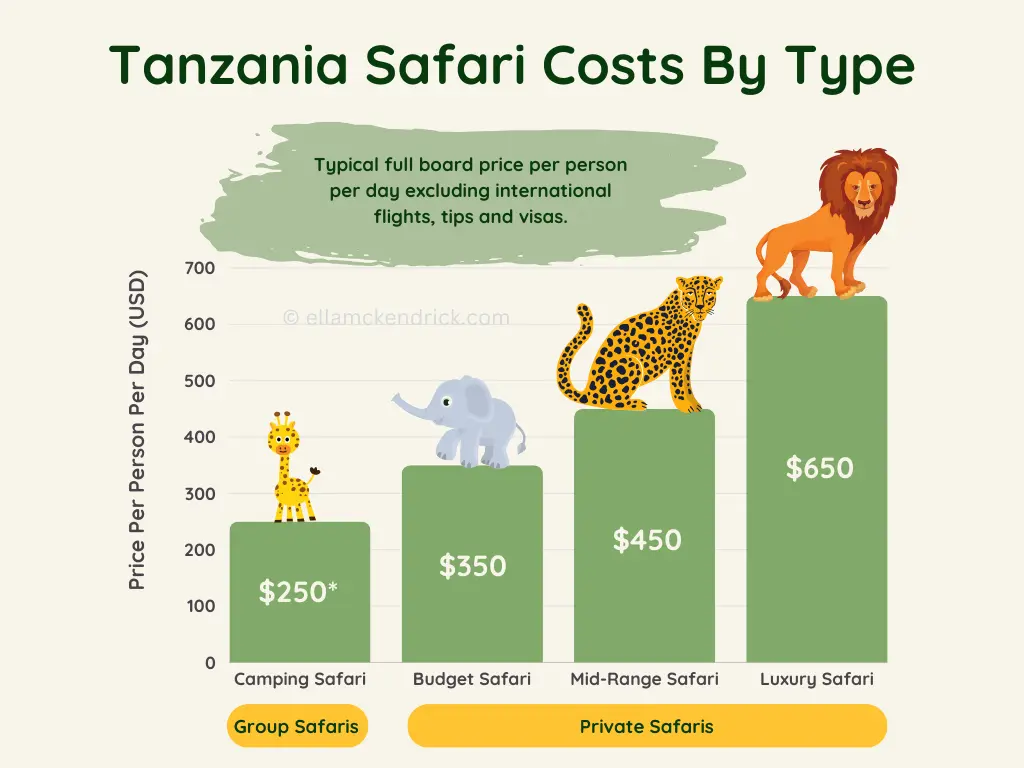
For an in-depth cost breakdown, you can have a look at my up-to-date guide to Tanzania safari costs.
Tanzania Safari Costs Breakdown
Around 60% of the cost of a private safari booked with a local tour operator is allocated to accommodation and park fees.
For example, a typical budget tented camp in Serengeti costs $150 per person per night and park fees to enter the Serengeti are $70 + 18% tax per person per day plus an additional $60 + 18% tax per person per night. If you add this all up, we’re already at just over $300 per person for this one day on safari, not even considering the costs for your vehicle, driver guide and fuel.
Once you factor in all the costs involved in the safari, the local tour operator is left with just over 3% profit. This is why local tour operators are such good value.
You can see the complete breakdown in the chart below.
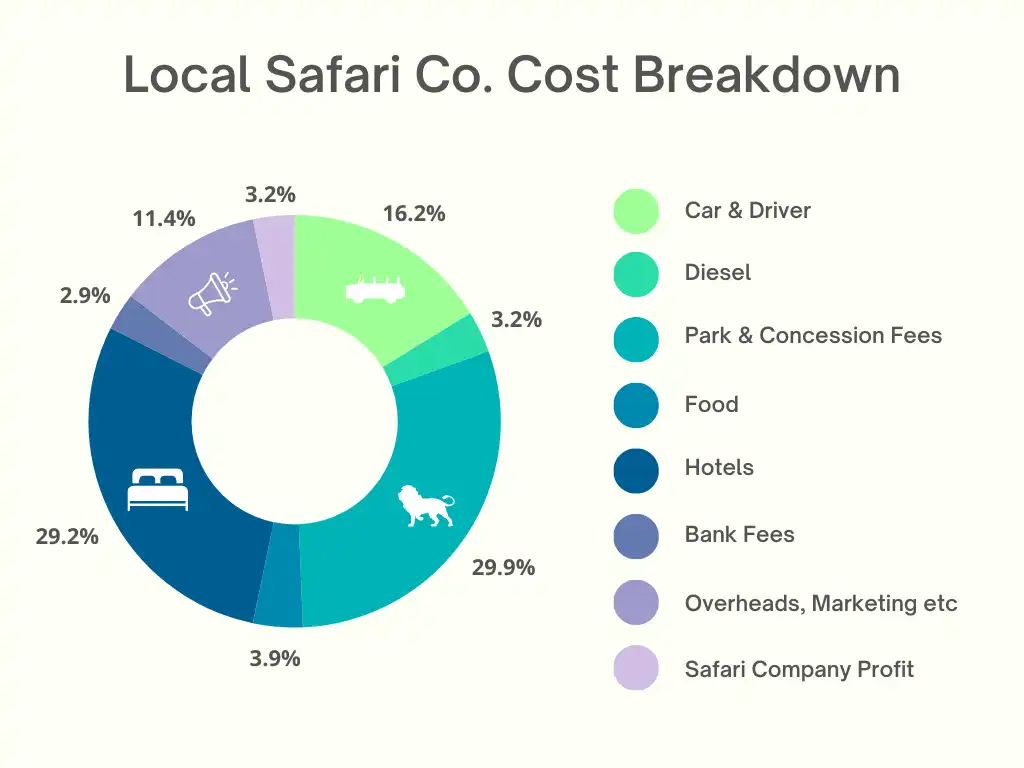
Factors Affecting Tanzania Safari Costs
There are a number of factors that can affect your overall safari cost, including the type of accommodation you stay at, how you book your safari and even the size of your group.
Let’s take a closer look at each of the key factors which will affect your safari cost below.
Jump to more information on each factor using the links below.
How you Book Your Safari
Booking your safari through a local tour operator as opposed to an international travel agent will be cheaper, with savings often up to 50%.
Booking a self-drive safari will be cheaper again although the price difference is pretty nominal as local tour operators are often able to book accommodation for a better price than you can due to their good relationship with the lodges.
In fact, a guest who recently booked their safari with one of my recommended local tour operators emailed me earlier this year saying they couldn’t believe the rate that the tour operator managed to secure them a lodge for, saying it was far cheaper than if they’d booked it themselves.
Below you can view a chart of typical budget safari costs based on the booking method.
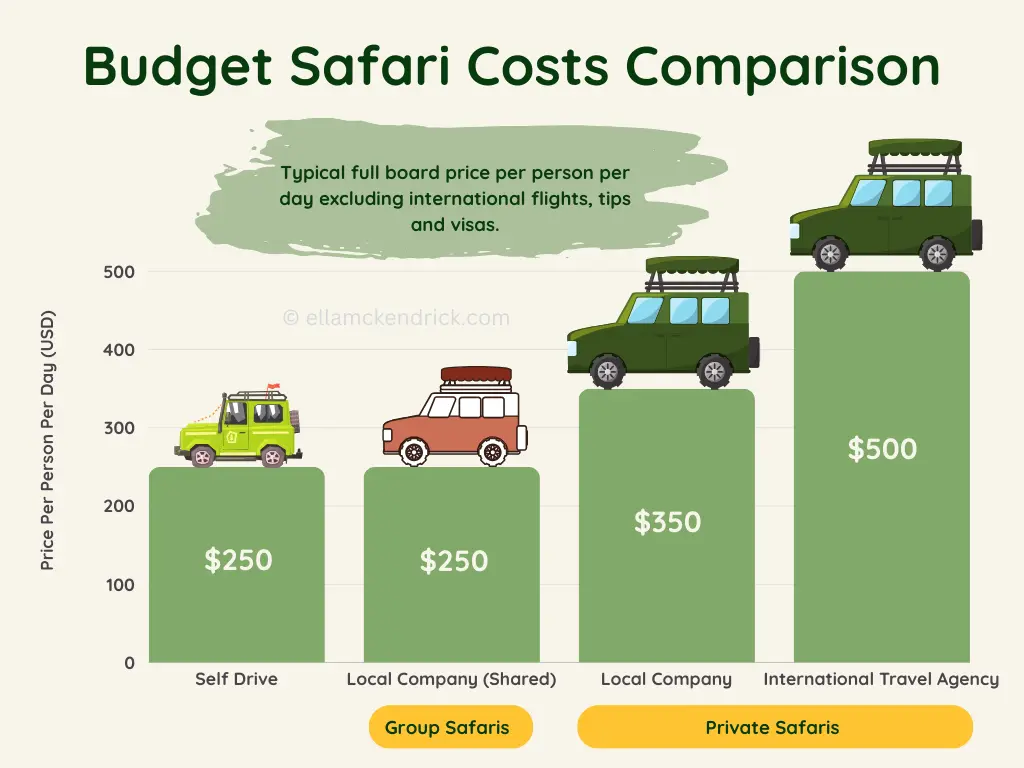
My Preference: Nowadays, I choose to book all my safaris through local tour operators. Even when I occasionally opt for fly-in safaris, I still rely on local tour operators for these bookings, as well as for game drives and other arrangements, as they handle everything, including airport transfers.
Accommodation Comfort Level
The comfort level that you opt for will have a huge impact on your overall safari cost.
A budget Tanzania safari starts at $350 per person per day compared to $450 per person for mid-range accommodation and $650 per person for luxury accommodation.
Mid-range and luxury accommodations have guaranteed private ensuite bathrooms. Whilst private bathrooms are common with budget accommodation, they’re not always guaranteed.
The main difference with the three options is the room comfort, quality of amenities and levels of service.
Below I’ll show a visual comparison of the different accommodation levels.
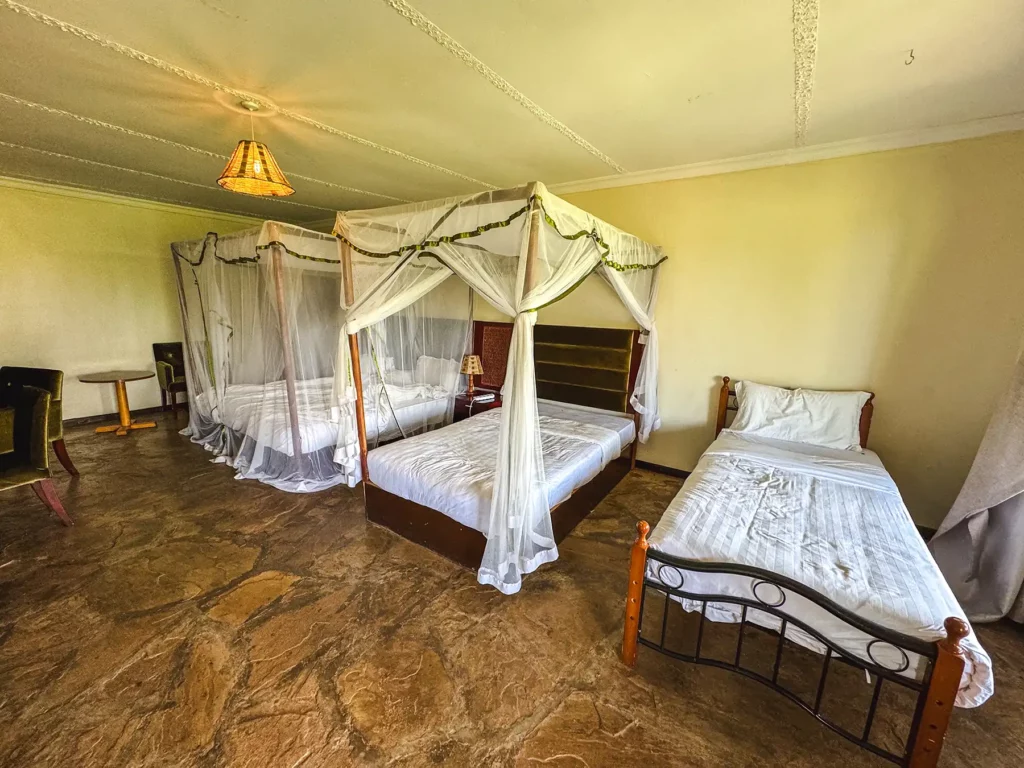
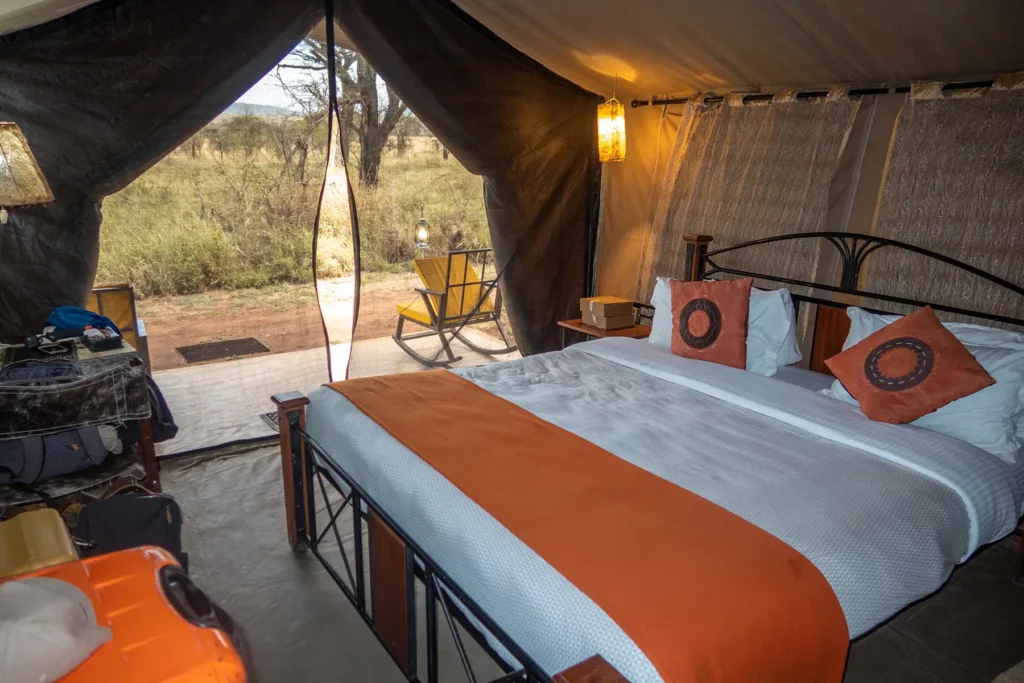
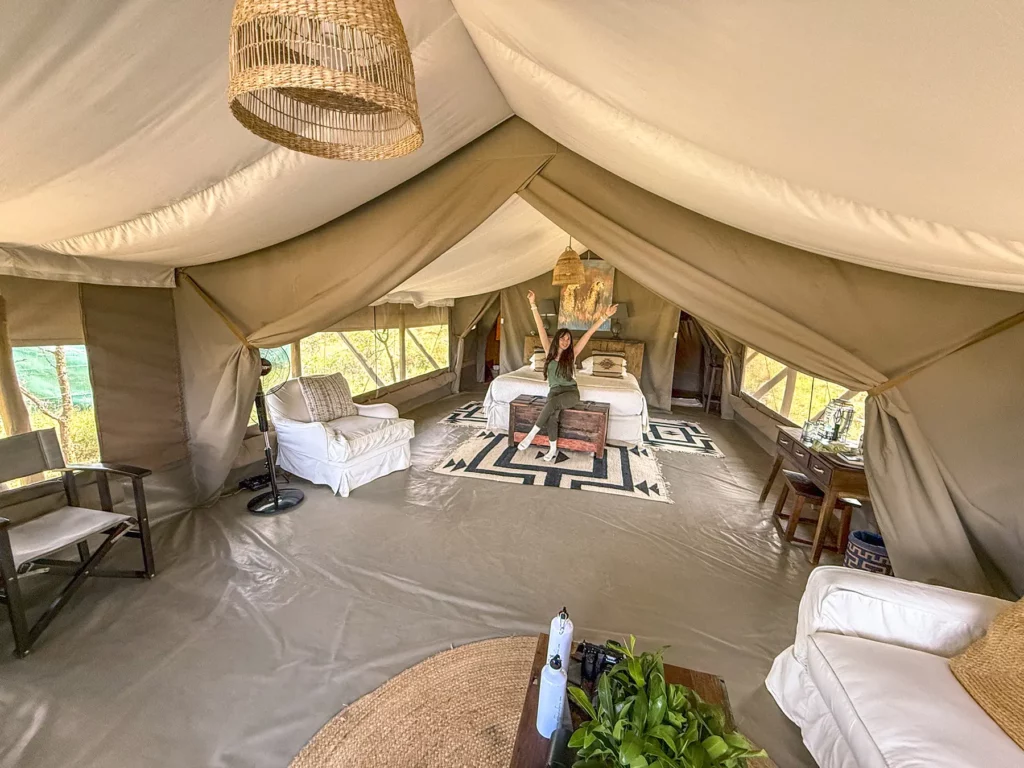
My Preference: If your budget allows it I’d personally opt for mid-range accommodation. My main reasoning for this is the food. The food on your safari is provided by your accommodation and the better the accommodation, the better the food. Better food typically means better hygiene standards and so the risk of getting sick on your safari is less. I’ve only ever had food poisoning from budget establishments in east Africa.
As you’ll be spending most of your days on safari, having a beautiful plush room isn’t essential. However, it may be nice to have a more luxurious hotel at the end of your safari so you can really unwind before going home.
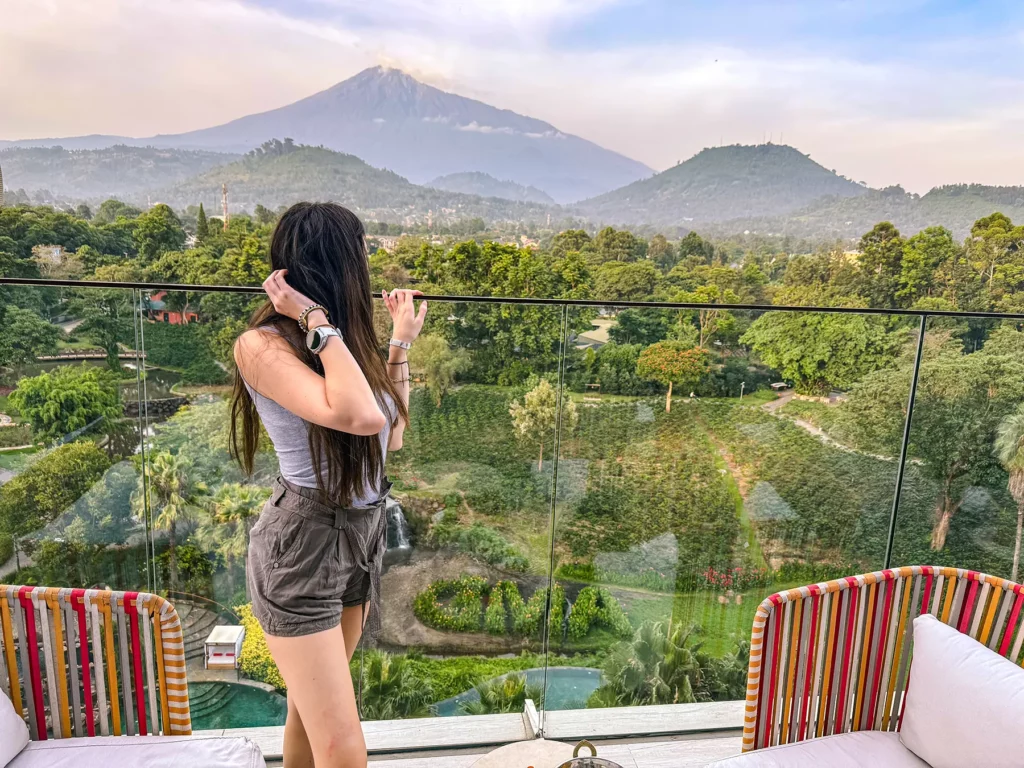
Time of Year
Tanzania’s peak season correlates with the long dry season and runs from June to the end of September, July and August being the busiest months of all. It may come as no surprise to hear that this is the most expensive time of year to visit with lodges being up to 40% more expensive than low season. The biggest price difference can be seen with luxury safaris.
Low season which takes place between mid-March and mid-May is the cheapest time of year to visit with lodges offering discounted stays. However it’s worth noting that some lodges close altogether for this period.
My Preference: In my opinion you can’t really go wrong with any time of year apart from mid-March to mid-May which are the wettest.
Additionally, unless the great wildebeest migration’s Mara River crossing is important to you, I’d personally avoid visiting during the peak months of July and August so you can beat the crowds.
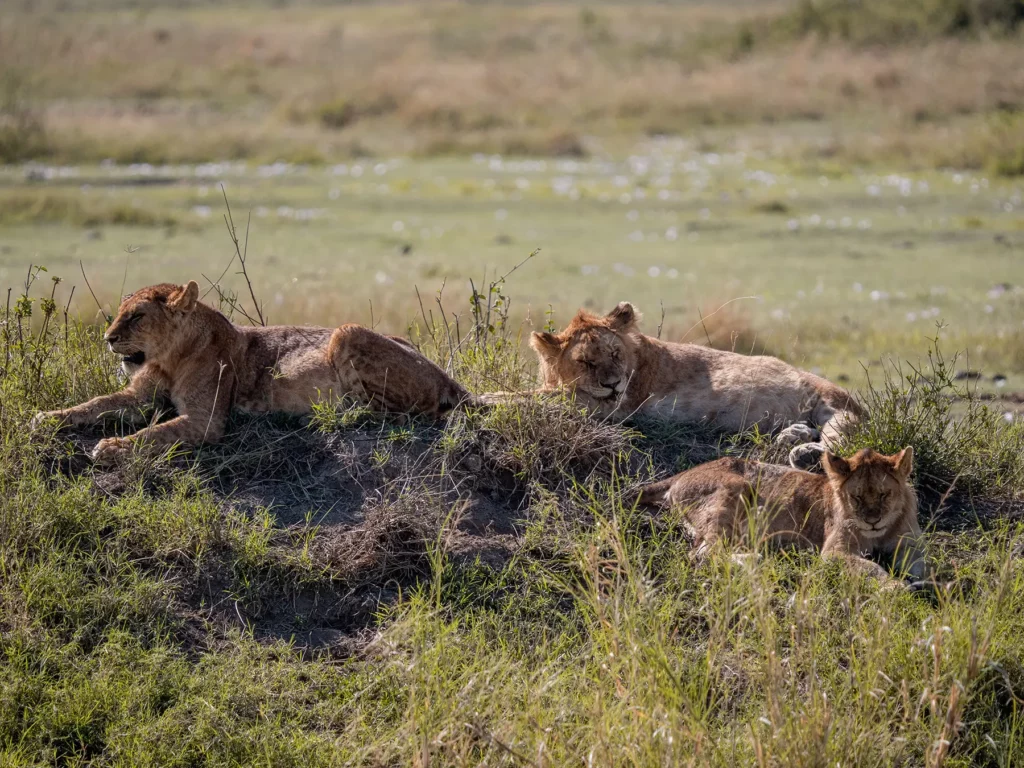
Mode of Transport Between Parks
There are two key ways to travel between parks: by road or by air.
Travelling by road is the most cost-effective option. It does however take far longer with some journeys taking around 8 hours (Arusha to Central Serengeti). Much of the roads are in poor condition and you can expect to experience the famous ‘African massage’, especially on the road to the Serengeti!
However, it’s not all bad! One thing I love about travelling by road is the views of the rolling countryside and quaint villages. If you’re on a private safari then you have the freedom to stop whenever you see something interesting. This has led me to explore road-side markets, capture photos of stunning viewpoints and interact with locals.
If you want to maximise your time on safari or merely don’t fancy the idea of being in a car for hours on dirt roads, flying between parks may be best for you.
All of Tanzania’s key parks and reserves house airstrips which makes it extremely convenient to fly from location to location. A flight typically takes around 1-2 hours.
The main drawback of flying is the cost. A flight costs around $300 per person.
Another drawback is the luggage limitation. Depending on which airline you fly with you typically have between 15kg – 20kg of baggage allowance, including 5kgs of hand luggage. You can only take soft-sided bags.
My Preference: I tend to fly if my road travel alternative is anything over 6 hours. However, this is very much a personal preference.
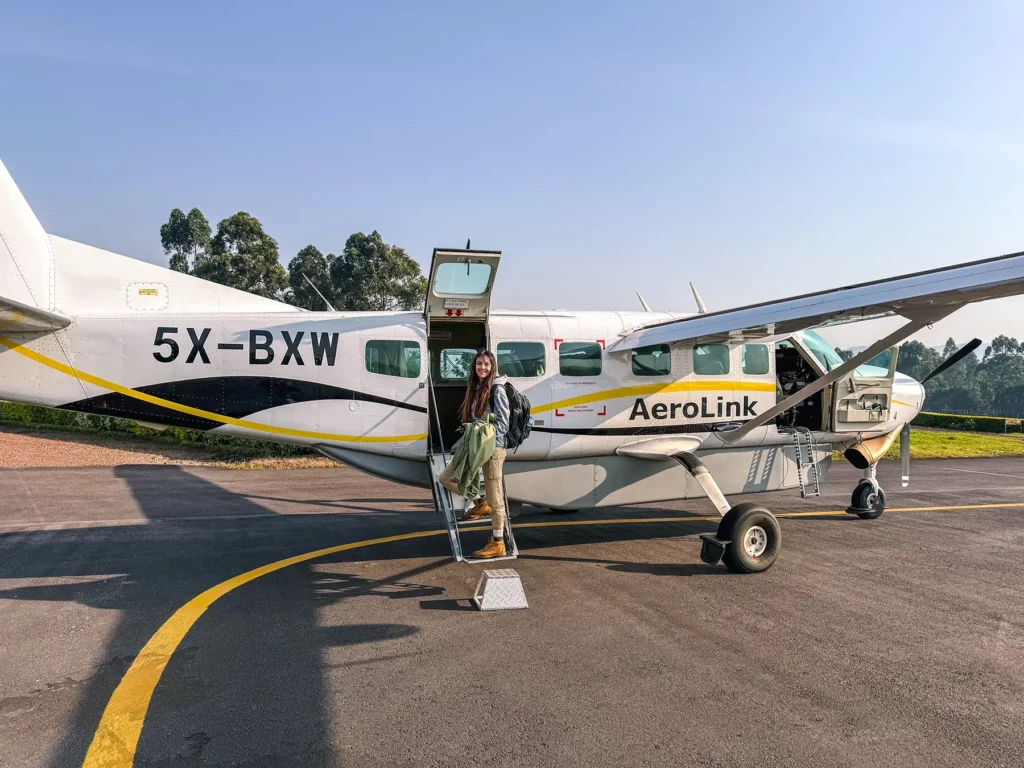
Group Size
The number of people in your safari party significantly influences individual costs.
Solo travellers can expect to pay up to 40% more for the safari as they don’t have anyone to share fixed costs like the vehicle and driver with.
In contrast, savings can be had if you are travelling as part of a large group. The most optimal number for your safari is 7 people as most vehicles can take 7 guests. The costs of the vehicle, driver and fuel can be split amongst all 7 guests.
My Preference: I personally like a maximum of 2 or 3 people, including myself in the back of the safari truck to allow me to move around freely for sightings on both sides of the truck, and to take photos.
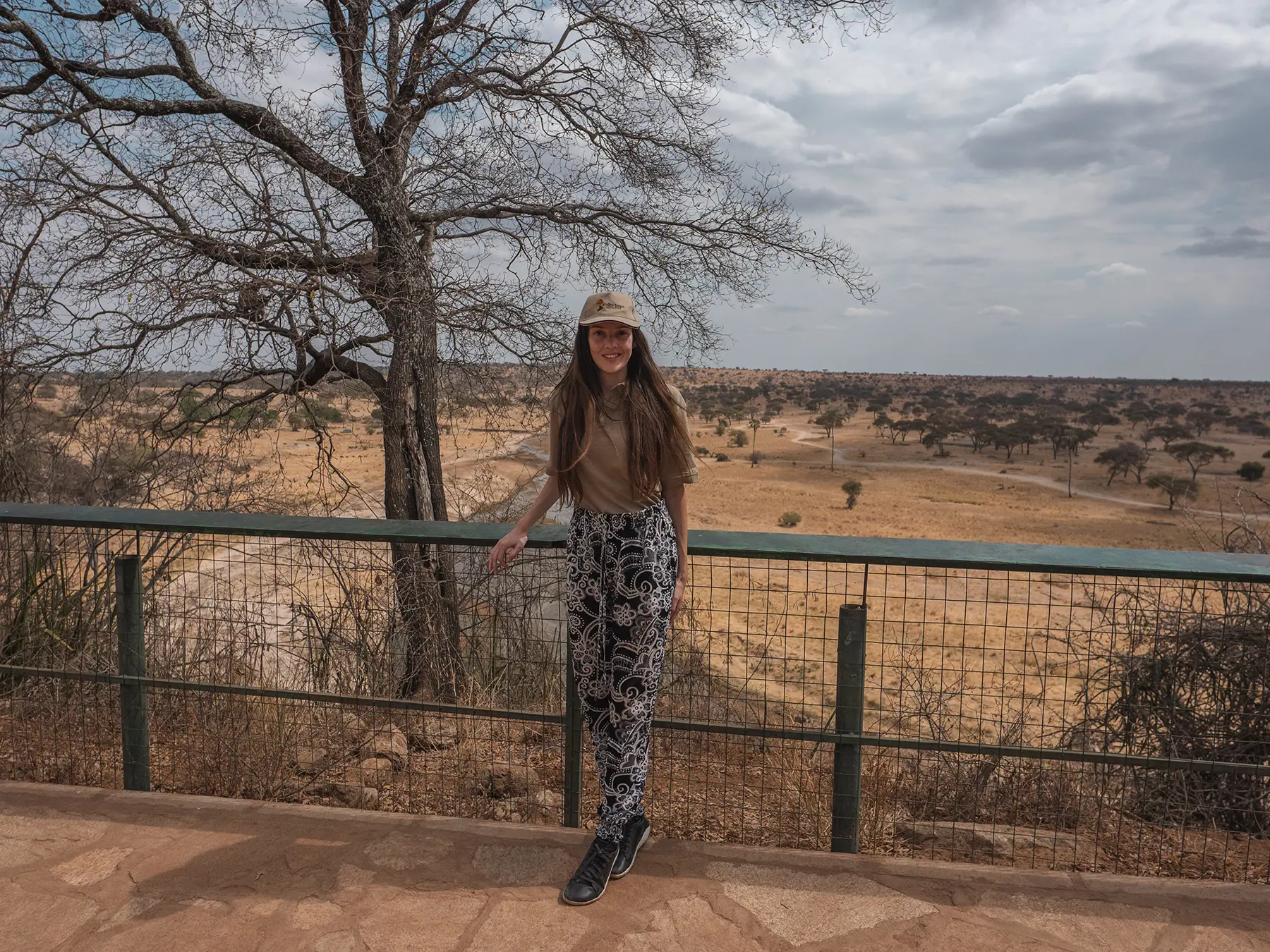
Best Time to Visit Tanzania
Tanzania is essentially a year-round safari destination.
There are four distinct seasons that you can experience and each one offers different pros and cons.
I’ve ranked each month of the year for safari in Tanzania as Excellent, Good, OK, or Poor, based on typical game viewing and weather conditions.
If you want to dig deeper, the chart below shows what you can expect in each month in Tanzania in terms of cost, weather, wildlife and hiking Kilimanjaro.
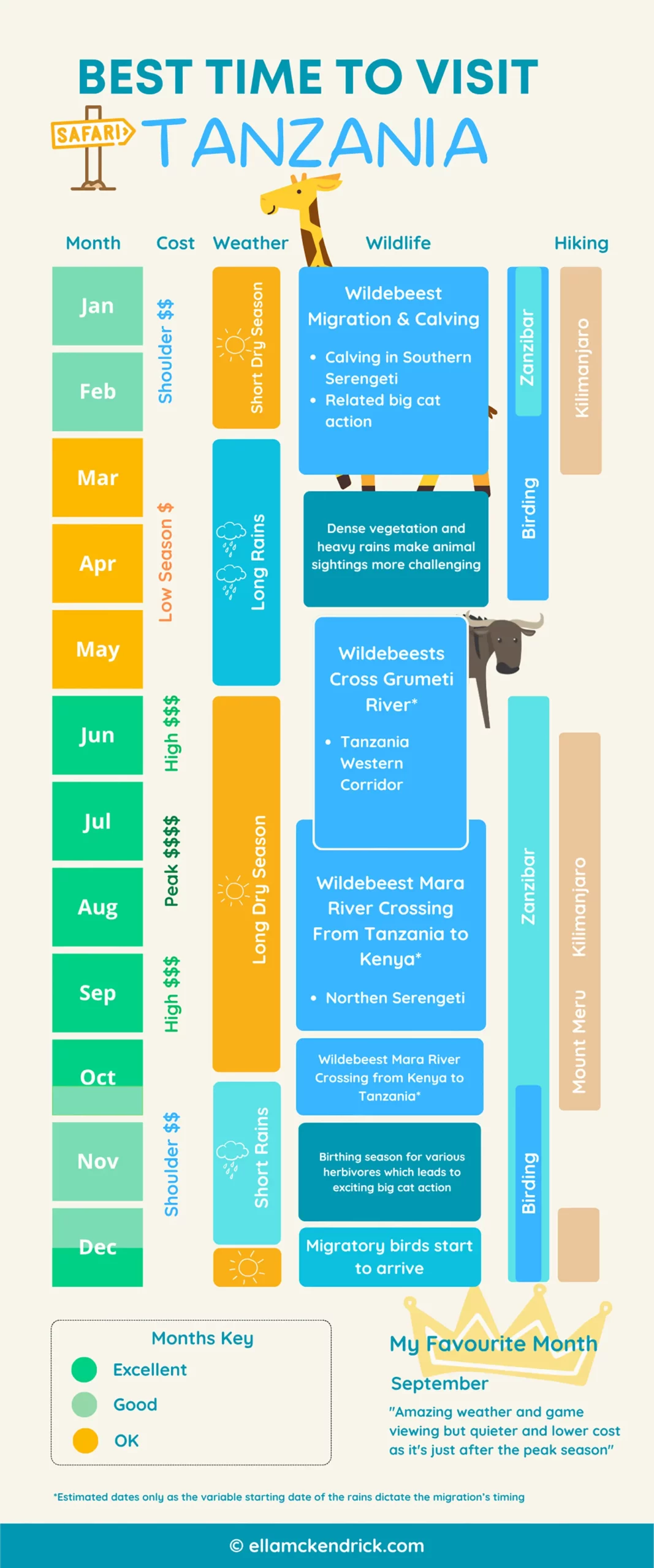
For more information take a look at my ultimate guide on the Best Time to Visit Tanzania.
My Preference: In my opinion you can’t go wrong with any time of year apart from mid-March to mid-May which is the long rainy season.
Let’s look at the pros and cons associated with each season.
Jump more information on each of the seasons using the links below.
The Short Dry Season (December – February)
The Long Rainy Season (March – May)
The Long Dry Season (June – September)

The Short Dry Season (December – February)
The short dry season is best for visitors who want to experience pleasant weather but without the crowds of peak season. The wildebeest calving season also takes place at this time of year, a highlight of the great migration.
This is the second most popular time of year to visit as the weather is sunny and dry (with minimal chances of rain) and wildlife sightings are abundant.
Quick Facts
Prices: Moderate.
Weather: Sunny, dry days with minimal chance of rain. Temperatures range from lows of 15°C (59°F) at night to 30°C (86°F) in the day. The hottest time of year.
Wildlife: Lots of baby animals due to the fresh grass growth and big cats are easier to spot against the green. Vegetation is denser than the long dry season and animals are more spread out so their movements aren’t as predictable.
Birding: Migratory species arrive from Europe and Asia, and the breeding season for resident bird species makes it a fantastic time for bird-watching.
Unique features: The great wildebeest migration calving season starts in mid-January. Black rhinos are easier to spot in Ngorongoro Crater as they feed on the fresh grass in the open.

Pros of The Short Dry Season (December – February)
- Excellent game viewing
- Consistently warm temperatures
- Minimal rainfall
- The wildebeest calving season
- Less busy than the long dry season
- Arrival of migratory birds from Europe and Asia, and breeding season for resident bird species
- Black rhinos are easier to spot in Ngorongoro Crater as the fresh, long grass brings them out into the open to graze
Cons of The Short Dry Season (December – February)
- Hottest time of year
- Abundance of water sources mean animal movements aren’t as predictable as the long dry season
- Thicker vegetation due to recent rainfall makes wildlife spotting a bit tougher (having an experienced guide is important)
- More chance of rain than the long dry season
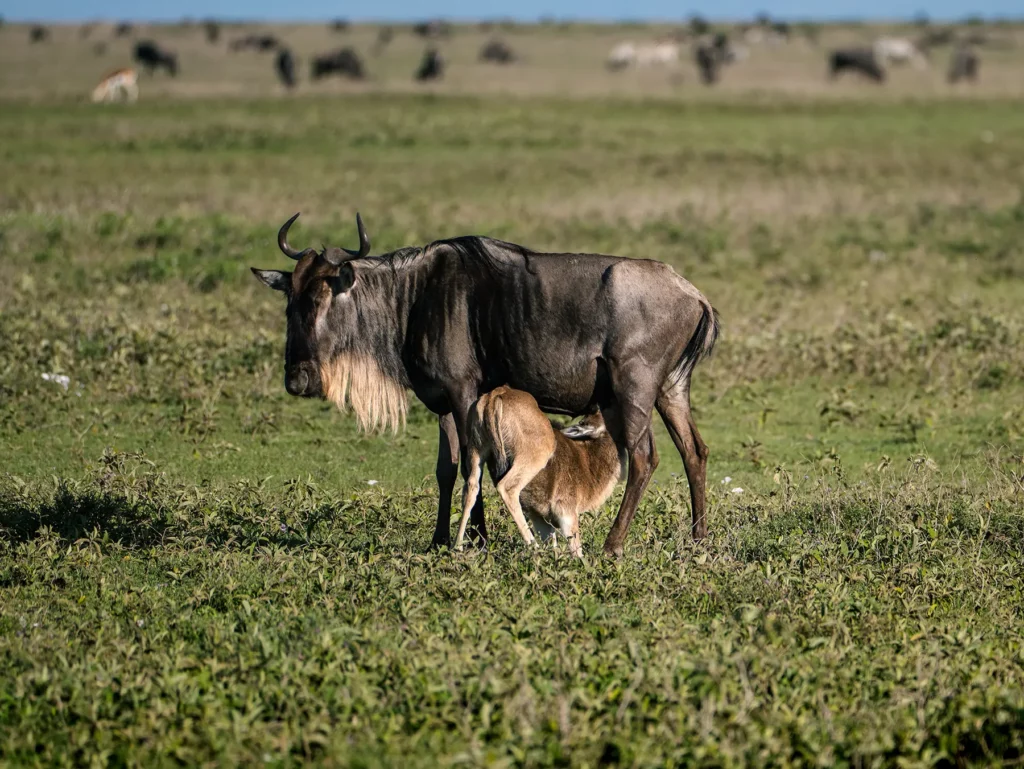
My Personal Experience Visiting in The Short Dry Season
You can watch a video of my personal experience going on a Tanzania safari in the short dry season below.
The Long Rainy Season (March – May)
The long rainy season is most suited to adventurous travellers who are looking to benefit from budget-friendly prices and who don’t mind the inconveniences that come with travelling at this time of year.
This is low season in Tanzania. Prices are at their lowest, parks are at their quietest and the weather is at its worse. The rainy season is in full swing with downpours likely on most days. Flooding is a possibility.
Quick Facts
Prices: At their lowest.
Weather: The wettest time of year. Daily downpours are heavy and intense. Temperatures average 15°C – 28°C (59°F – 82°F) but can be higher.
Wildlife: Game viewing during the rainy season can be more challenging due to the heavy downpours, although the wildlife remains plentiful throughout all the parks. Foliage is dense which can make spotting more challenging.
Birding: Migratory species from Europe and Asia are still here, as well as resident bird species, making it a fantastic time for bird-watching.
Unique features: Black rhinos are easy to spot in Ngorongoro Crater as the fresh long grass brings them out into the open to graze.
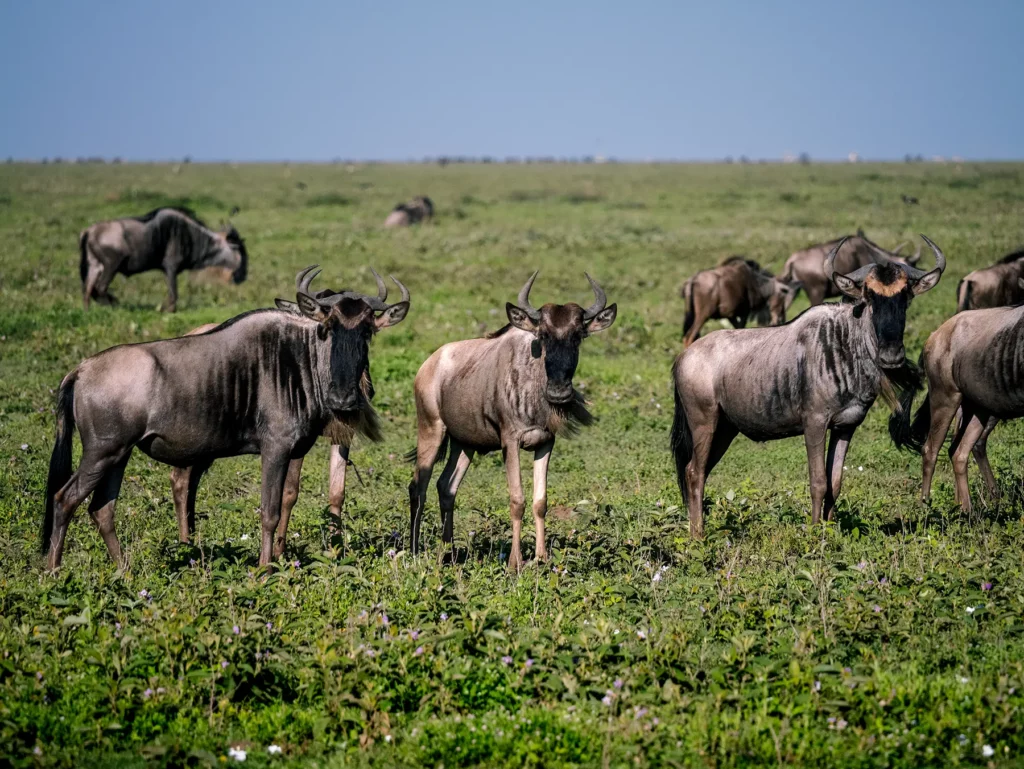
Pros of The Long Rainy Season (March – May)
- Prices are at their lowest
- Beautiful green landscape
- Less visitor numbers
- Baby animals are plentiful
- One of the best times of year for bird-watching
- Black rhinos are easier to spot in Ngorongoro Crater as the fresh long grass brings them out into the open to graze.
Cons of The Long Rainy Season (March – May)
- Rain affects viewing conditions
- Flooding is a possibility and makes some roads impassible
- Some camps and lodges close altogether
- Abundance of water sources mean animal movements aren’t as predictable as the dry season
- Thicker vegetation due to recent rainfall makes wildlife spotting a bit tougher (having an experienced guide is important)
- Mosquitos are most abundant
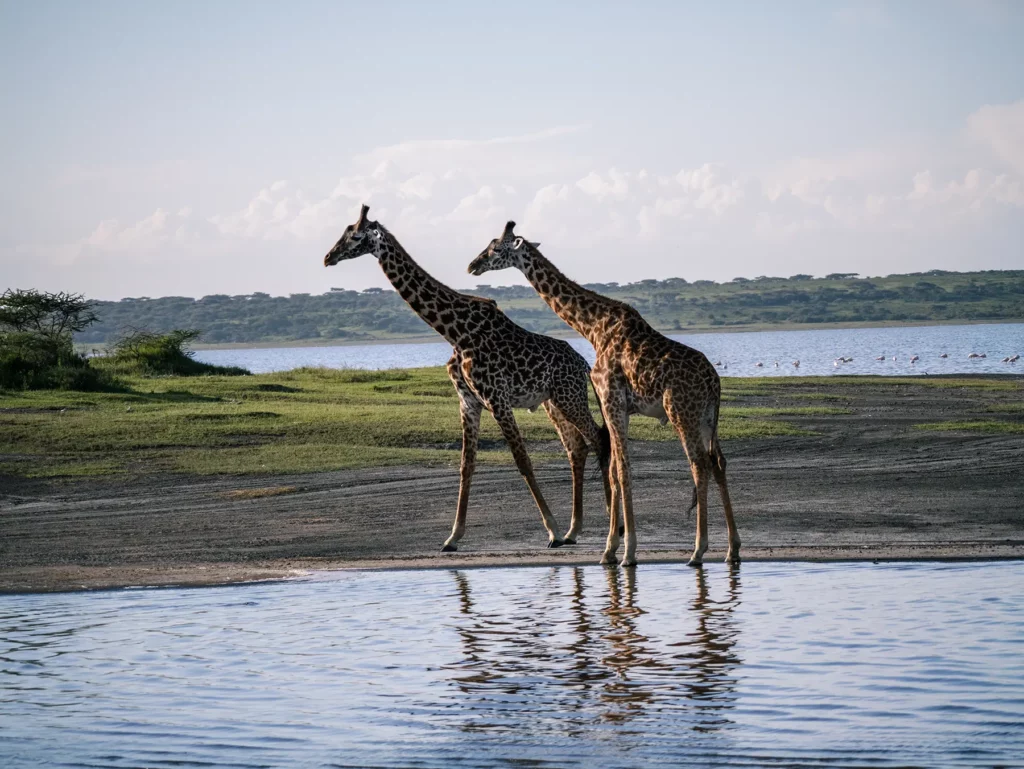
The Long Dry Season (June – September)
The long dry season is best for those who are keen to see the famous Mara River crossing part of the great migration. It’s the most popular time of year to visit Tanzania. It has the driest and most pleasant weather.
The popularity of this time of year means it’s the busiest and most expensive time of year to visit.
Quick Facts
Prices: High.
Weather: Sunny, dry days with minimal chance of rain. Temperatures range from lows of 10°C (50°F) at night to 25°C (50°F) in the day. The coolest time of year to visit.
Wildlife: The lack of vegetation makes animals easy to spot. Wildlife typically congregates around the last remaining water sources so they’re easier to find.
Birding: The migratory birds will have left, leaving just the resident species. There are still many birds to be found.
Unique features: The great wildebeest migration starts to cross the crocodile-infested Mara River from mid-July.
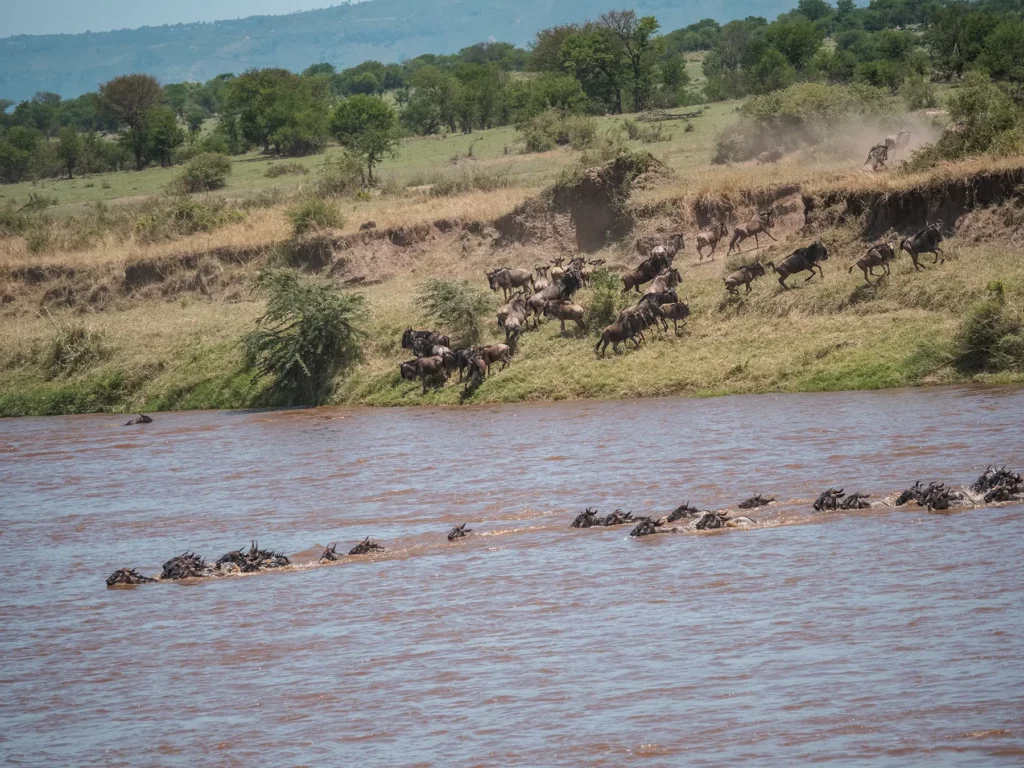
Pros of The Long Dry Season (June – September)
- Days are dry and sunny with minimal chances of rain
- Temperatures are largely pleasant
- A lack of vegetation makes wildlife easy to spot
- Wildlife movements are predictable as they congregate around the last remaining water sources
- The peak of the great migration, the Mara River crossing, takes place from mid-July onwards
Cons of The Long Rainy Season (March – May)
- Prices are at their highest
- Parks are at their busiest
- The most challenging time of year to spot black rhinos in Ngorongoro Crater
- Many of the best lodges sell out up to a year in advance

My Personal Experience Visiting in The Long Dry Season
You can watch a video of my personal experience going on a Tanzania safari in the long dry season below.
The Short Rainy Season (October – November)
The short rainy season is best for those who want to beat the crowds whilst still experiencing largely pleasant weather and consistently good wildlife sightings.
This time of year strikes the perfect balance between good weather and less crowded parks. Wildlife remains relatively consistent throughout the year.
Quick Facts
Prices: Moderate.
Weather: Dry sunny mornings with a chance of rain in the afternoons. Temperatures range from lows of 10°C (50°F) at night to 25°C (50°F) in the day.
Wildlife: Herbivores start to give birth meaning there are lots of baby animals around and related predator action. Lush, green landscapes may make wildlife slightly more challenging to spot. However, big cats stand out more against the green.
Birding: The migratory birds start to arrive. It’s also flamingo breeding season and they can be seen in huge numbers on Lake Natron.
Unique features: The great wildebeest migration Mara River crossing can often still be seen until mid-October.
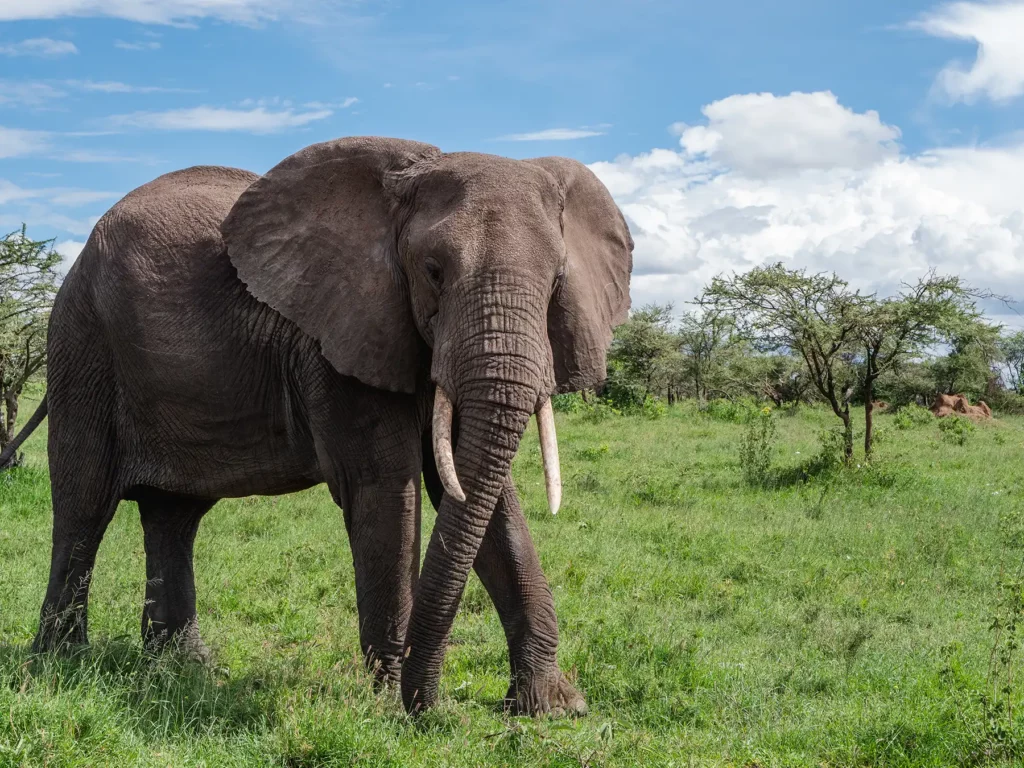
Pros of The Short Rainy Season (October – November)
- Prices are more favourable than peak season
- Parks are significantly quieter than peak season
- Lush greenery is great for photographs
- Rain is typically limited to afternoons meaning mornings are often dry and pleasant
- Herbivores start to give birth which means lots of baby animals can be seen as well as related predator action
- Black rhinos are easier to spot in Ngorongoro Crater than in the dry season
Cons of The Short Rainy Season (October – November)
- Rain is a possibility, especially in the afternoons
- Denser vegetation can make wildlife a little tricker to spot
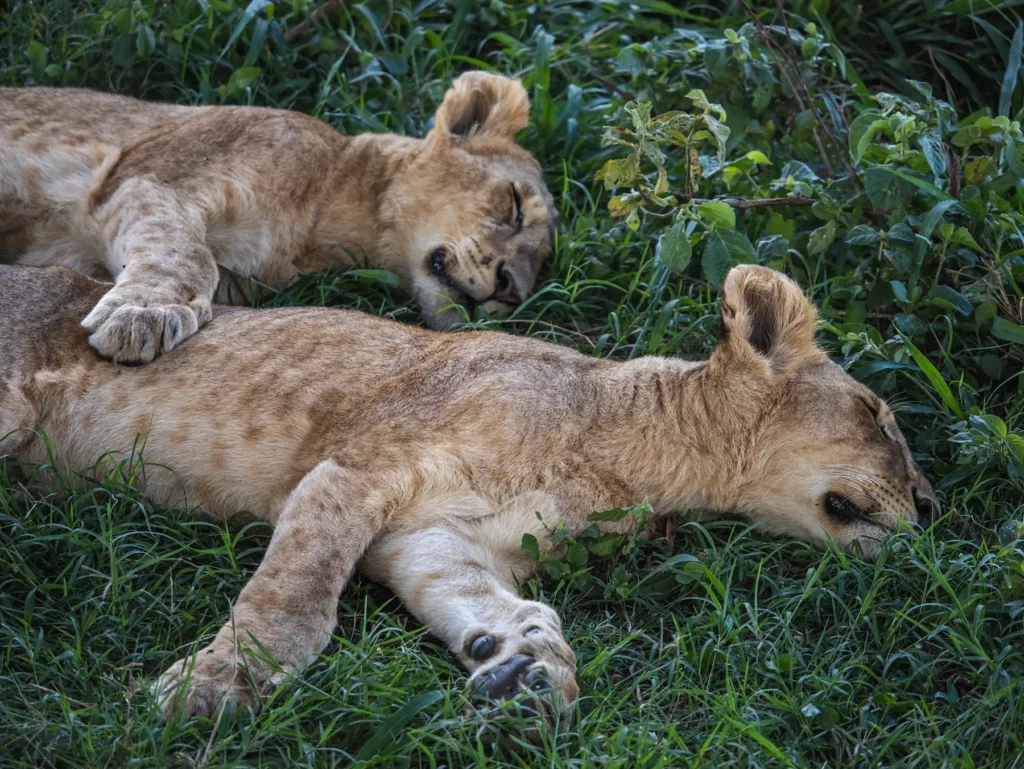
My Personal Experience Visiting in The Short Rainy Season
You can watch a video of my personal experience going on a Tanzania safari in the short rainy season below.
How Long to Spend in Tanzania
I highly recommend spending at least 7-10 days on safari in Tanzania. This enables you to visit Tanzania’s flagship parks without rushing around.
If time allows it, 2-weeks allows you to explore Tanzania in more depth, visiting some hidden gems as well as the most popular parks.
For the ultimate Tanzania safari, visiting both the highlights in the north and south of the country, a 3-week itinerary is ideal. Tanzania’s southern circuit is remote and so is more suited to staying in the country for an extended period of time.
If you don’t have much time to spend in Tanzania don’t worry! You can still visit the highlights of Tanzania in a shorter time-frame.
A 5-day itinerary can still allow you to visit Tanzania’s best parks but just in a shorter period of time than a longer itinerary.
Finally, a 3-day itinerary is possible. You will need to have more of a regional focus or fly between parks to ensure you are able to enjoy the locations you visit.
My preference: I like to spend between 7 days and 3 weeks in Tanzania depending on whether I’m focusing on of area of the country or covering all the key parks and reserves.

Embark on the Safari of Your Dreams
Save time and ensure an incredible safari experience by getting quotes from my recommended local safari companies
I’m here to make booking your perfect safari quick, easy and risk-free.
Join the rapidly growing tribe of over 1,000 travellers who’ve booked their dream safari using my insider tips and recommendations.

It takes under 60 seconds to fill out the form and in under 48 hours you will receive multiple, no-obligation proposals from my favourite local tour operators with glowing online reviews.
Get your free no-obligation safari quotes and my top safari tips and recommendations
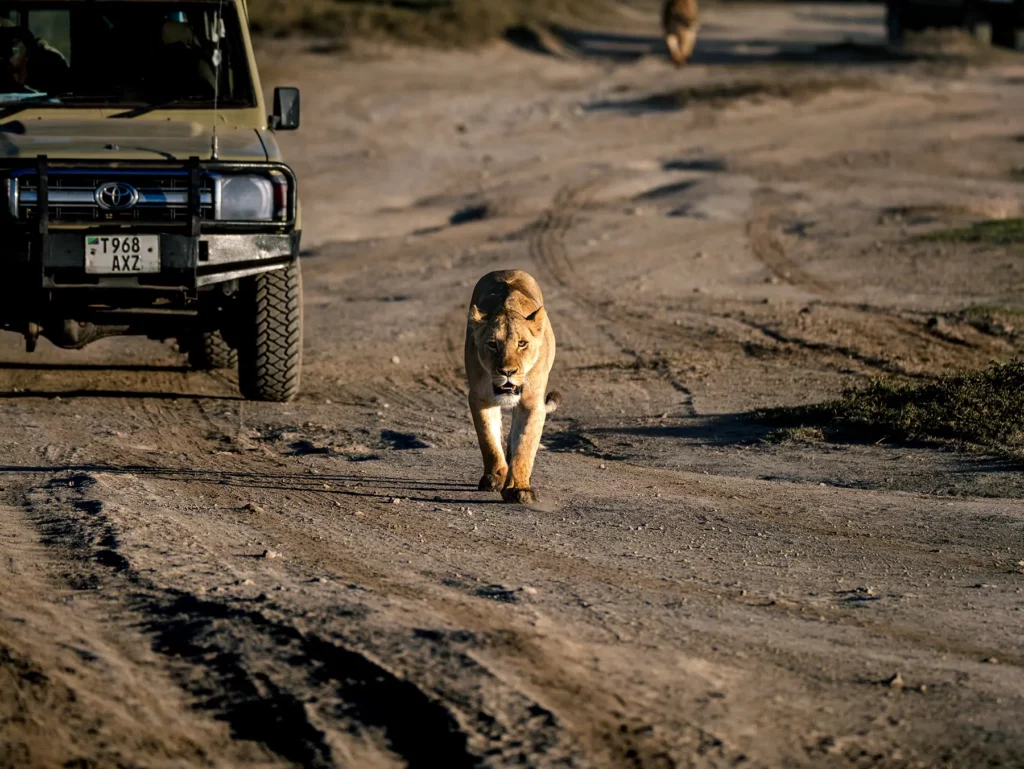
The Great Migration in Tanzania
Without a doubt one of the highlight of people’s Tanzania itineraries and key reason for visiting is to see the famous wildebeest migration.
The second largest terrestrial mammal migration consisting of over two million wildebeests as well as hundreds of thousands of zebras and gazelles is one of those sights that will stay with you forever.
You can read my comprehensive guide to the great wildebeest migration. However, I’ll give you a quick overview of where the migration is at different times of year here.
The great wildebeest migration has no distinct beginning or end. The animals move in a circular motion across the Serengeti in Tanzania and Maasai Mara in Kenya in a journey that takes a year.
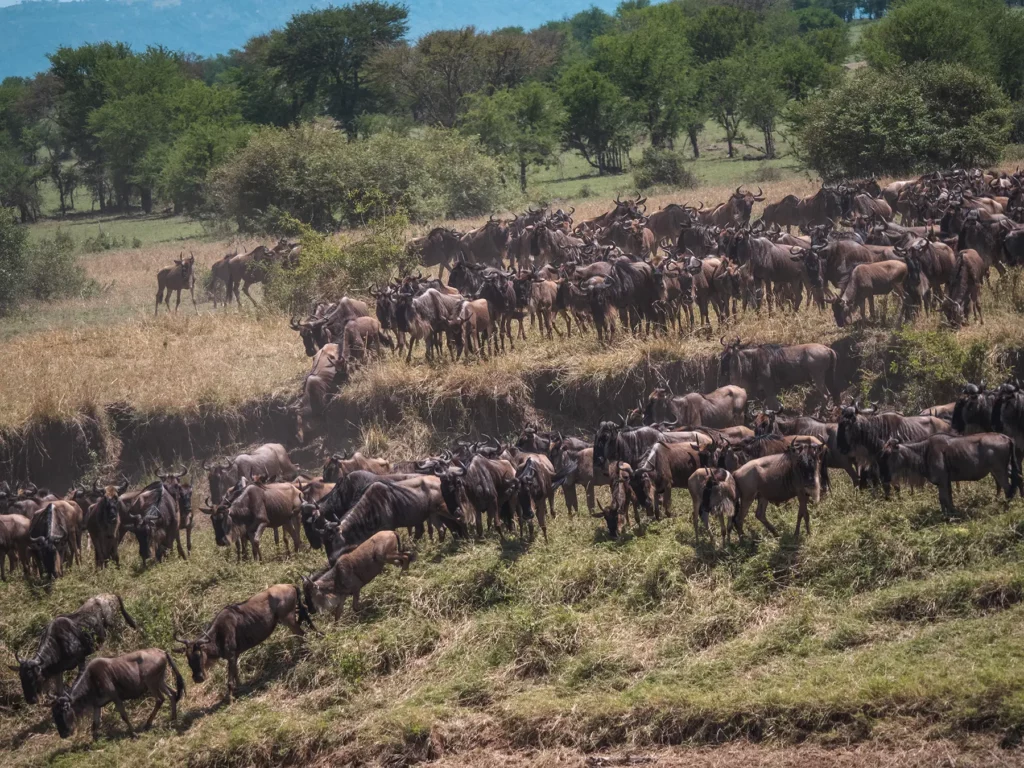
The start of the new year marks the calving season which takes place in southern Serengeti. From mid-January to mid-March the wildebeests give birth. A whopping 8,000 calves are born each day!
Once the calves are strong enough and the grass starts to dwindle, the great herds trek to the Western Corridor around late-April, where they then make their first river crossing. The Grumeti River crossing sees the animals dodge strong currents and snapping crocodiles.
By late-July the herds typically reach the banks of the mighty Mara River in northern Serengeti. This is where the most dramatic river crossings take place as the wildebeests leap down the steep banks and frantically make their way to the other side.
The river crossings can go on for months as the wildebeests travel in columns rather than one group. They also continually cross back and forth between the Serengeti and Maasai Mara until around mid-October when they start to head back south towards their calving grounds.
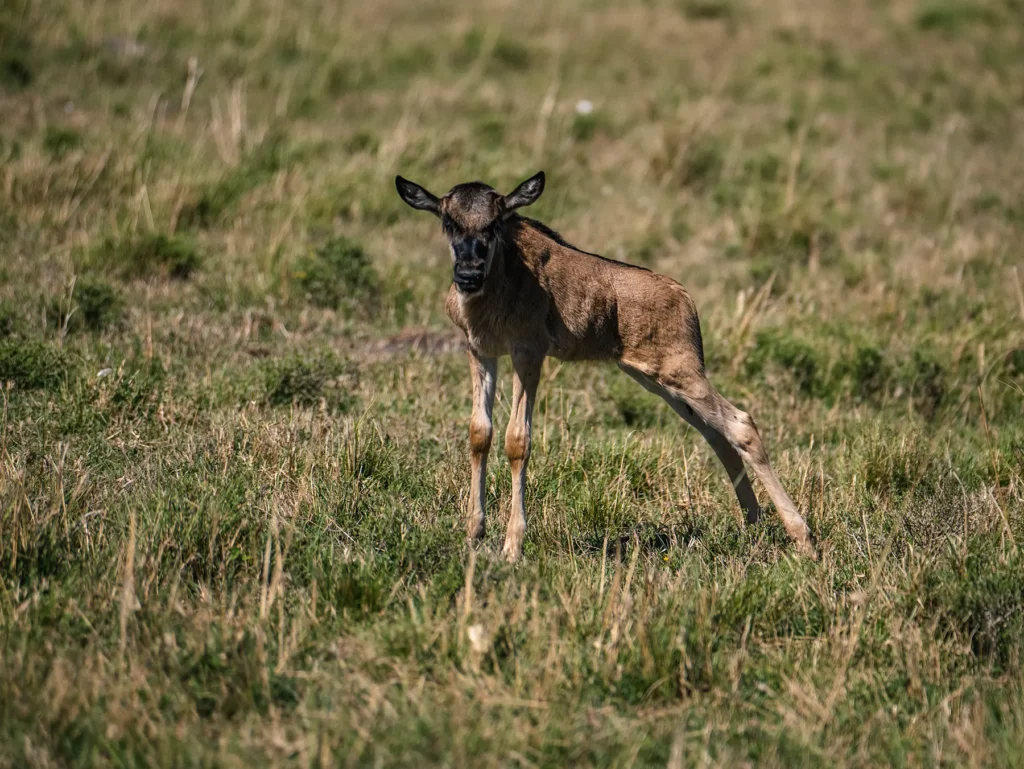
What Are The Best National Parks and Wildlife Reserves In Tanzania?
With over 40% of the country set aside for wildlife, it can certainly be daunting to know exactly where to prioritise visiting. 23 national parks and countless private reserves span across the country, each with their own unique draws.
Below we’re going to explore my favourite national parks and how you can visit them on your Tanzania safari.
You can jump to more information on each of my favourite national parks and reserves using the links below.
1. Serengeti National Park
Serengeti National Park is Tanzania’s most famous and popular park. Home to healthy numbers of the Big Five and the stage of the great wildebeest migration, the Serengeti really has it all!
Read my ultimate guide to Serengeti National Park or, if you’re in a rush, I’ve included some quick facts below.
What Wildlife can you See in Serengeti National Park?
Serengeti National Park is a wildlife lover’s dreams. With high densities of big cats such as lions, as well as vast numbers of plains game, there will certainly be no shortage of sightings on your safari here.
Below I’ve listed the most popular animals and your likelihood of spotting them.

Lion
Abundant

Elephant
Abundant

Giraffe
Abundant

Buffalo
Abundant

Hippo
Abundant

Leopard
Occasional

Cheetah
Occasional

Black Rhino
Rare
When is the Best time to Visit Serengeti National Park?
The time you visit can have an impact on what wildlife you see and overall experience. Whilst there’s no bad time to visit Serengeti, some months are more favourable than others.
Below I’ve ranked each month in Serengeti National Park.
- Excellent
- Good
- OK
- Poor
The infographic below shows what you can expect in each month.
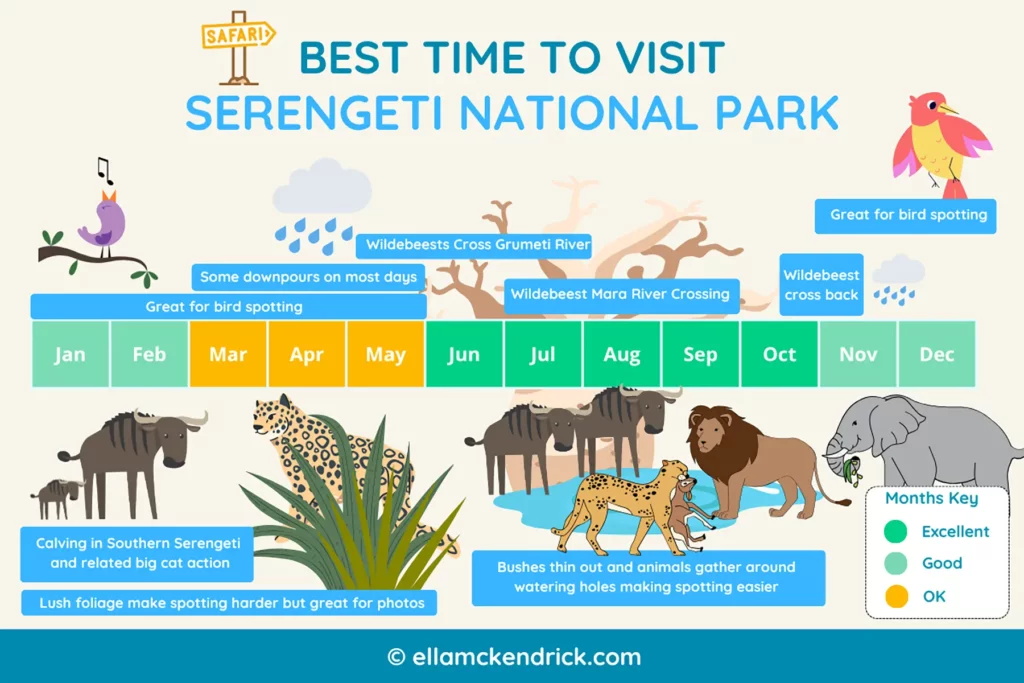
Serengeti National Park Quick Facts
Entry Fee: $70 + 18% tax per person per day plus an additional $60 + 18% tax per person for each night you spend in the park
Busyness: High (especially in peak season of July – September)
Nearest International Airport: Kilimanjaro International Airport (7 hour drive)
Nearby Parks: Ngorongoro Crater (2 hours), Tarangire (5 hours), Lake Manyara (4 hours)
Special Features: The great wildebeest migration
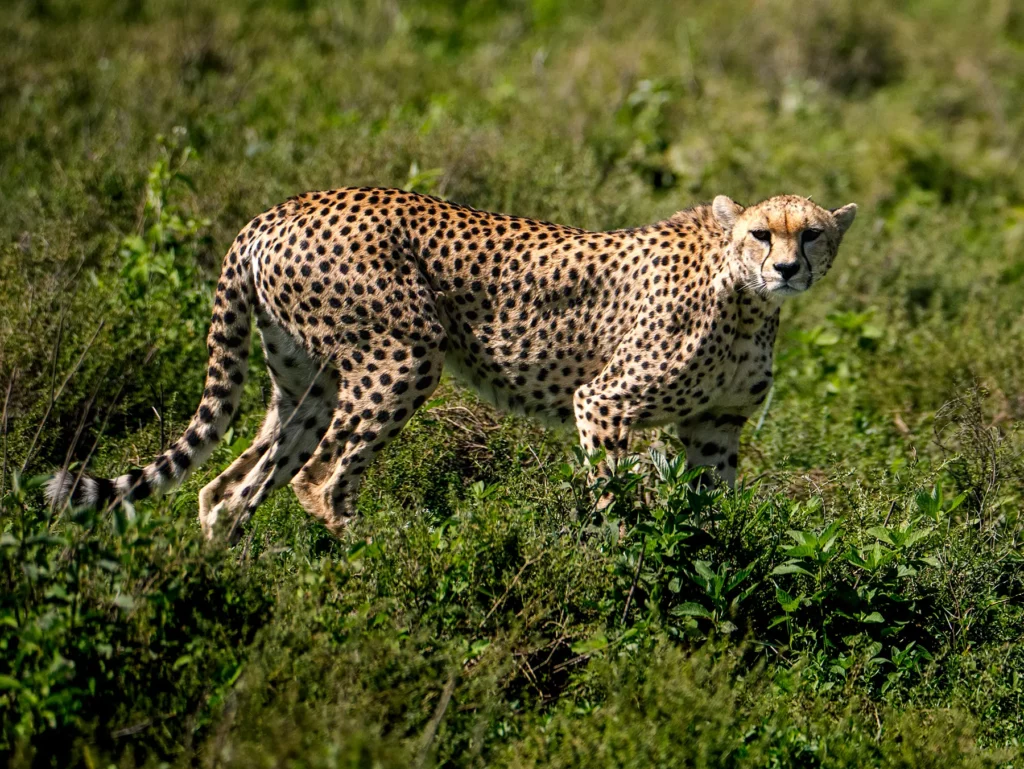
2. Ngorongoro Crater
Tucked within the Ngorongoro Conservation Area is the world’s largest intact caldera. This now-extinct volcano is often referred to as Africa’s Eden as the vast crater floor is a paradise for an abundance of species, including the world’s highest concentration of lions.
Read my ultimate guide to Ngorongoro Crater or, if you’re in a rush, I’ve included some quick facts below.
What Wildlife can you See in Ngorongoro Crater?
A large array of species call Ngorongoro Crater home, including lions and elephants. The star of the show however is the black rhino. Ngorongoro Crater is the best place to see them in Tanzania.
Below I’ve listed the most popular animals and your likelihood of spotting them.

Lion
Abundant

Elephant
Abundant

Hippo
Abundant

Buffalo
Abundant

Black Rhino
Occasional

Leopard
Occasional

Cheetah
Absent

Giraffe
Absent
When is the Best time to Visit Ngorongoro Crater?
Due to the fact that there’s no annual wildlife migration in and out of the crater, wildlife densities in Ngorongoro Crater remain stable and high throughout the year.
Below I’ve ranked each month in the Ngorongoro Crater.
- Excellent
- Good
- OK
- Poor
The infographic below shows what you can expect in each month.

Ngorongoro Crater Quick Facts
Entry Fee: $60 + 18% tax per person per day plus an additional $295 fee per vehicle
Busyness: High (especially in peak season of July – September)
Nearest International Airport: Kilimanjaro International Airport (5 hour drive)
Nearby Parks: Serengeti (2 hours), Tarangire (3 hours), Lake Manyara (2 hours)
Special Features: Unique landscape, best place in northern Tanzania to see servals or golden wolves
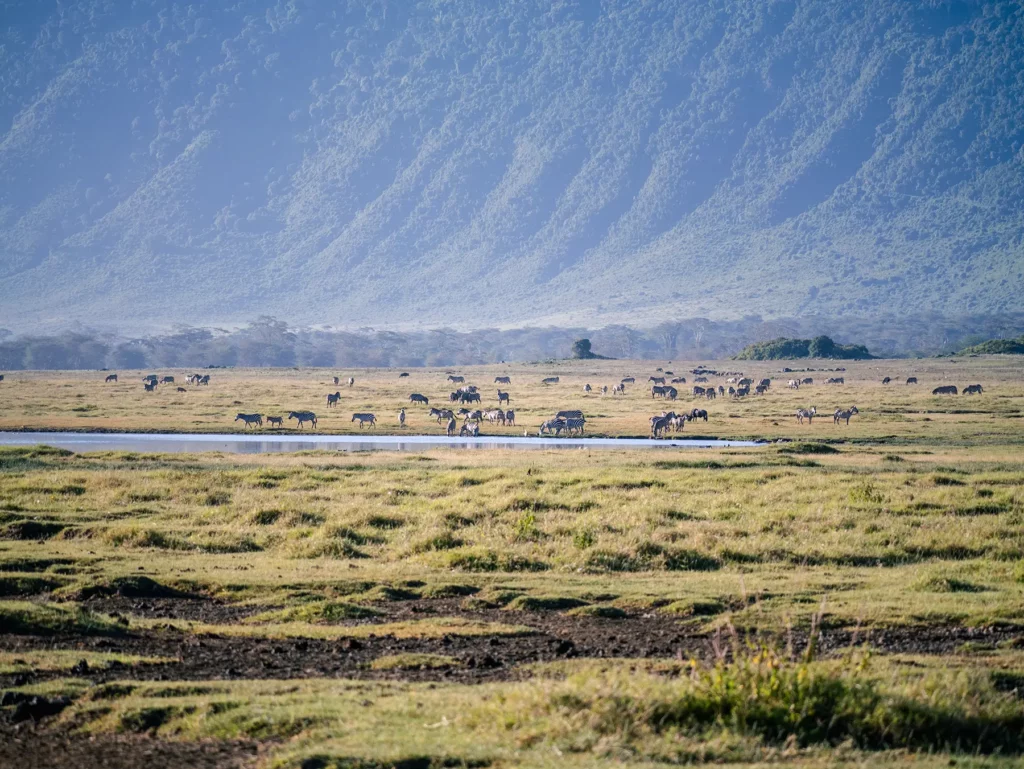
3. Tarangire National Park
Tarangire National Park is one of the best places in Tanzania to see elephants with herds, often hundreds of members strong, seen marching through the grasslands. It’s also famous for its beautiful scenery, including its iconic baobab trees.
Read my ultimate guide to Tarangire National Park or, if you’re in a rush, I’ve included some quick facts below.
What Wildlife can you See in Tarangire National Park?
A large array of species call Ngorongoro Crater home, including lions and elephants. The star of the show however is the black rhino. Ngorongoro Crater is the best place to see them in Tanzania.
Below I’ve listed the most popular animals and your likelihood of spotting them.

Elephant
Abundant

Giraffe
Abundant

Hippo
Abundant

Buffalo
Abundant

Lion
Occasional

Leopard
Rare

Cheetah
Rare

Black Rhino
Absent
When is the Best time to Visit Tarangire National Park?
Large herds of migratory animals such as elephants can be seen in Tarangire National Park in the long dry season, between June and October. Whilst there are animals year round, the numbers will be less outside of this period.
Below I’ve ranked each month in the Tarangire.
- Excellent
- Good
- OK
- Poor
The infographic below shows what you can expect in each month.
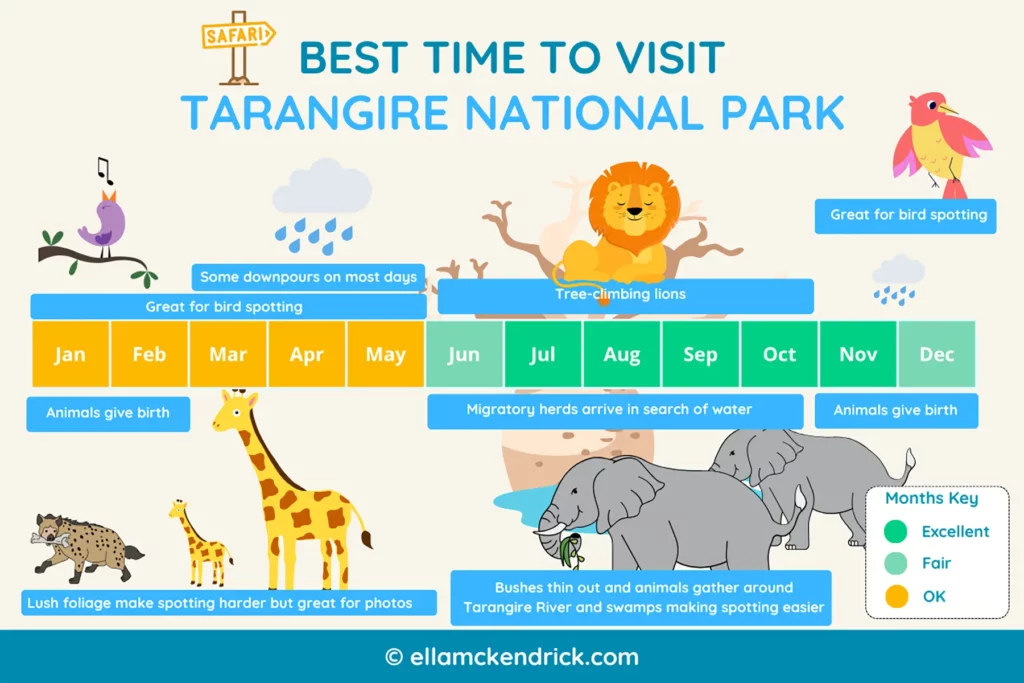
Tarangire National Park Quick Facts
Entry Fee: $50 + 18% tax per person per day
Busyness: High (especially in peak season of July – September)
Nearest International Airport: Kilimanjaro International Airport (4 hour drive)
Nearby Parks: Serengeti (5 hours), Ngorongoro Crater (3 hours), Lake Manyara (2 hours)
Special Features: Huge elephant herds, unique landscape (especially baobab trees)
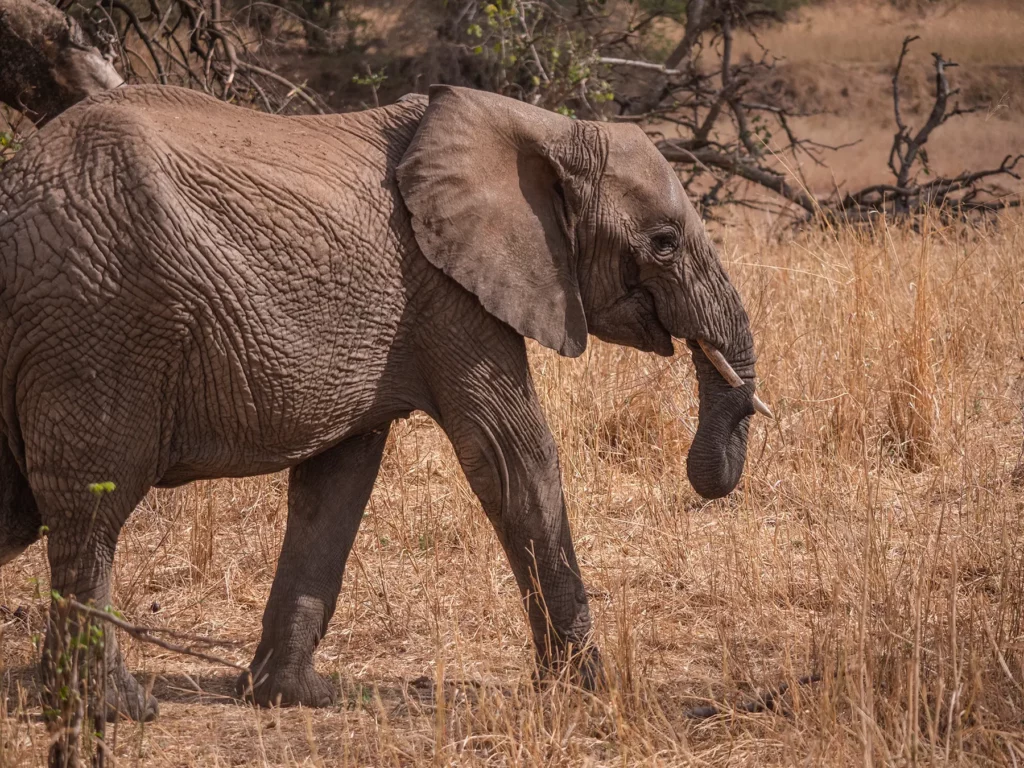
4. Lake Manyara National Park
Unlike much of Tanzania’s parks, Lake Manyara is lush and forest-clad, making it a welcome change from the open savannah. This gives you the opportunity to spot a different range of animals here.
I’ve included some quick facts below.
What Wildlife can you See in Lake Manyara National Park?
Unfortunately Lake Manyara has been damaged by extensive flooding in recent years. This has forced many large animals to flee the park. Additionally, the rising water levels have made the lake challenging for flamingos to feed on and so numbers are not as high as they once were. There are still a number of animals you can expect to see here, however.
Below I’ve listed the most popular animals and your likelihood of spotting them.

Elephant
Abundant

Giraffe
Abundant

Hippo
Abundant

Buffalo
Abundant

Lion
Occasional

Leopard
Rare

Cheetah
Absent

Black Rhino
Absent
When is the Best time to Visit Lake Manyara National Park?
The dry seasons when Lake Manyara’s water levels are lowest are the best time to visit Lake Manyara. You’re much more likely to see flamingos at this time of year.
Below I’ve ranked each month in Lake Manyara.
- Excellent
- Good
- OK
- Poor
Lake Manyara National Park Quick Facts
Entry Fee: $50 + 18% tax per person per day
Busyness: Moderate
Nearest International Airport: Kilimanjaro International Airport (3 hour drive)
Nearby Parks: Serengeti (4 hours), Ngorongoro Crater (2 hours), Tarangire (2 hours)
Special Features: Flamingos, unique landscape
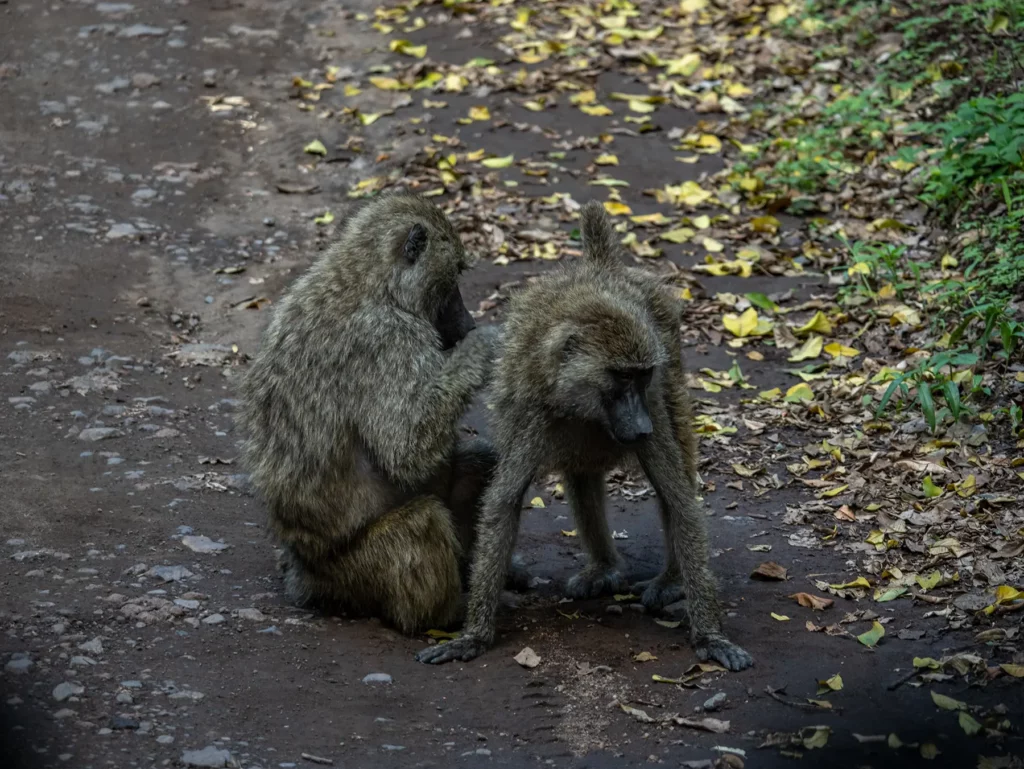
5. Arusha National Park
On the outskirts of Arusha town is this small but spectacular national park. Whilst it may not be home to all of the Big Five, you can still see a lot of wildlife here, including giraffes and some unique primates.
Read my ultimate guide to Arusha National Park or, if you’re in a rush, I’ve included some quick facts below.
What Wildlife can you See in Arusha National Park?
Only three of the Big Five can be seen here: elephant, buffalo and leopard. However, Arusha does have some unique animals that can’t easily be seen elsewhere in northern Tanzania, including the black and white colobus monkey and the blue monkey.
Below I’ve listed the most popular animals and your likelihood of spotting them.

Giraffe
Abundant

Buffalo
Abundant

Hippo
Abundant

Leopard
Occasional

Elephant
Occasional

Cheetah
Rare

Lion
Absent

Black Rhino
Absent
When is the Best time to Visit Arusha National Park?
Arusha National Park is a great park to visit throughout the year. During the long rainy season, between March and May, you may experience a lot of rainfall which could hinder your wildlife viewing.
Below I’ve ranked each month in Arusha National Park.
- Excellent
- Good
- OK
- Poor
Arusha National Park Quick Facts
Entry Fee: $50 + 18% tax per person per day
Busyness: Quiet
Nearest International Airport: Kilimanjaro International Airport (1 hour drive)
Nearby Parks: Serengeti (6 hours), Ngorongoro Crater (4 hours), Tarangire (3 hours)
Special Features: Black and white colobus monkeys, flamingos, unique landscape
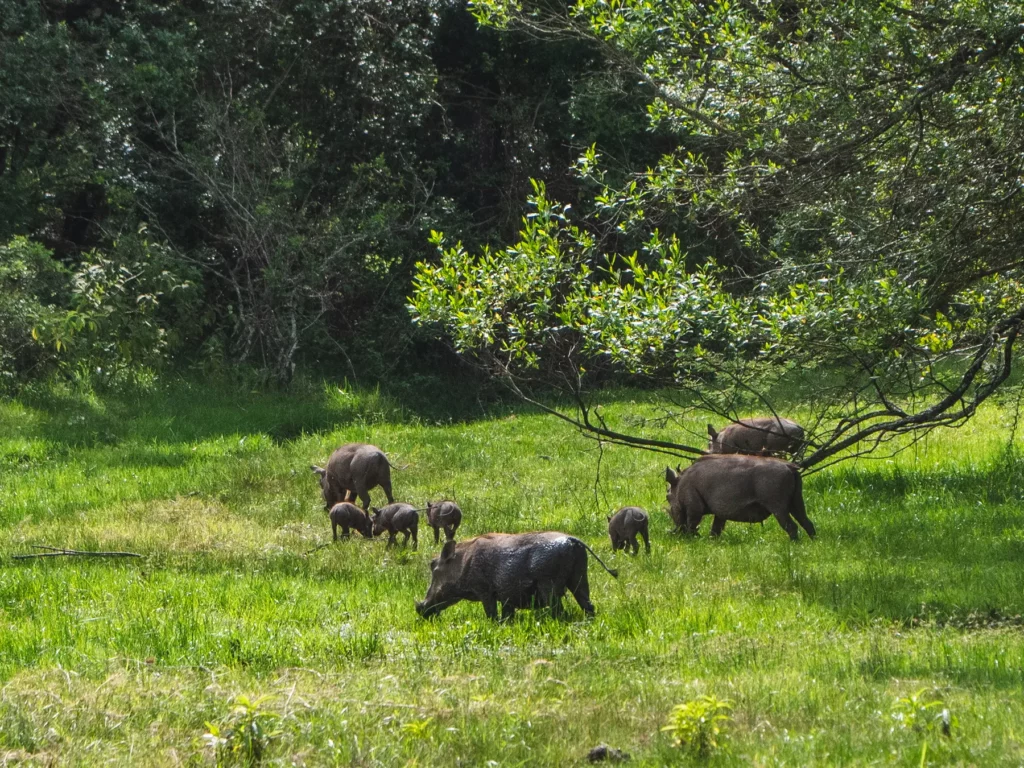
6. Ruaha National Park
This little-known park in southern Tanzania has got to be one of Tanzania’s best kept secrets. With spectacular wildlife to rival the likes of Ngorongoro Crater (perhaps not quite the Serengeti) but with just a fraction of the visitors, Ruaha truly rewards those who are prepared to travel off the beaten track to reach it.
I’ve included some quick facts below.
What Wildlife can you See in Ruaha National Park?
Ruaha is a great place to see Tanzania’s predators, including lions, leopards and cheetahs. The highlight, however, is Ruaha is one of just a handful of places in Tanzania where you have a chance of seeing African wild dogs.
Below I’ve listed the most popular animals and your likelihood of spotting them.

Elephant
Abundant

Buffalo
Abundant

Giraffe
Abundant

Lion
Abundant

Leopard
Occasional

African Wild Dog
Occasional

Cheetah
Rare

Black Rhino
Absent
When is the Best time to Visit Ruaha National Park?
Unlike parks in northern Tanzania which remain good to visit during the year, Ruaha is more of a seasonal park with lodges closing completely at certain times of year. The best time to visit is from June until the end of the year.
Below I’ve ranked each month in Ruaha National Park.
- Excellent
- Good
- OK
- Poor
Ruaha National Park Quick Facts
Entry Fee: $30 + 18% tax per person per day
Busyness: Quiet
Nearest International Airport: Dar Es Saalam (10 hour drive)
Nearby Parks: Nyerere (1 hour flight as no roads connect the two), Mikumi National Park (4 hour drive)
Special Features: African wild dogs, sable antelopes

7. Nyerere National Park
Formerly known as Seleous Game Reserve, Nyerere National Park is the largest national park in Tanzania. It’s wild, remote and perfect for those seeking an adventure away from the main tourist path.
I’ve included some quick facts below.
What Wildlife can you See in Nyerere National Park?
Nyerere National Park is one of the best places to see African wild dogs in Tanzania. As well as being a stronghold for dogs, you can expect to see large elephant herds here and an abundance of antelope species, including the rare sable antelope.
Below I’ve listed the most popular animals and your likelihood of spotting them.

Elephant
Abundant

Buffalo
Abundant

Giraffe
Abundant

Lion
Abundant

Leopard
Occasional

African Wild Dog
Occasional

Cheetah
Rare

Black Rhino
Absent
When is the Best time to Visit Nyerere National Park?
Unlike parks in northern Tanzania which remain good to visit during the year, Nyerere is more of a seasonal park with lodges closing completely at certain times of year. The best time to visit is from June until the end of the year.
Below I’ve ranked each month in Nyerere National Park.
- Excellent
- Good
- OK
- Poor
Nyerere National Park Quick Facts
Entry Fee: $50 + 18% tax per person per day
Busyness: Quiet
Nearest International Airport: Dar Es Saalam (5 hour drive)
Nearby Parks: Nyerere (1 hour flight as no roads connect the two), Mikumi National Park (7 hour drive)
Special Features: African wild dogs, sable antelopes
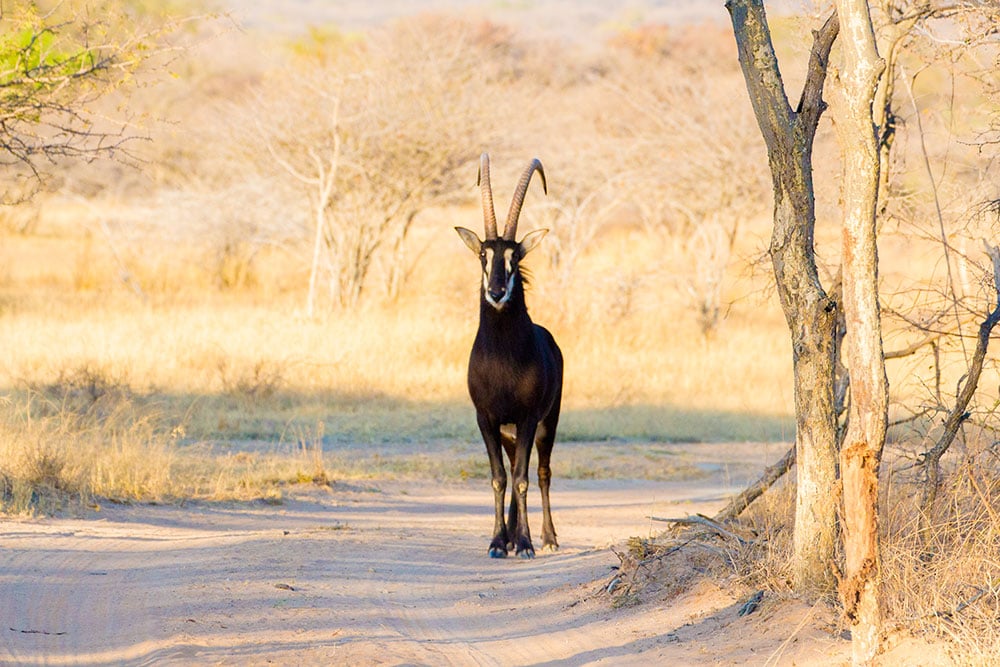
Tanzania’s Northern Vs Southern Circuit: Which Is Best?
Tanzania’s national parks and reserves can easily be split into two distinctive safari circuits based on their locations. The circuits are as follows:
Tanzania’s Northern Circuit: Serengeti National Park, Ngorongoro Crater, Tarangire National Park, Lake Manyara National Park and Arusha National Park.
Tanzania’s Southern Circuit: Ruaha National Park, Nyerere National Park and Mikumi National Park.
Tanzania’s northern circuit is best for most visitors. There are a number of reasons for this, which we will dive into below.
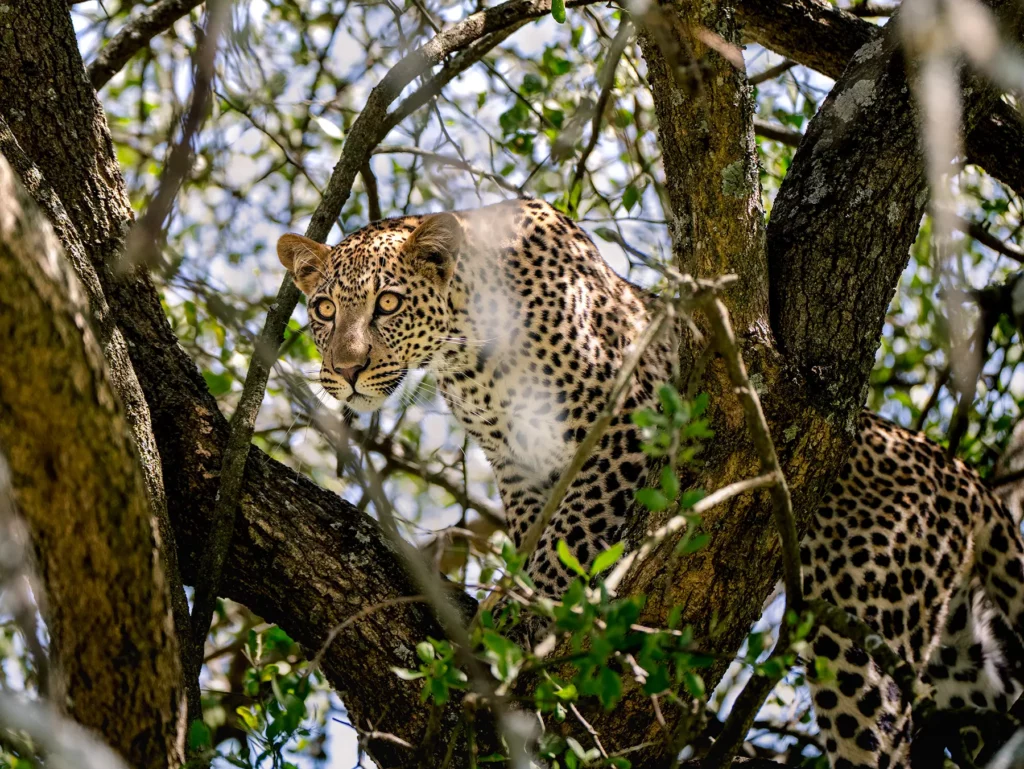
Firstly, the northern circuit is much more accessible than the southern circuit. Kilimanjaro International Airport is just a stone throw away from Tanzania’s northern parks, and then each park is well connected by (reasonably) maintained roads as well as frequent scheduled flights.
In contrast, unless you want to spend entire days on the road, it isn’t really possible to drive to the national parks on Tanzania’s southern circuit from Dar Es Salaam and the closest international airport. Then the parks themselves are poorly connected with no roads linking Ruaha with Nyerere and thus flying between them being the only option.

In terms of budgets, the northern circuit is again more favourable. You can find lodges and safari companies in northern Tanzania to cater to all budgets, from basic camping safaris to luxury lodges.
In southern Tanzania you will find that accommodation is much more expensive, largely due to how remote it is.
Finally, whilst both circuits offer fantastic opportunities for wildlife viewing, there are more national parks that you can encounter in northern Tanzania. Furthermore, the wildlife in the north is much more used to people and so sightings are clearer than in southern Tanzania.
Winner: Tanzania’s northern circuit
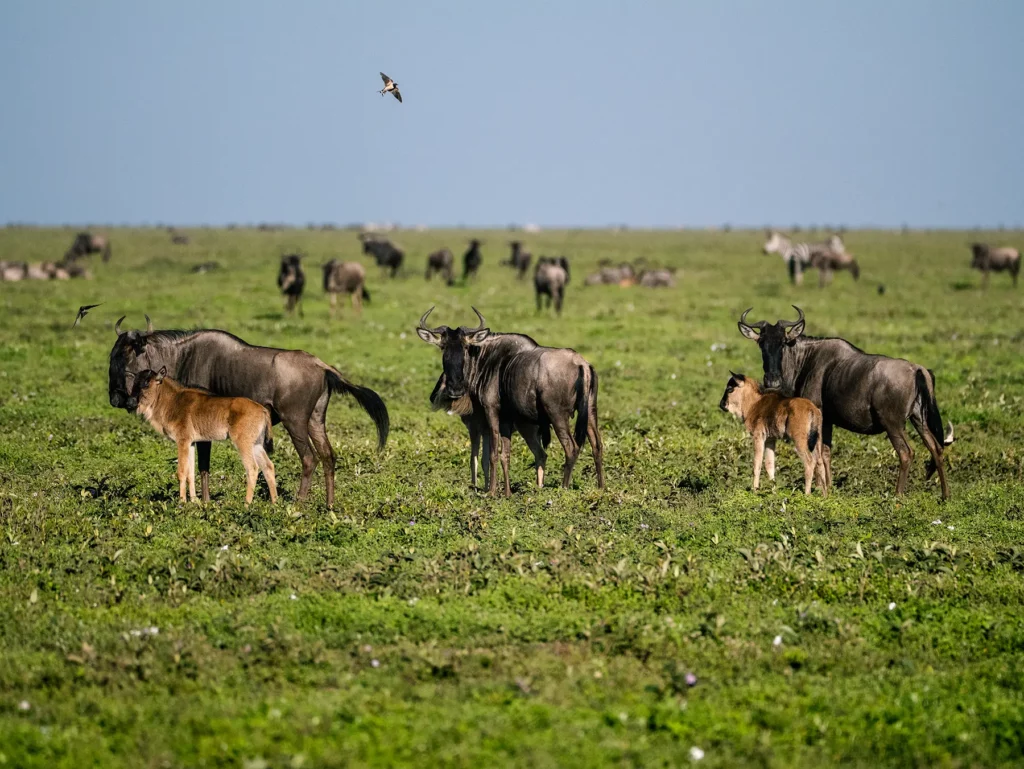
How Does Tanzania Compare to Other Africa Safari Destinations?
If you’ve made it this far into my guide, I should hope you’re pretty much convinced to pack up your bags and hop on a plane to Tanzania!
But if you’re still umming and ahhing, not 100% sure if Tanzania really is the best option for your dream safari, let me quickly compare this premier safari destination to other flagship locations in Africa.
Tanzania Vs Kenya: Which is Best?
Kenya and Tanzania have a lot of similarities. The two countries are right next door to one another and experience similar temperatures and weather. They also have a similar range of wildlife.
However, there are a few key differences between them.
Wildlife: Similar. You are more likely to see rhinos in Kenya but the great migration can be seen year-round in Tanzania.
Accessibility: More international flights operate to Nairobi Airport compared to Tanzania’s Kilimanjaro Airport, making it more accessible.
Unique features: Tanzania houses the great wildebeest migration throughout the year. In contrast, you can only see it in Kenya between mid-July and mid-October.
Beaches: Tanzania includes the beautiful Zanzibar archipelago which is renowned for having some of the world’s best beaches. Kenya has some gorgeous beaches like Diani but there are much more choices for a beach holiday in Zanzibar.
Safety: Both countries have similar levels of safety. As safaris to Tanzania typically bypass the country’s largest cities, you are less likely to encounter political demonstrations than in Kenya.
Weather & Climate: Both countries experience similar weather conditions.
Costs: Both countries are a similar cost to visit.
Winner: I personally love both countries! You really can’t go wrong with either destinations. If you’re struggling to choose and you’re planning on going on safari for 10 days or more, you can even do a combined Kenya and Tanzania safari.
I’ve been on safari in both Tanzania and Kenya numerous times. Over the years I’ve managed to build up a list of a handful of fantastic tour operators who I’ve personally used and who I’ve had great experiences with.

Tanzania Vs South Africa: Which is Best?
South Africa is the most well-known safari destination on the planet. However, sitting at the very bottom tip of the continent, the wildlife and climate that you can encounter there differs drastically from East Africa.
Wildlife: You are more likely to see cheetahs in Tanzania and rhinos in South Africa.
Accessibility: More international flights operate to Johanesberg in South Africa compared to Tanzania’s Kilimanjaro Airport, making it more accessible.
Unique features: Tanzania houses the great wildebeest migration. South Africa doesn’t have a mammal migration on the same scale.
Beaches: Tanzania includes the beautiful Zanzibar archipelago which is renowned for having some of the world’s best beaches. In contrast, South Africa also has impressive beaches, including the famous Boulder Beach in Cape Town.
Safety: Tanzania is considered safer than South Africa as there’s less crime.
Weather & Climate: Tanzania has a relatively stable climate throughout the year with comfortable temperatures. In contrast, South Africa has a pronounced summer and winter with temperatures ranging from freezing in the winter (-5°C at night) and boiling in the peak of summer (35°C in the day).
Costs: South Africa is cheaper to visit.
Winner: Whilst I love both countries and believe they are equally spectacular for wildlife viewing, I think Tanzania is slightly better for first-time safari-goers. Tanzania has a clear safari circuit and an incredible infrastructure for guided safaris.
I’ve been on safari in both Tanzania and South Africa. Over the years I’ve managed to build up a list of a handful of fantastic tour operators who I’ve personally used and who I’ve had great experiences with.
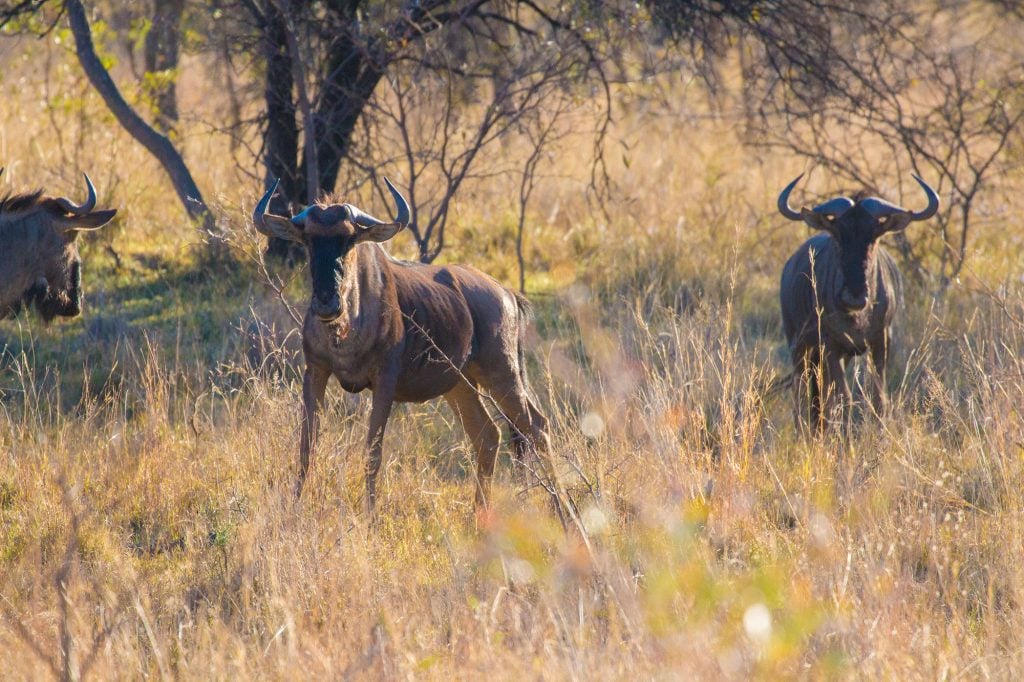
Tanzania Vs Botswana: Which is Best?
Botswana is often touted as one of the best safari destinations in the world, housing one of the largest area of undisturbed wilderness on the continent. But its remoteness comes at a cost, both in accessibility and pricetag.
Wildlife: You are more likely to see cheetahs and rhinos in Tanzania and African wild dogs in Botswana.
Accessibility: You can only fly into Maun or Kasane (Botswana’s two key airports near its prime wildlife viewing areas) from South Africa, meaning the journey to Botswana is often longer than the journey to Tanzania, assuming you are travelling from the US or Europe.
Unique features: Tanzania houses the great wildebeest migration. Botswana has the Okavango Delta.
Beaches: Tanzania includes the beautiful Zanzibar archipelago which is renowned for having some of the world’s best beaches. Botswana is landlocked and has no beaches.
Safety: Botswana is considered the safest country on mainland Africa.
Weather & Climate: Tanzania has a relatively stable climate throughout the year with comfortable temperatures. In contrast, Botswana has a pronounced summer and winter with temperatures ranging from freezing in the winter (-5°C at night) and boiling in the peak of summer (35°C in the day).
Costs: Tanzania is cheaper to visit.
Winner: Whilst Botswana can provide some of the best wildlife viewing experiences in the continent, it’s not very easy to get to and safaris there are expensive, making Botswana safaris logistically challenging for many travellers. Tanzania is therefore a better choice for most travellers. However, if you have the budget and are prepared to endure an extra flight to get there, Botswana is one of my favourite countries in the world.
I’ve been on safari in both Tanzania and Botswana. Over the years I’ve managed to build up a list of a handful of fantastic tour operators who I’ve personally used and who I’ve had great experiences with.
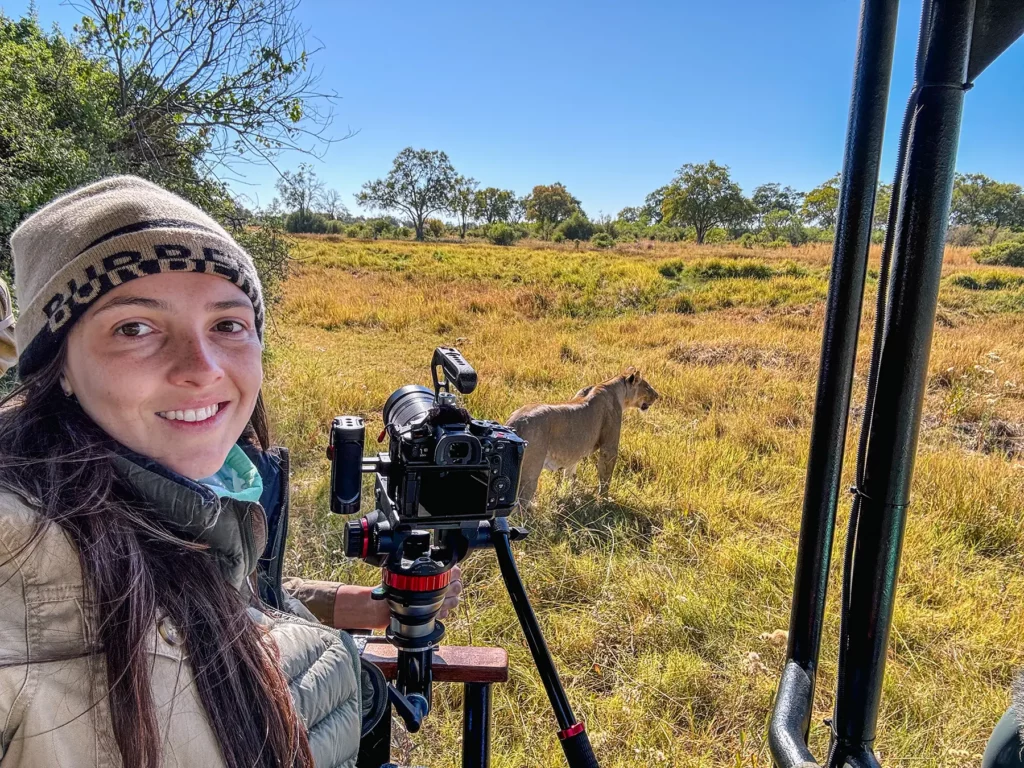
Is Tanzania Safe?
Yes – in my experience Tanzania is safe to visit. Tanzania’s northern safari circuit, especially, is well regarded as safe as it takes place outside busy cities, which are typically where you will encounter the most crime (in any country).
Although Tanzania is safe, there are some precautions you can take to ensure you have the most relaxing experience.
First and foremost, be sensible when in busy towns and cities. Whilst Arusha is a friendly town, it is possible to still encounter petty theft. Therefore don’t flash any valuables and avoid walking at night.
Whilst not dangerous, it is possible to experience some hassle on the streets of Arusha so, if this is something which makes you uncomfortable, avoid walking for long distances. Arusha has Uber which I find is an extremely convenient way to get around.
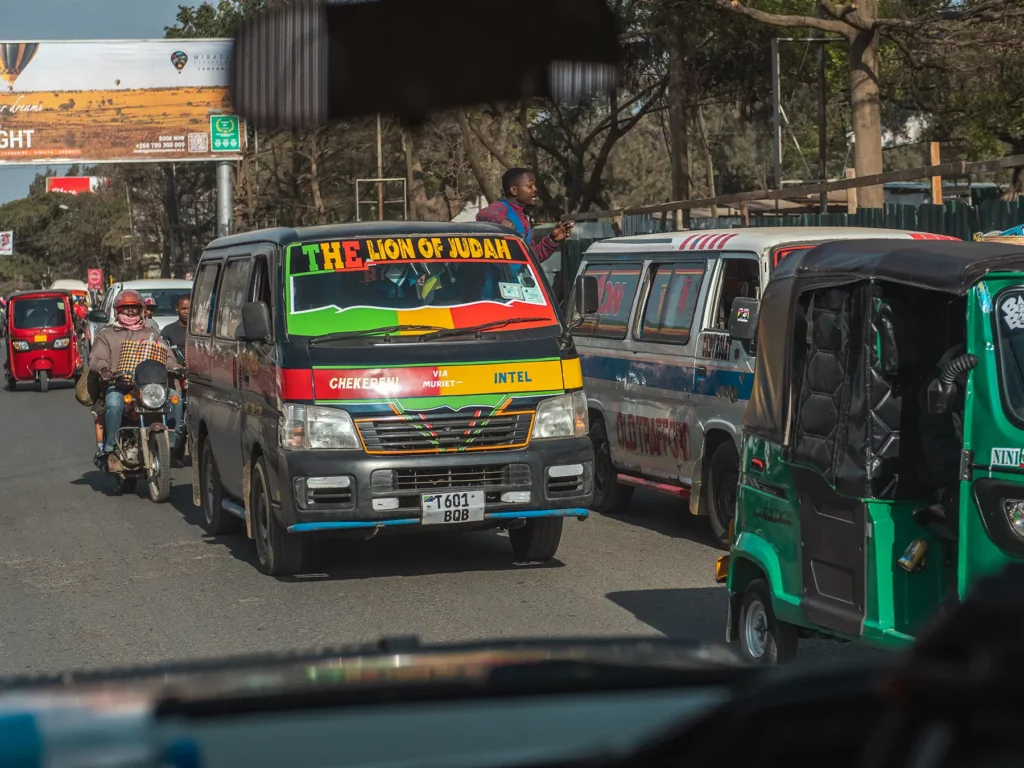
Speaking of getting around, one of your biggest safety concerns in Tanzania is the roads. Avoid public transport like buses where possible as they don’t always drive in the most sensible ways and are often overcrowded.
Some vehicles don’t have working headlights so avoid driving at night where possible. Sometimes, like when going to or from the airport, a night drive is unavoidable. In these instances, keep the drive short (pick a hotel close to the airport) and book with a reputable taxi company. In my experience, booking your airport transfer with your safari company is the best bet as they provide large, modern vehicles and the drivers are careful.
When it comes to wildlife, listen to the advice of your guide and you’re extremely unlikely to encounter any issues.
Many camps and lodges are in wildlife areas. When you’re in a core wildlife area like Serengeti, your lodge will often advise you not to wander around the property alone at night as this is when many animals are most active.
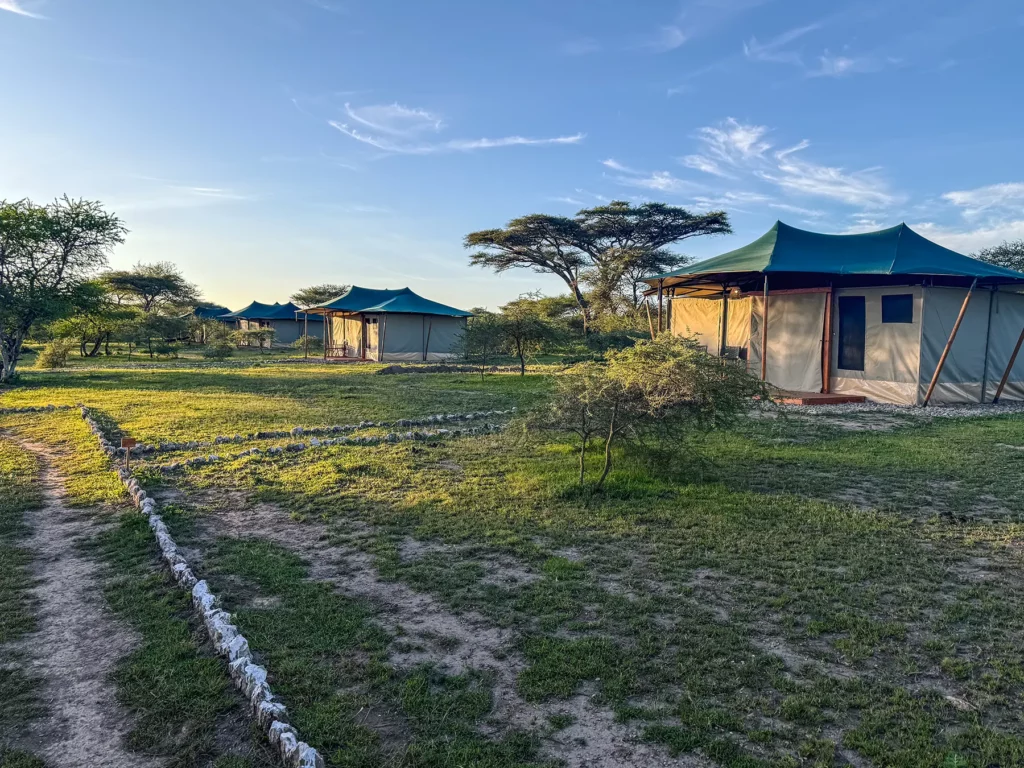
Best Tanzania Safari Itineraries
Tanzania is such a large country and so it can be hard to know what to fit in to your itinerary and how long to spend in each destination.
After visiting Tanzania several times, I’ve come up with my favourite itineraries to suit your ideal length of time in the country.
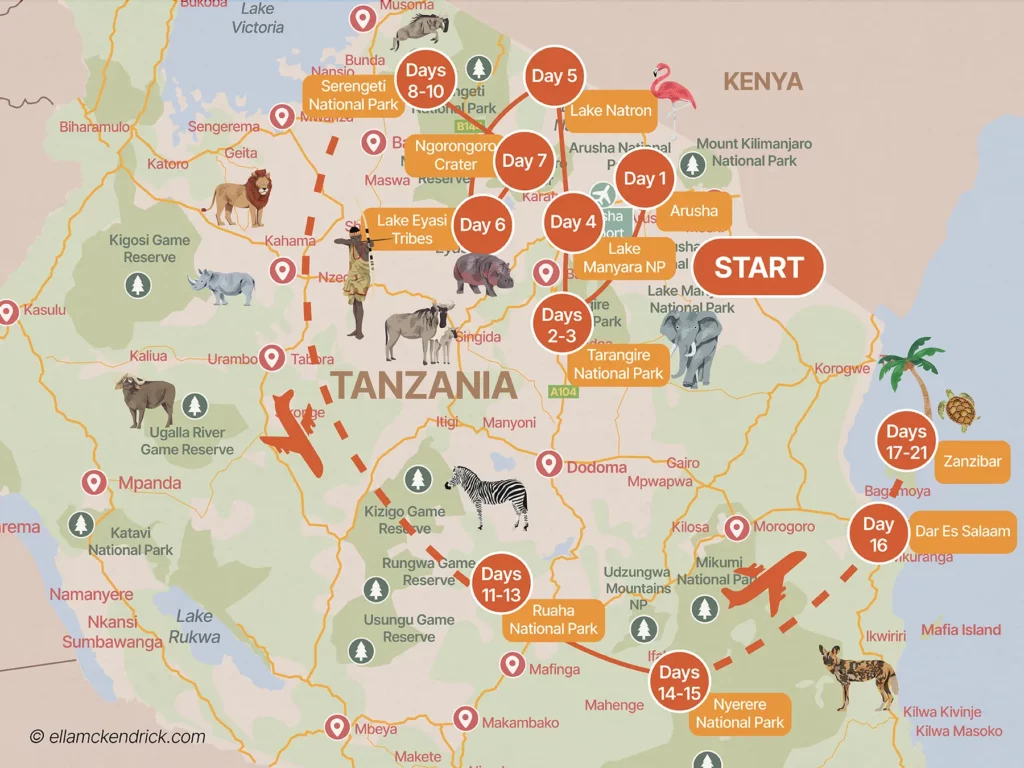
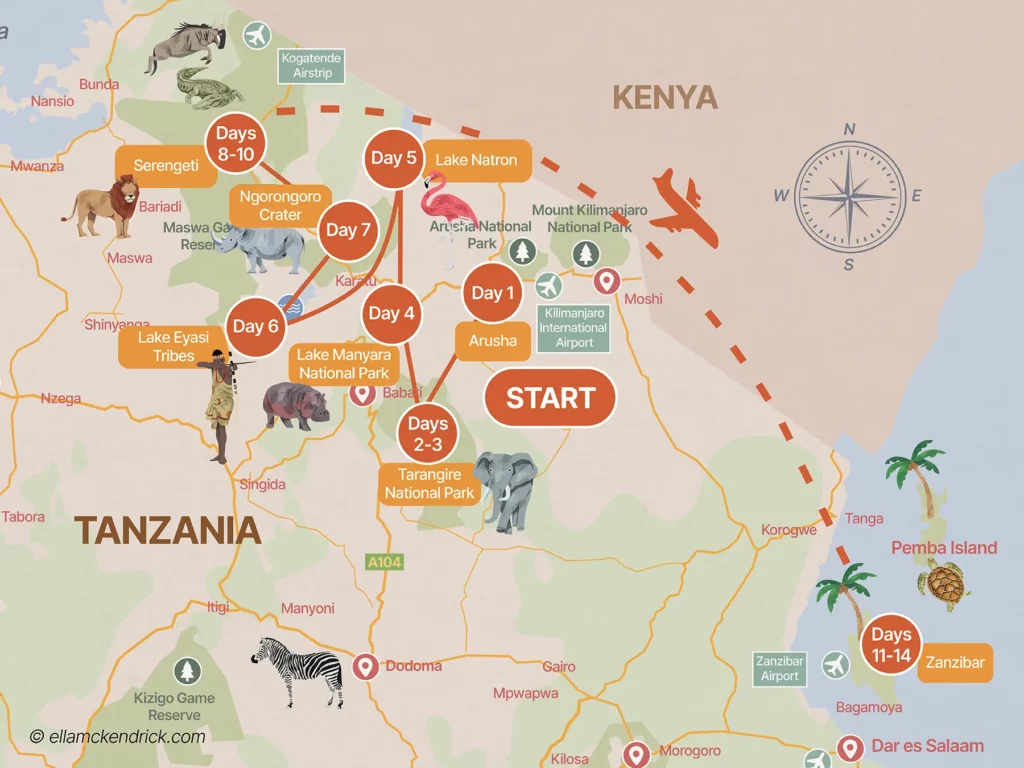
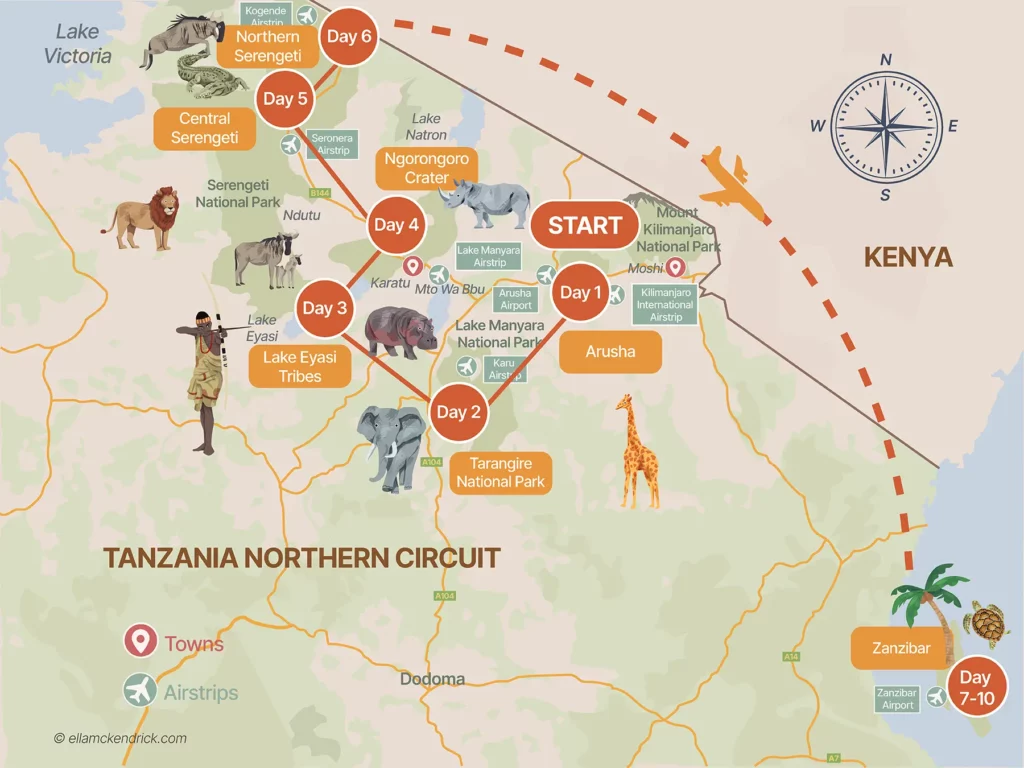

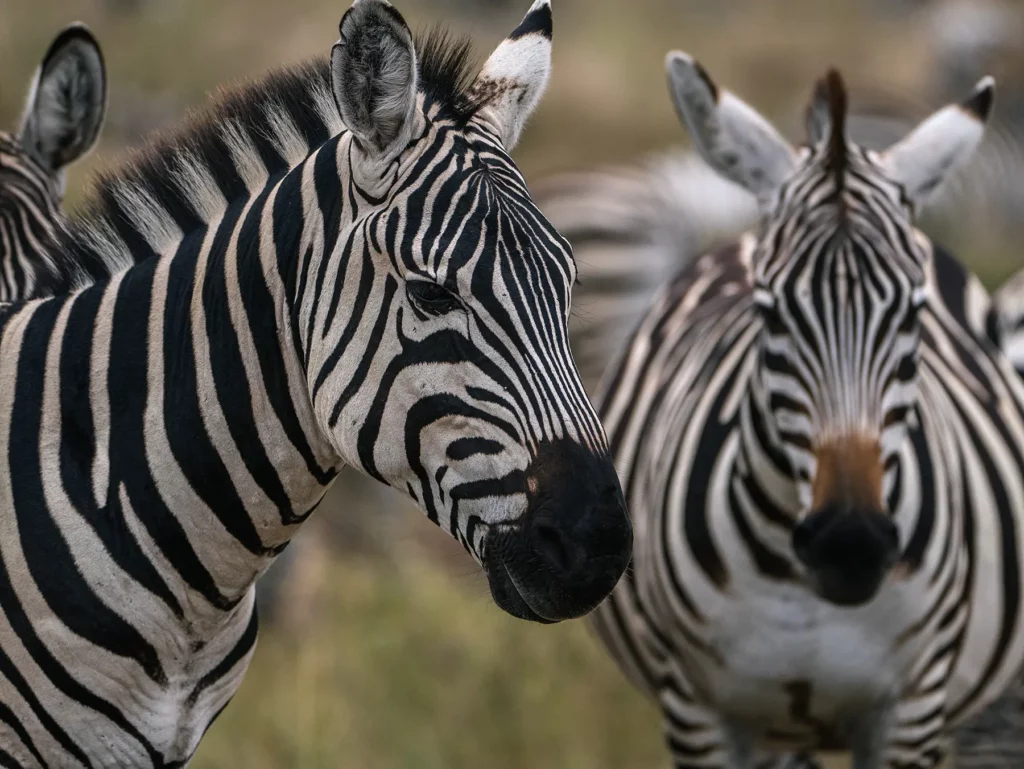

Embark on the Safari of Your Dreams
Save time and ensure an incredible safari experience by getting quotes from my recommended local safari companies
I’m here to make booking your perfect safari quick, easy and risk-free.
Join the rapidly growing tribe of over 1,000 travellers who’ve booked their dream safari using my insider tips and recommendations.

It takes under 60 seconds to fill out the form and in under 48 hours you will receive multiple, no-obligation proposals from my favourite local tour operators with glowing online reviews.
Get your free no-obligation safari quotes and my top safari tips and recommendations
How to Prepare for Your Tanzania Safari
You’ve now decided you’re going on safari to Tanzania. That’s perfect! But you’re probably now wondering how you go about organising different elements of the trip.
I’ll break down everything you need to prepare for your safari below.
Key Tanzania Safari Logistics to Consider
If this is your first time travelling to Africa, dealing with the logistics of a safari can seem intimidating at first.
The great news is, if you book through a local tour operator, they will take care of pretty much everything, from accommodation to park fees, meals to vehicle. So booking in your safari with your tour operator will actually tick off most things from your list.
There are, however, a couple of things you’ll need to handle yourself before travelling to Tanzania.
Jump for more information on each of these logistical questions below.
Do You Need a Visa to Enter Tanzania?
What are Tanzania’s Entry Requirements?
Do You Need Vaccinations for Tanzania?
Do you Need to Take Medication in Tanzania?
What is the Currency in Tanzania?
How Much Cash Should I Bring to Tanzania?
What Are The Plugs in Tanzania?
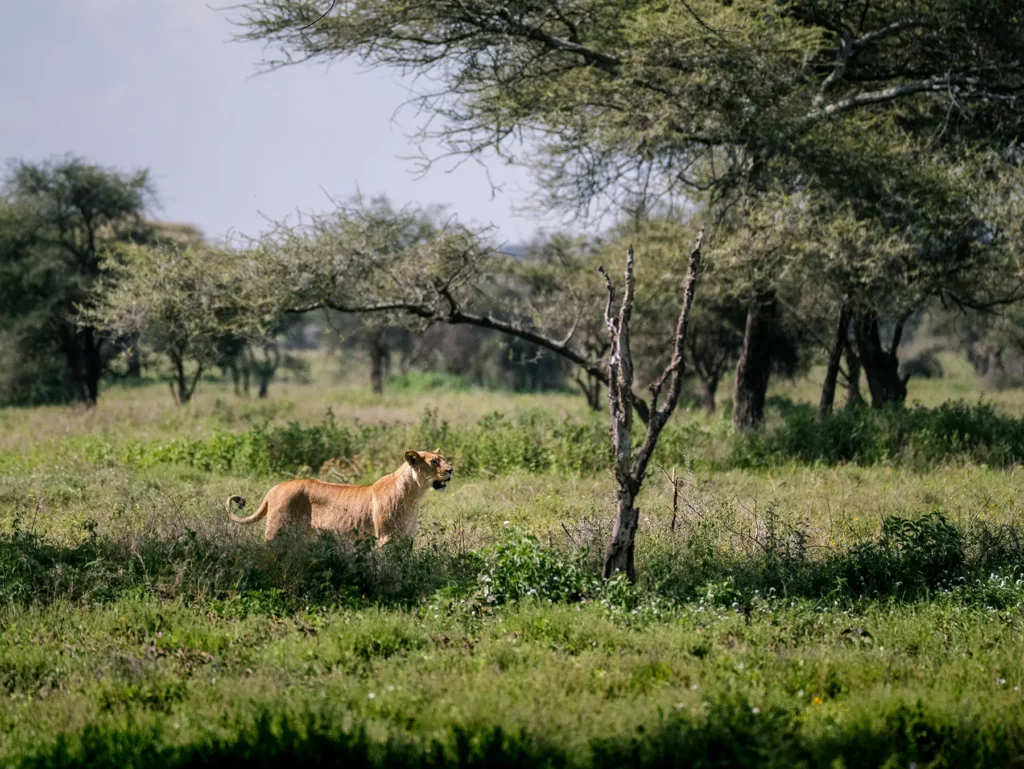
Do You Need a Visa to Enter Tanzania?
Visitors from the UK, Canada, Australia and several European countries require a single-entry visa to enter Tanzania. A single-entry visa costs $50 and can be obtained on arrival or by applying online in advance, which is recommended to avoid delays at the airport.
Visitors from the USA, however, need to purchase multi-entry visas. These cost $100 and can be purchased either online or upon arrival.
It’s advisable to apply a month or two before your trip as it takes several weeks to receive the approval.
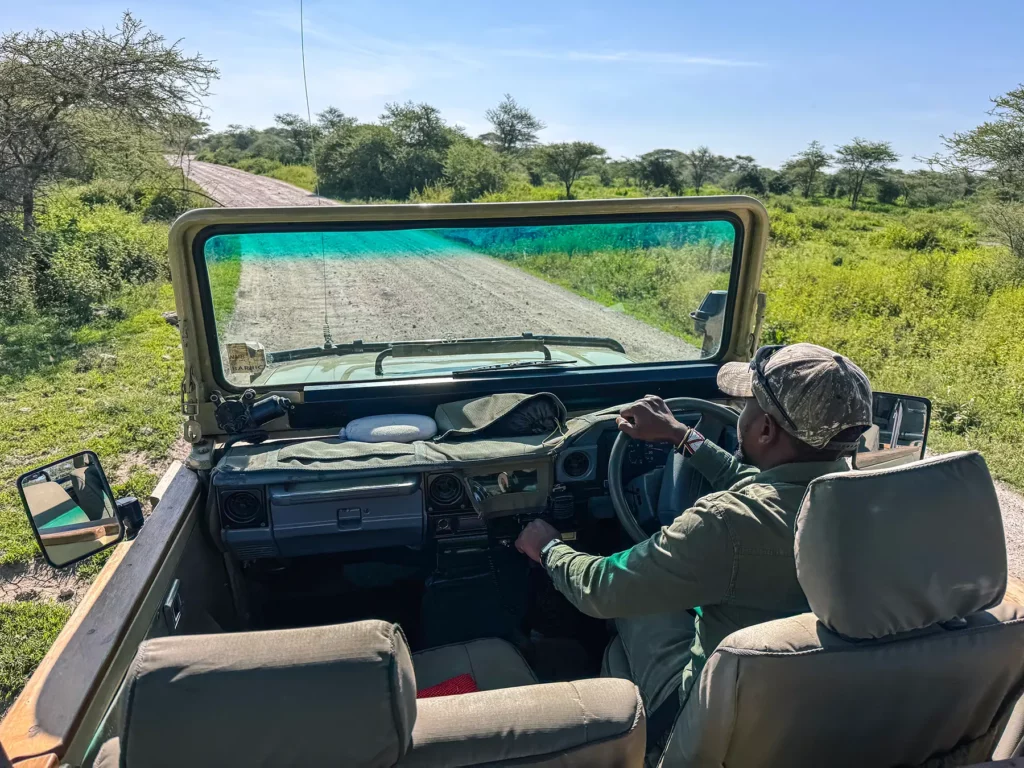
What Are Tanzania’s Entry Requirements?
As well as the Visa outlined above, your passport must have an ‘expiry date’ at least 6 months after the date you arrive and it must have at least 1 blank page.
There are no mandatory vaccinations required to enter Tanzania unless you are coming from a Yellow Fever area, in which case you’ll need to show a Yellow Fever vaccine upon arrival in Tanzania.
You need to purchase mandatory Zanzibar insurance if you wish to visit Zanzibar. You must purchase your Zanzibar insurance online in advance of your trip. You can apply for it here.

Do You Need Vaccinations for Tanzania?
Tanzania has a low risk of Yellow Fever and no vaccination certificate is required. However, if you’re crossing from Kenya, Uganda or another country which is a high-risk area, or have transited through an airport in a high-risk country, then a Yellow Fever certificate is required.
Although no other vaccinations are mandatory to enter Tanzania, you should view the list of vaccines that are recommended and check in with your doctor a few months before your trip.
Some vaccines your doctor may recommend are Hepatitis A & B, Diphtheria, Meningitis and Typhoid.
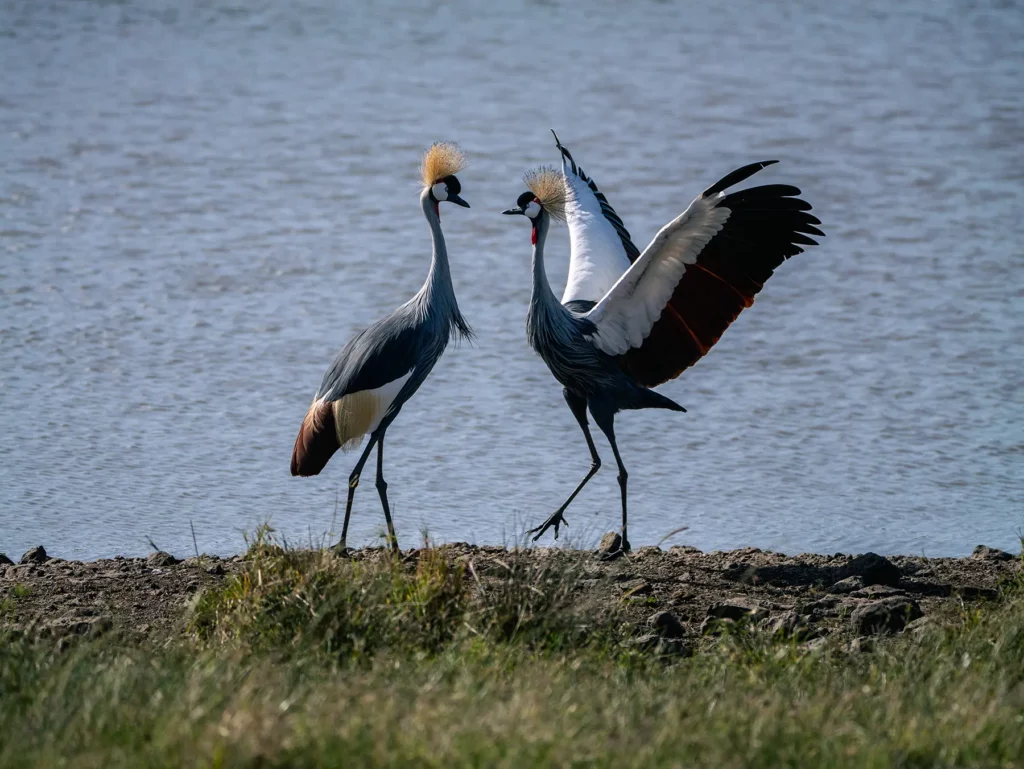
Do you Need to Take Medication in Tanzania?
Tanzania is a high-risk area for malaria, particularly during the wet seasons, so precautions are necessary.
Firstly, check with your doctor or pharmacist which anti-malaria tablets are suitable for you, as side effects can vary. Besides medication, the best way to keep safe is to take a few easy precautions to avoid getting bitten – make sure you bring plenty of insect repellent and wear suitable clothing, especially at night.
You’ll also obviously need to bring any regular medication with you. Make sure you bring enough for the entire duration of your trip.
If you’re prone to travel and altitude sickness on flights or long road journeys, check with your pharmacy before travelling to see what they recommend.
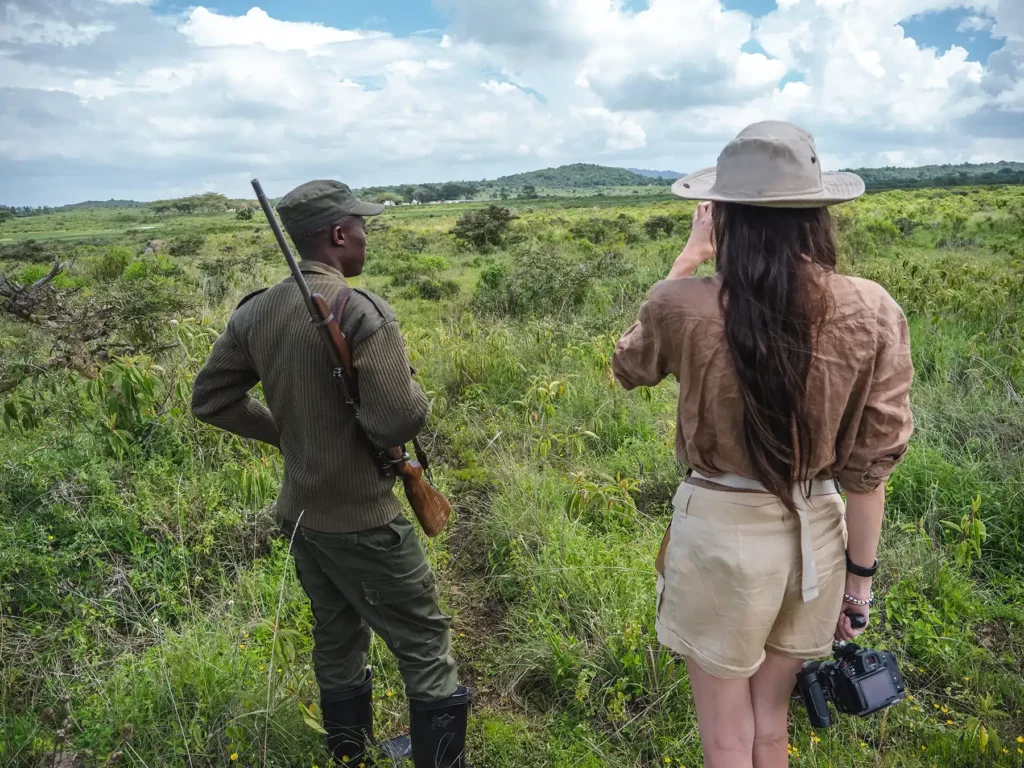
What is the Currency in Tanzania?
The local currency in Tanzania is the Tanzanian Shilling. Local currency can be obtained at the airport via a Bureau de Change or ATM. Arusha also has ATMs, banks and Bureau de Changes.
USD (printed after 2007) is widely accepted at lodges, hotels, and tourist-focused establishments, but smaller local businesses and roadside vendors typically only accept local currency.
Credit / Debit cards are widely accepted, especially Visa. Occasionally card payments can incur a fee of 3-5%, added by the establishment to cover their card fees – they will tell you about this before payment.
If you plan to use your credit / debit card, let your bank know about your travel plans first to avoid it being blocked. These days you can usually do this via your bank’s phone app or website.
I personally just take USD and a multi currency Visa debit card (E.g. those offered by Wise, Revolut etc.). I pay in USD cash to tip my tour guide and at lodges as well as to purchase souvenirs from road-side shops. If I’m eating at a restaurant outside my lodge (these don’t tend to take USD), I typically use my debit card.
The only time you’ll really need local currency is if you plan on buying items from shops and stalls which are off the tourist path, for example, local fruit stalls.
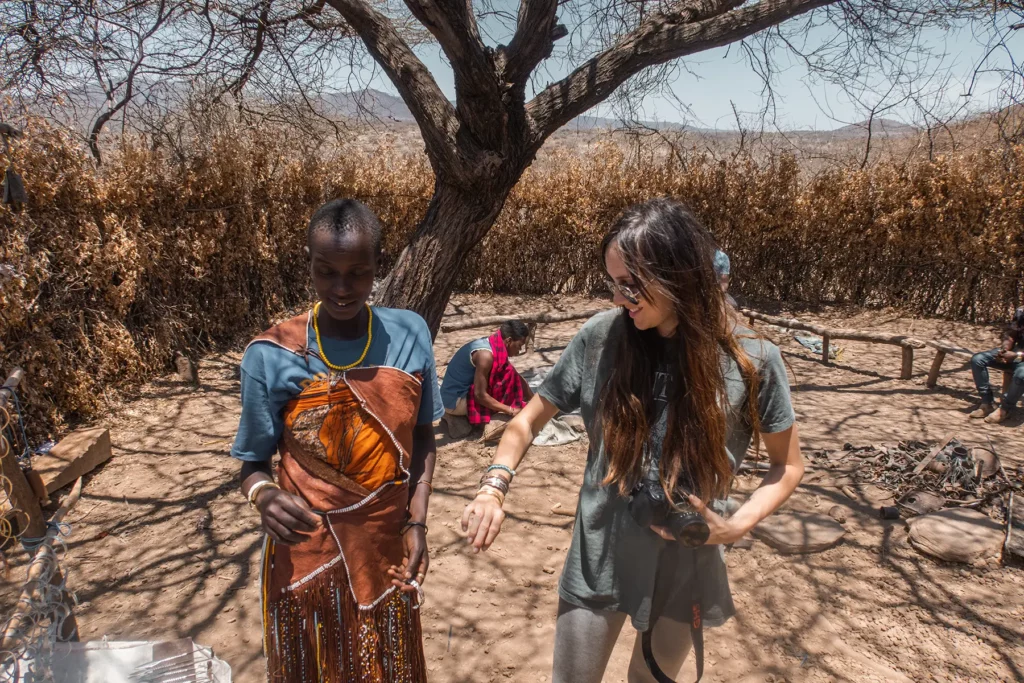
How Much Cash Should I Bring to Tanzania?
Much of your safari experience will already be paid for (including meals) so cash is only really required for tips and souvenirs, plus some extra in case of an emergency.
Tipping in Tanzania is customary, so although it’s not mandatory, it’s the norm and often expected.
Your driver guide is the main person who you may wish to tip. Guidelines for how much to tip your driver guide will vary depending on which company you book with. Each company has their own guidelines. But a tip is generally within the region of $10 – $30 per person per day.
Your driver guide is tipped in cash at the very end of your safari.

There are several other people who you may wish to tip on your safari. This includes lodge staff and any expert guides you have for specific events (eg your hot air balloon pilot or walking safari ranger).
Lodges often have designated tip boxes. It’s recommended to tip at the very end of your stay. As a general rule, $5 per person per day is a good tip. In cases where there is no tip box, I tend to tip as I go. For example, I will tip anyone who has helped me carry my bags to my room on the spot.
For a specific guide like a walking safari ranger, $5 per person is a good guideline.
Souveniers can be anything from $5 all the way up to $100 per item, depending on what it is. In my experience, bracelets are around $5 – $15 and wooden animal carvings are $15 or more. Most of my wooden animal carvings were around the $30 mark.
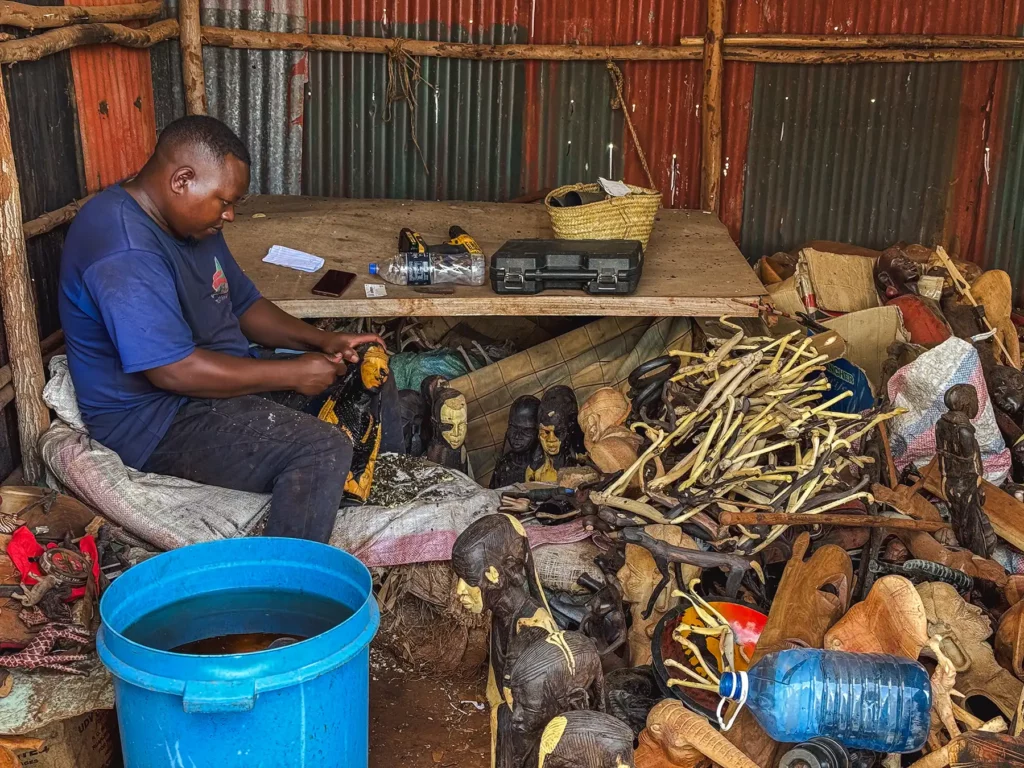
What Are The Plugs in Tanzania?
Tanzania mainly uses type G plug sockets (three square pins), the same plug socket as the UK.
Whilst online sources say you can encounter type D, I have never seen one in Tanzania. They may exist somewhere but are certainly not common in Tanzania’s safari circuit.
Even if you live in a country with type G plug sockets (like me), I’d still recommend bringing at least one world adapter with you, just in case you encounter a hotel or lodge with unusual plug sockets. I’ll never forget the time that I found myself at a modern hotel in Zanzibar with only European plug sockets (type C) and the hotel had no adapters I could borrow! Thank goodness I had a power bank with me to see me through those three nights.
Pro tip: If you have a lot of electronics like me, I’d recommend bringing a multi-plug. This has really saved me in hotels with only one working plug socket.
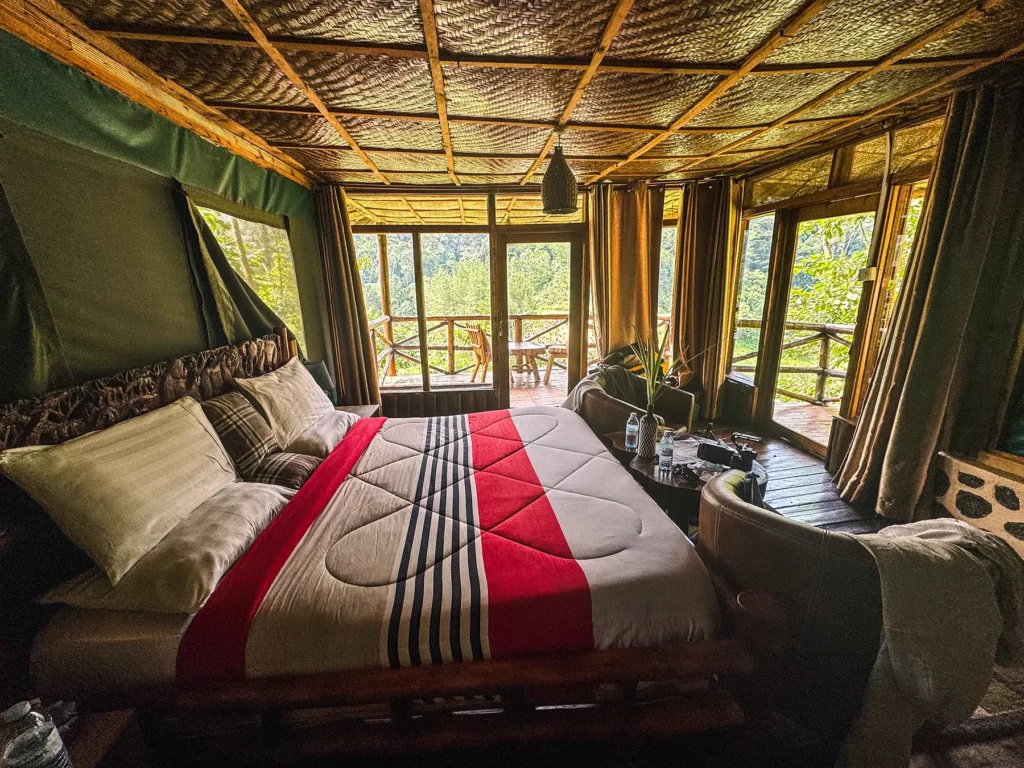
How Do I Book My Tanzania Flights?
A number of fantastic airlines fly to Kilimanjaro International Airport (the closest airport to Serengeti and other safari destinations). My personal favourite is Qatar Airways. However, KLM is another great choice.
For best prices, I recommend using a flight comparison website such as Skyscanner to find out what flights are available. Then I recommend you book directly with the airline themselves.
If you wish to visit Zanzibar at the start of end to your safari then I’d recommend booking multi-city flights. These are flights that fly into one location (eg Kilimanjaro) and out of another (eg Zanzibar). They are a similar price to return flights.
When it comes to booking domestic flights, your tour operator can often assist you with this. They are often able to get preferable prices for small, local airlines.
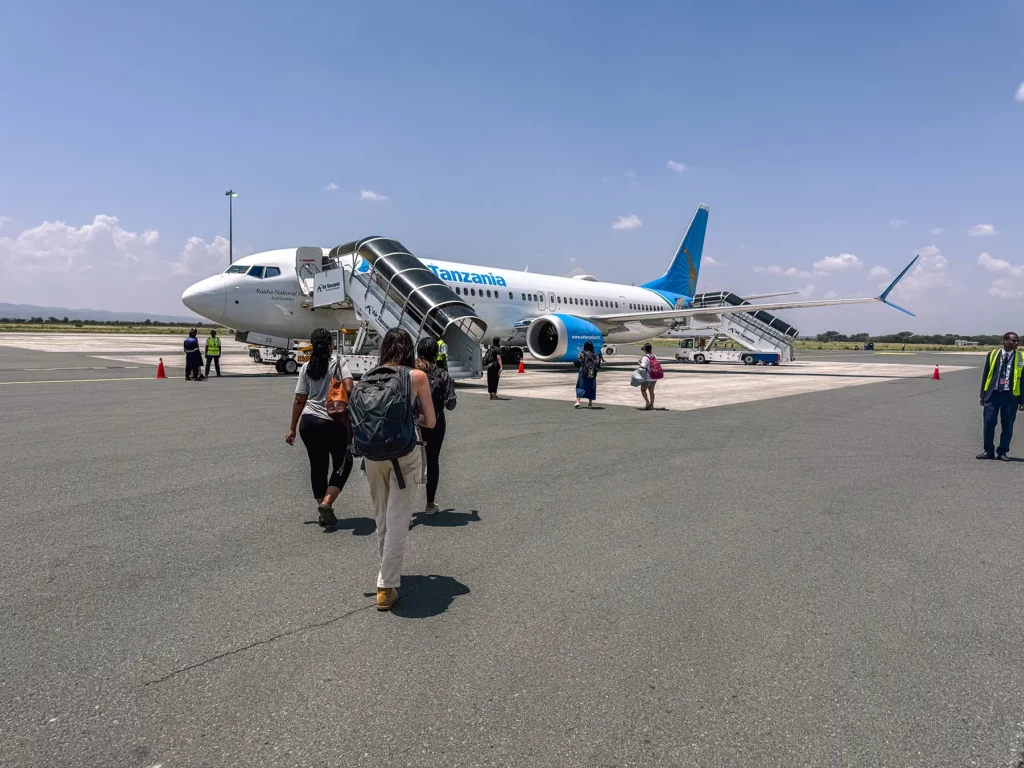
Useful Tanzania Travel Advice Links
UK government travel advice for Tanzania
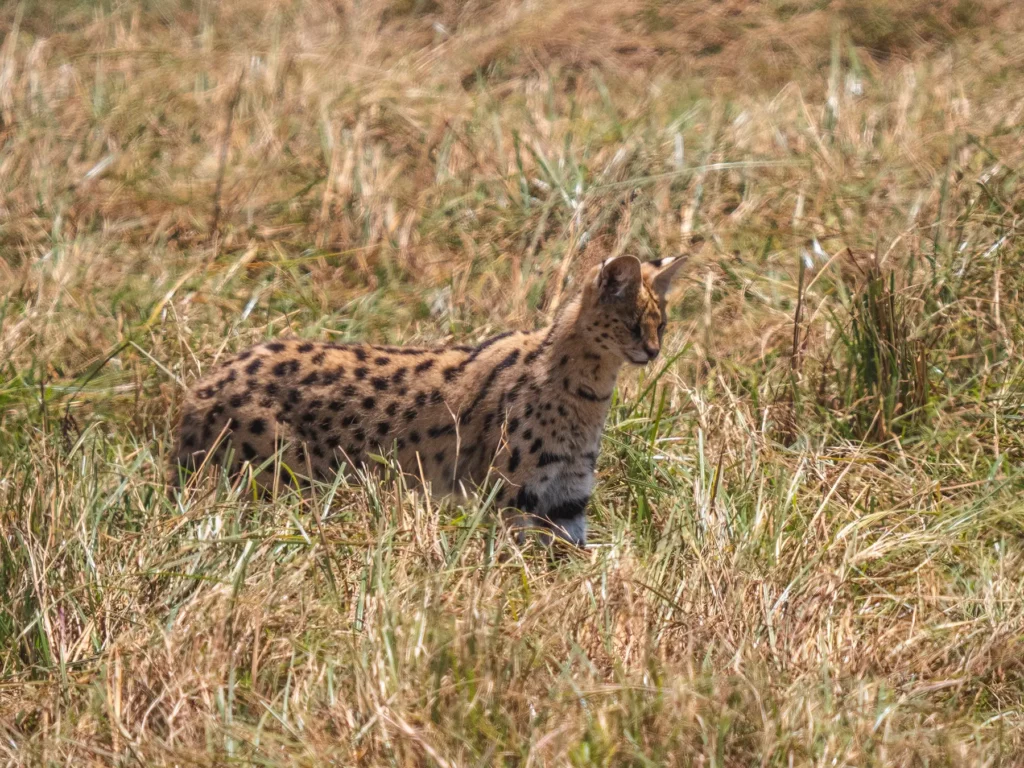
How Should I Pack For A Tanzania Safari?
When you’re embarking on your first African safari, packing can certainly feel daunting. You may be worried about whether you need safari-specific clothes or pondering if there are even any washing facilities available.
I’m here to help! Below I will go into everything you need to know about packing for a Tanzania safari.
Jump for more information on each of these packing questions below.
What Are the Weight Restrictions on Light Aircraft?
Can You Wash Your Clothes on Safari?
Does the Colour of My Clothes Matter?
What Should I Wear for Zanzibar?
How Can I Protect Myself From the Sun?
How Can I protect Myself From the Insects?
Do I Need Specific Luggage?
Soft duffel bags and backpacks are preferable to hard-shell wheelie cases. There are a few reasons for this.
Firstly, if you plan on taking any light aircraft in Tanzania (if you fly between parks, for example), these airlines require you to have soft luggage so that they can fit into the hold. The cabin also has limited space so wheelie suitcases won’t fit.
Secondly, safari vehicles have limited boot space. They have just enough room for you to pile several duffel bags but if you are a group of over 2 people and you both have large hard-shell cases, it may be a struggle to fit them and putting luggage on the roof isn’t preferable, especially if you are going on safari as you need to pop the roof up to enjoy your safari.
Finally, it’s so much easier for camp and lodge staff to carry soft luggage. Camps and lodges often require you to walk through grass or sand to reach your tent or cottage and wheelie cases really struggle with these terrains. Trust me, I learnt this the hard way and felt so bad when a gentlemen had to carry my 25kg suitcase on his shoulders.
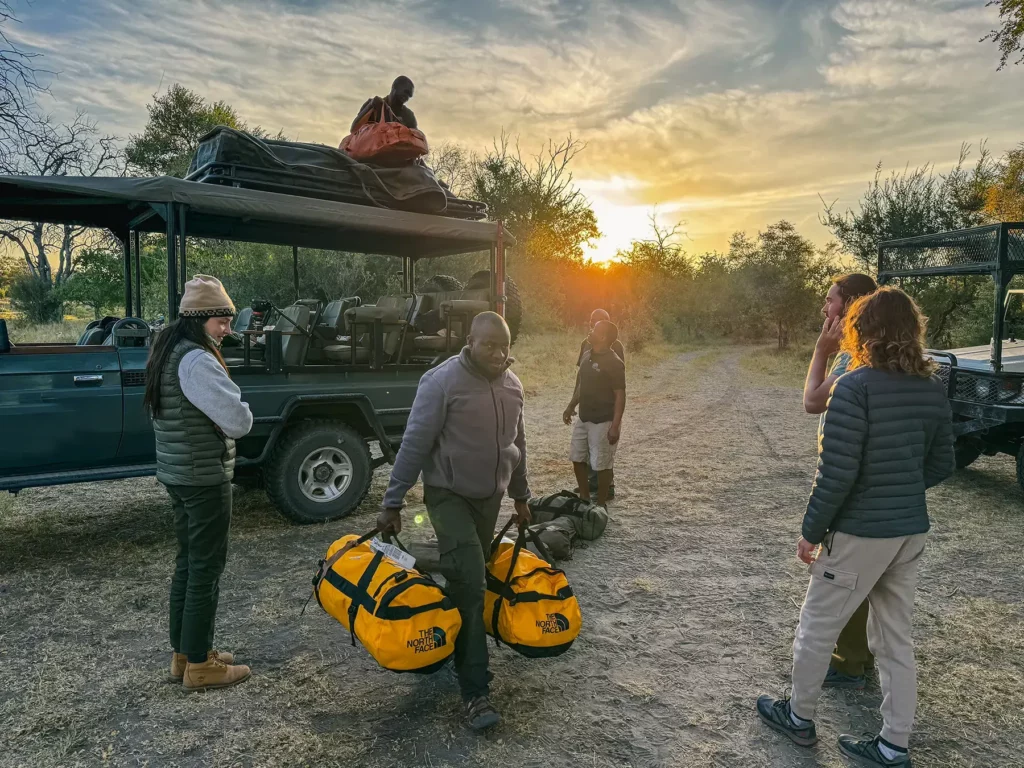
My go-to duffel bag for safaris is the 95-litre North Face Base Camp duffel.
My favourite carry-on rucksack is the Osprey Farpoint 55-litre. I find it the perfect size to transport my camera gear plus some essential extras for travel days.
Finally, I like to bring a small day-pack rucksack too (for walking safaris and other excursions where the 55-litre is far too big). My favourite is the Fjall Raven Skule 28-litre. For travel days, i just fold it down into the duffel bag.
If you don’t travel with lots of camera equipment, you could get away with using the smaller 28-litre as your carry-on.
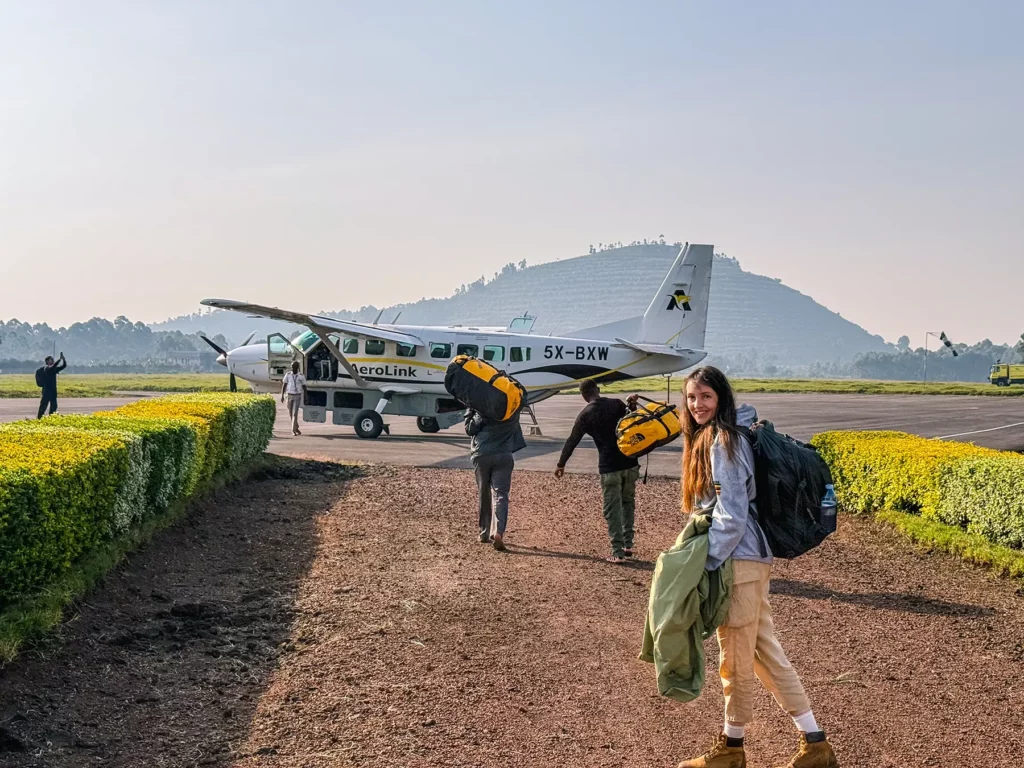
What Are the Weight Restrictions on Light Aircraft?
As you may expect, the weight limits on light aircrafts such as the Cessna Grand Caravan 12-seater bush planes are less than your typical flights. The restrictions to however vary from airline to airline.
At the stricter end of the scale, RegionalAir has a 15kg baggage allowance which includes 5kg of hand luggage. That means you can only take 10kg of hold luggage. And yes, they do weigh the hold bags!
Conversely, Flightlink allows 20kgs for your hold bag plus an additional 5kgs for your hand luggage which gives you a total capacity of 25kgs across both bags – 10kgs more than RegionalAir.
Soft luggage is essential for these flights and they won’t accept hard-shell cases.
If you’re feeling concerned about the weight restrictions, you can take more luggage by purchasing a cargo or child seat (alongside your own seat). A child seat allows you to take around 10kgs extra and a cargo seat allows for 75kgs.
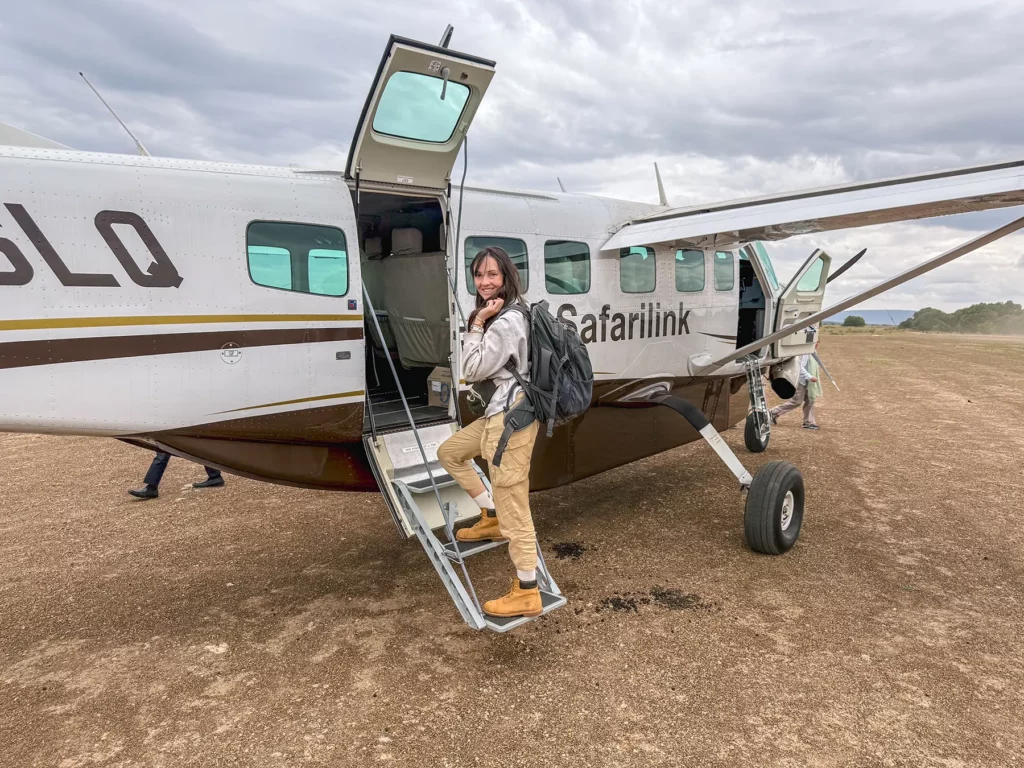
What Clothes Should I Bring?
You don’t need to purchase safari-specific clothes for a safari. Regular items of clothing such as t-shirts, vest tops, leggings, chinos, shirts and hoodies will all get the job done. However, the colour does matter (avoid blacks and navy blues as they attract insects) and the material may have an impact on how comfortable you are.
Natural materials such as linen, wool and cotton are more breathable and stop you from getting too hot.
Temperatures can really fluctuate in Tanzania so its best to layer-up. Your base layer may be a t-shirt or vest top. Atop that you may have a linen shirt. And then atop that you may have a jumper, hoodie, gilet or jacket.
The parks have individual climates too so you may wish to bring different clothes for each one. For example, Ngorongoro Crater is pretty cold and often windy. I like to wear long trousers there. In contrast, Serengeti is often quite warm and so I tend to wear shorts.

The vehicle you’ll be travelling in will have a large impact on how cold you are. If you’re in a more open safari-vehicle then you’ll want to wear more layers for the mornings and evenings as you’ll get more of a breeze than someone in a typical open-top Land Cruiser.
Comfort is always my preference on safari. Days can be long and there’s a lot of dust so take this into consideration when choosing your outfits.
Comfort continues into the evening and you’ll find that most people dress rather casually for their evening meal. You’re unlikely to see flowing dresses here! It’s common to wear the same clothes that you wear on safari, or something even more comfortable.
I won’t lie, I often push the boundaries of this casual dress code, often opting for jogging bottoms and a hoodie. Evenings are often chilly so no-one bats an eyelid.
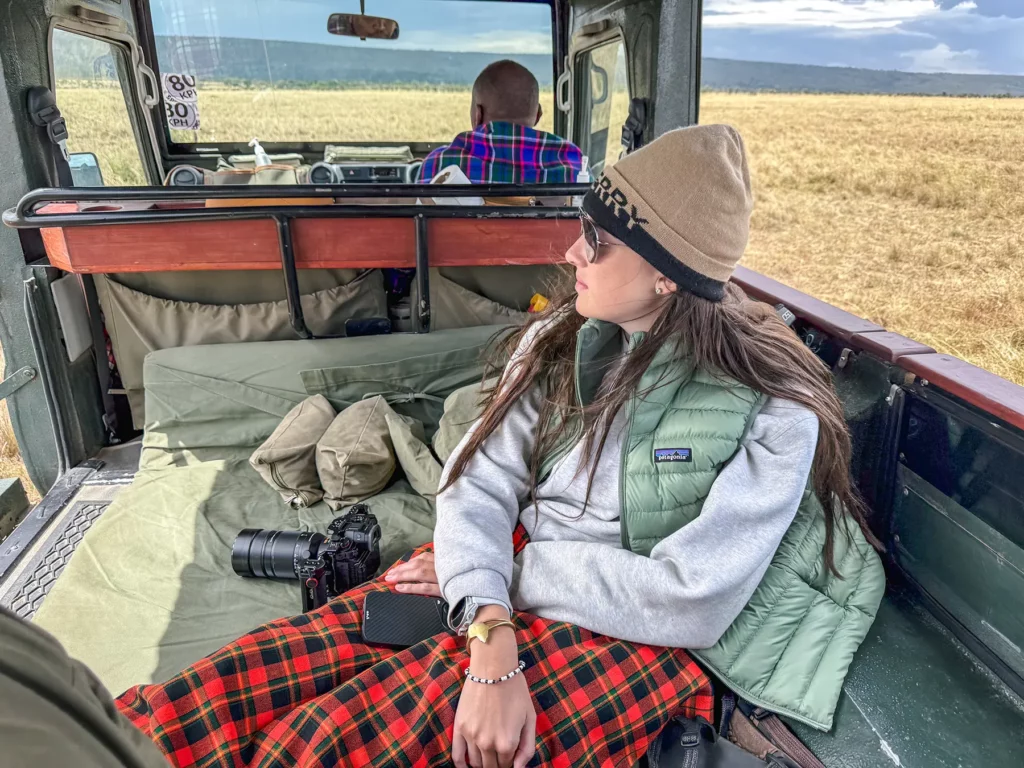
Can You Wash Your Clothes on Safari?
Yes! Most lodges and camps have laundry facilities. Laundry services are often an additional charge on top of your safari.
I tend to wash my clothes every 4 or so days on safari.
Does the Colour of My Clothes Matter?
Yes! The colour of your clothing does matter on safari.
Firstly, avoid wearing blacks or navy blues as these colours attract the tsetse fly which has a nasty bite.
It’s recommended that you avoid very bright colours too as these could startle the animals.
The best colours for safari are neutrals, beiges and greens as they help you to blend in to your surroundings more.
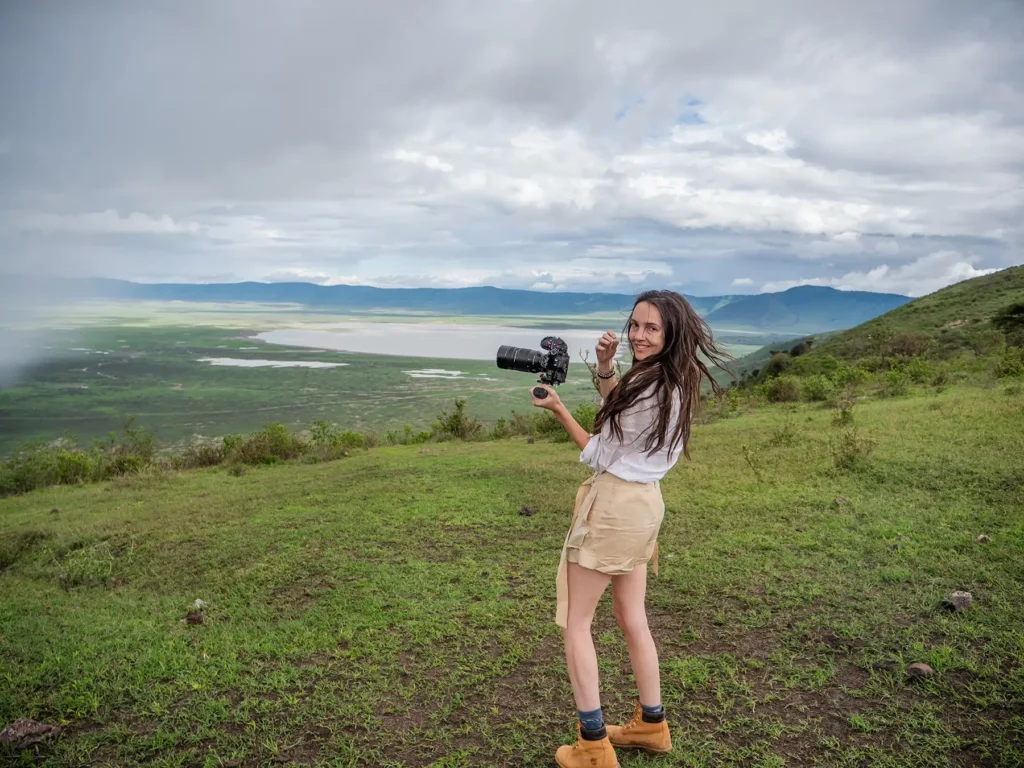
What Footwear Do I Need?
I always bring a pair of walking shoes with ankle support and a pair of sandals.
If I have excess room in my luggage then I like to bring a more casual pair of close-toe shoes as well like trainers.
Boots with ankle support cover you in most situations. They allow you to go on walking safaris and protect you in the car too. Think about it, you’re moving around in the vehicle a lot to see different animals – bashing yourself does sometimes happen. Yes, I’ve experienced it many times.
Sandals are great to have as you can wear them on days at the hotel or when lounging by the pool.
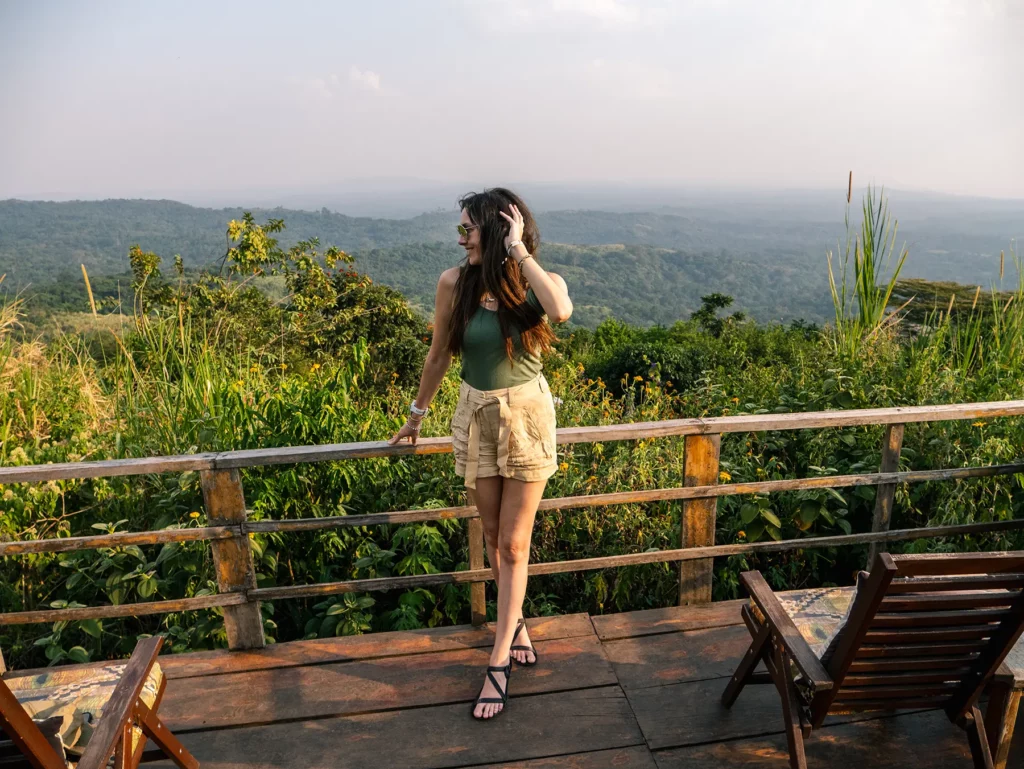
What Should I Wear for Zanzibar?
It’s recommended to dress conservatively for towns and cities in Zanzibar, with clothing covering the shoulders and below the knee. However, this is just for towns. At your hotel you can be more relaxed.
I was pretty stressed about what to pack for Zanzibar when I first visited as I read conflicting reports online. In the end, I’m extremely happy with my clothing decisions.
Whilst in your hotel, at the beach, on a boat excursion or when eating in another hotel (most restaurants are actually in hotels), it’s fine to wear your usual clothing. This includes bathing suits (okay, maybe not in another hotel’s restaurant!), short dresses, vest tops and short skirts.
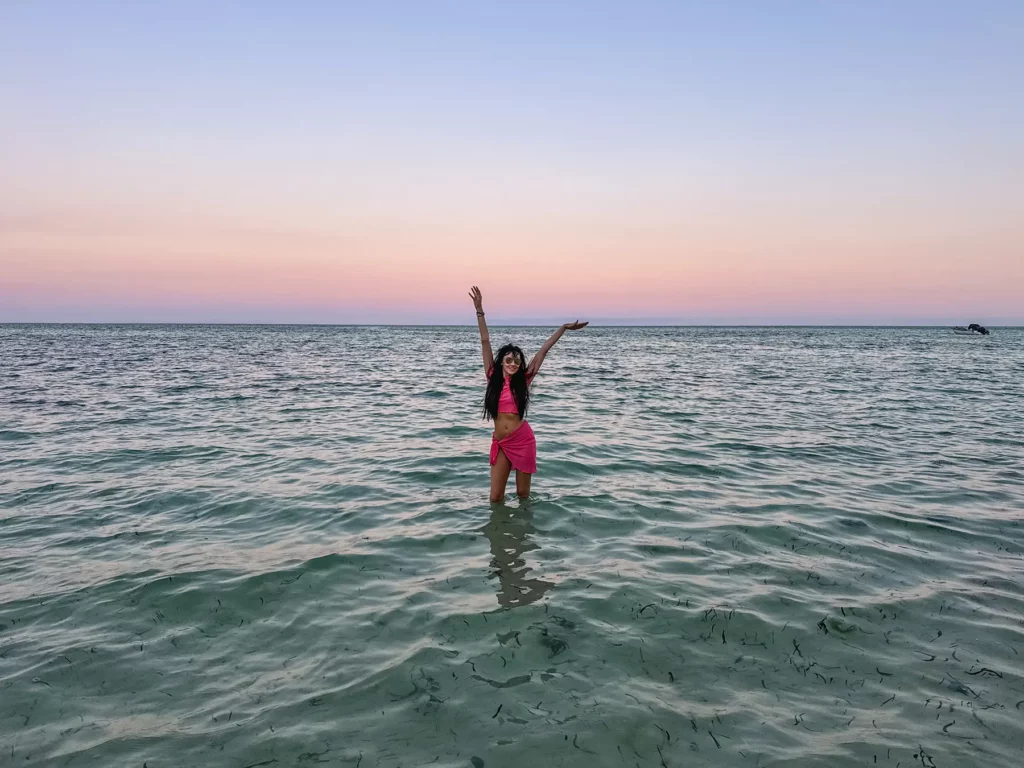
You will only need to be mindful of you’re clothing if you are leaving your hotel and venturing into town or even just walking down the street outside your hotel. In these cases, t-shirts paired with long trousers are fine, as are long dresses (which cover the shoulder too). If you only have vest tops or dresses with no shoulder coverage, you can cover your shoulders with a scarf.
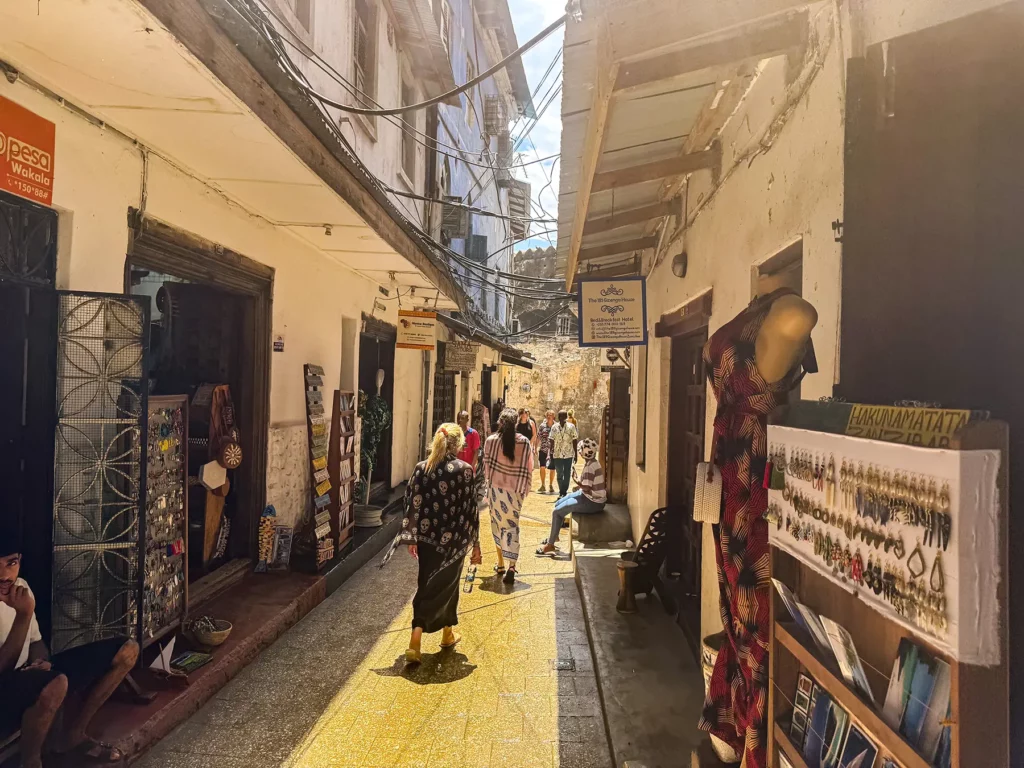
The people of Zanzibar are incredibly friendly and made me feel very welcome. I had an incident in Stone Town where I got caught in a torrential downpour and my dress got soaked through. I went into one of the shops in the old town and purchased a new outfit. Ironically, the clothing offered in the store was off-the-shoulder. I did have a scarf that I used to help me cover my shoulders when walking the streets but there were times when I forgot to put it on right away (like after my meal at a restaurant in Stone Town) and I was still met with smiles.
The bottom line is, please cover your shoulders and below your knees in busy places like Stone Town out of respect for the culture.
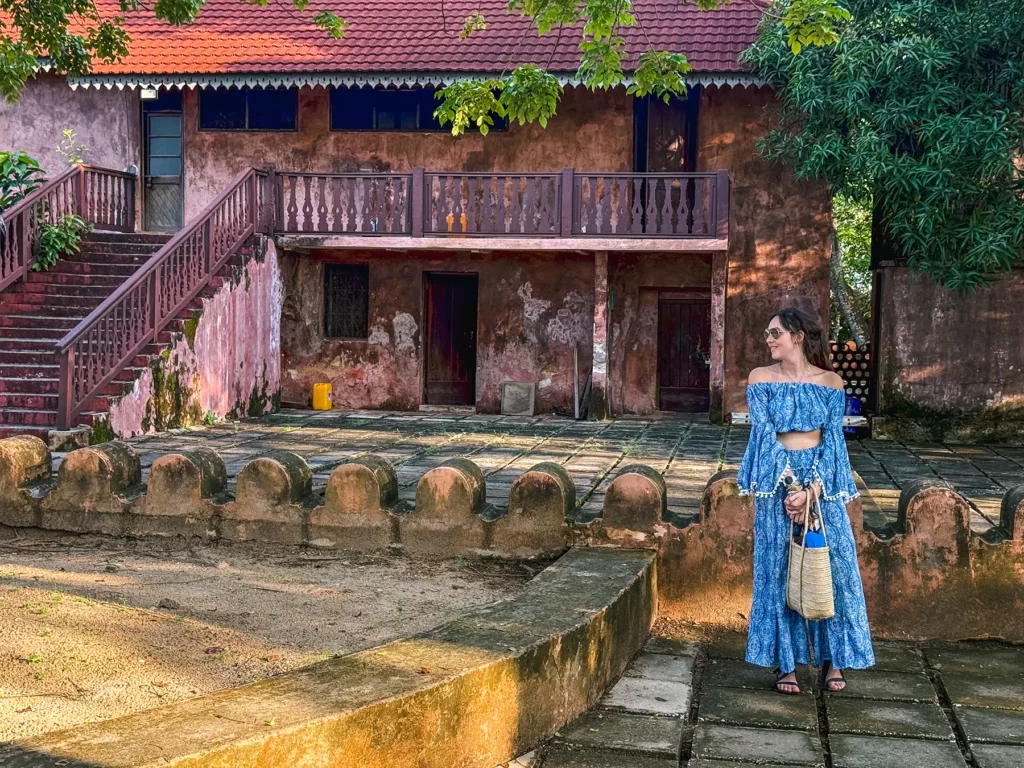
How Can I Protect Myself From the Sun?
Whilst it may not always be super warm in Tanzania, the UV rays are often strong and so its important to wear adequate sun protection so you don’t burn.
First and foremost, suncream is a must. I always travel with both factor 50 and 30 but mostly reach for the 50 to be safe. Don’t forget suncream for your lips as well. This is where I often burn.
A sunhat is useful for keeping the sun off your face. A cap is sufficient but for even more coverage you may prefer a brimmed hat.
It’s often advisable to cover up to prevent too much sun exposure. Linen shirts are great for keeping you covered whilst also not too hot at the same time.
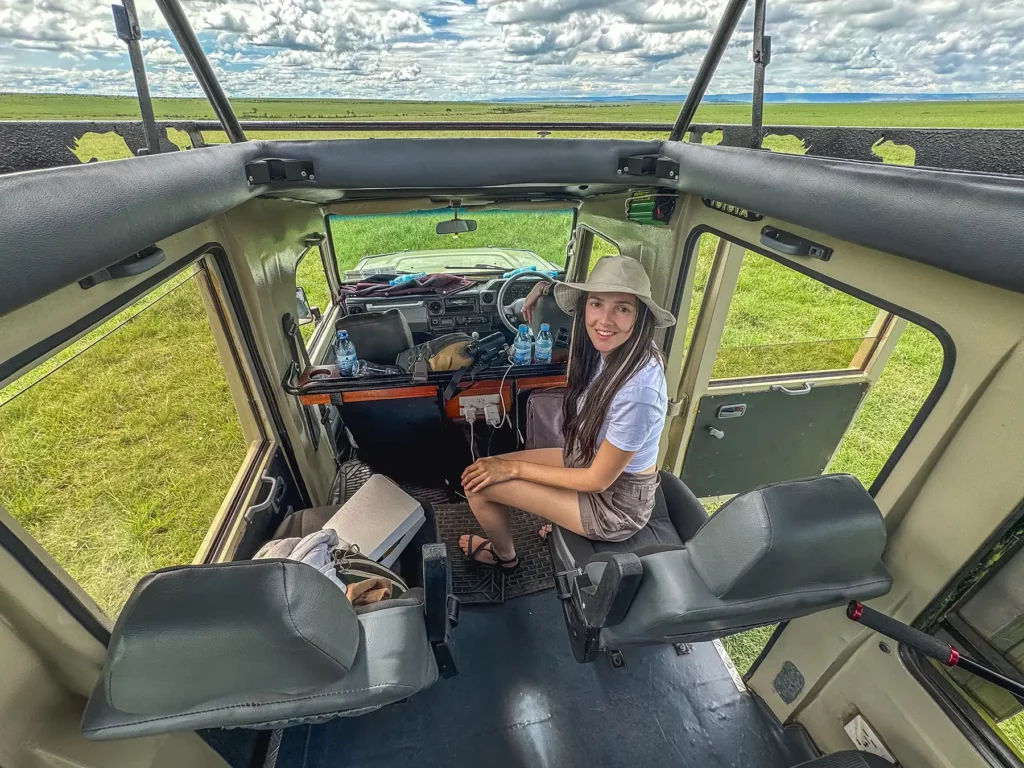
How Can I protect Myself From the Insects?
Tanzania does have mosquitos and tsetse flies and so it’s advisable to protect against them.
Mosquitos are the main insect of concern. As Tanzania has a risk of malaria, I’d recommend speaking to your doctor about the possibility of taking anti-malarial tablets. I always take these when in Tanzania. These tablets are extremely effective but I’d still recommend taking additional precautions.
I’d recommend putting mosquito repellent on each day, both in the mornings and evenings as this is when the mosquitos are most active. DEET is recommended by most doctors but I also bring natural insect repellents too for more low-risk areas.
Always sleep under a mosquito net in Tanzania as malaria-carrying mosquitos are actually active at night.
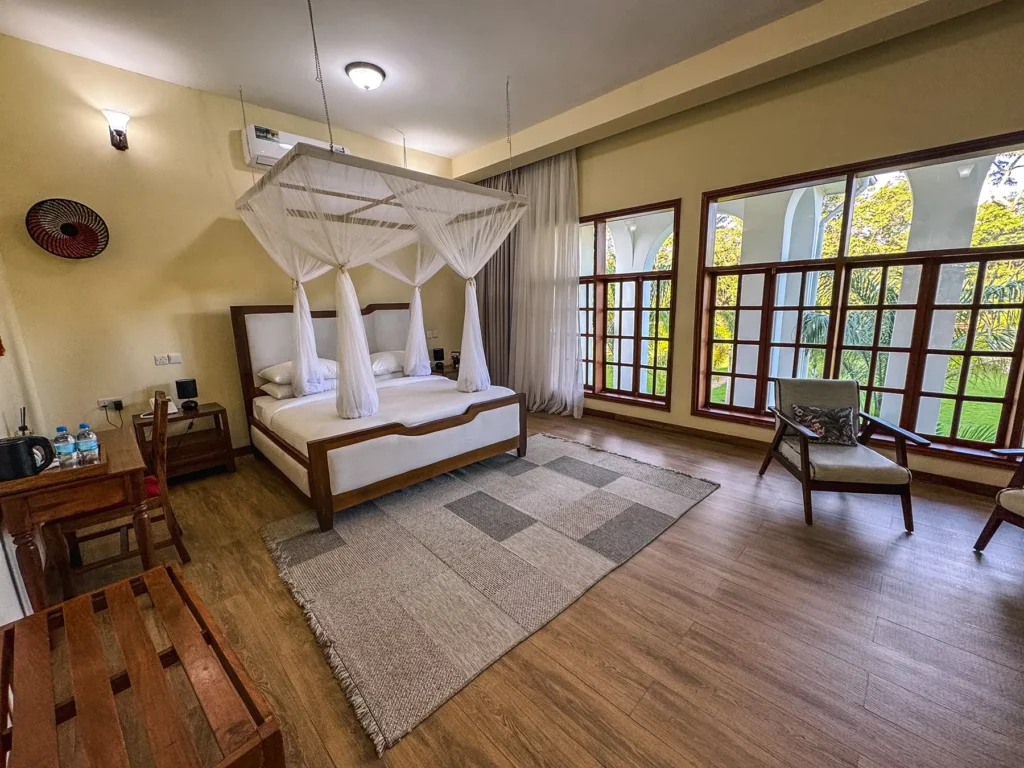
Wearing long clothing such as long-sleeved shirts and trousers is great natural protection against mosquitos as it’s harder for them to reach you.
But mosquitos aren’t the only insect you need to deter. Tsetse flies are biting insects and they have a rather unpleasant bite. They love blacks and dark blues so avoid wearing those colours.
In my experience, insects aren’t a huge problem on safari in Tanzania. I’ve actually never encountered mosquitos whilst on safari in Tanzania, even in the wet season. Ngorongoro Crater is at such a high altitude that they struggle to survive there and they just don’t seem to be abundant in Serengeti. I have encountered mosquitos in both Arusha and Moshi towns however! Even so, I would always recommend taking precautions.
I have seen tsetse flies in Serengeti on several occasions. They’re quite large and look like horseflies so they’re difficult to miss.

Complete Clothing Packing List
Below I have shared with you my complete clothing packing list for a Tanzania safari:
- 1 x down jacket or gilet (mostly needed when visiting between June – Oct and if in an open car)
- 1 x light waterproof windbreaker coat
- 2 x jumpers
- 1 x pair of snuggly trousers / pants for the evenings
- Lots of socks and underwear (most places do have laundry facilities but I’m always prepared in case I have to go long periods without laundry)
- 1 x pair of sturdy boots with ankle support
- 1 x pair of sandals or flip flops (for relaxing at the lodge)
- 2 x linen shirts
- 2 x vest / tank tops
- 2 x t-shirts
- 2 x long trousers (+ a belt if necessary)
- 2 x shorts
- 1 x bathing suit / swimming trunks (some lodges have swimming pools and if you’re going to Zanzibar this is a must and you may wish to take more)
- 1 x long dress (optional – for Zanzibar)
- 1 x sun hat (cap or floppy hat)
- 1 x beanie hat (especially if your ears are prone to getting cold like mine do!)
- 1 x pair of gloves (optional. I don’t bring gloves as they interfere with my ability to take photos)
- 1 x scarf or neck gaiter
- 1 x sunglasses
- 1 x bum bag / fanny pack (this honestly revolutionised my life! It’s perfect for carrying essentials like your passport, some cash and your phone)
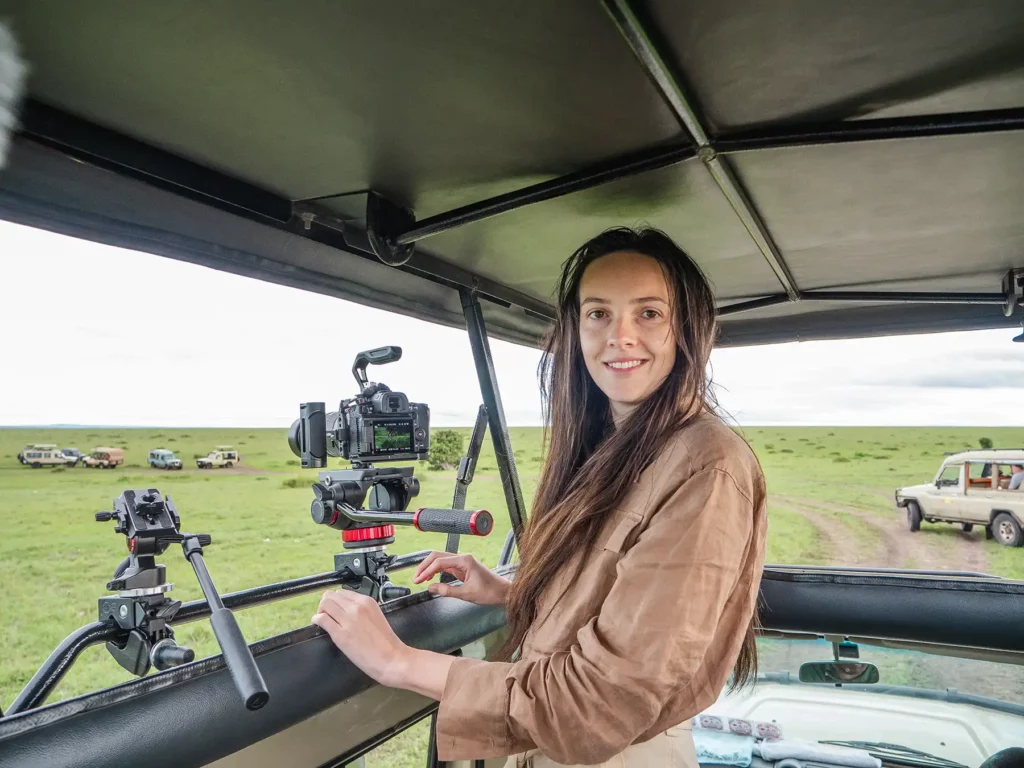
Other Essentials Packing List
Below I have shared with you my complete essentials packing list for a Tanzania safari:
- Mosquito repellent
- Suncream (I always bring factor 30 and 50 as well as special suncream for my lips)
- Antimalarial tablets
- Power adaptors (Tanzania has type G sockets)
- Appliance chargers (phones, power banks, tablets, cameras, laptops etc)
- Multi-plug (if you have a lot of devices)
- Power bank (useful for long days on safari)
- Camera and its accessories (you can view a list of all my camera gear)
- Your usual toiletries (toothbrush, toothpaste, shampoo, conditioner etc)
- First aid kit (I create my own and pack essentials such as plasters, bandages, painkillers, eye drops / wash, rehydration tablets, antiseptic wipes, bite cream, lip balm, Imodium, antihistamines, anti-nausea tablets, tweezers, nail clippers)
- Eye mask & earplugs (if you’re a light sleeper)
- Snack bars (if, like me, you’re always hungry)
- Cash (mostly USD and potentially a small amount of Tanzanian Shillings)
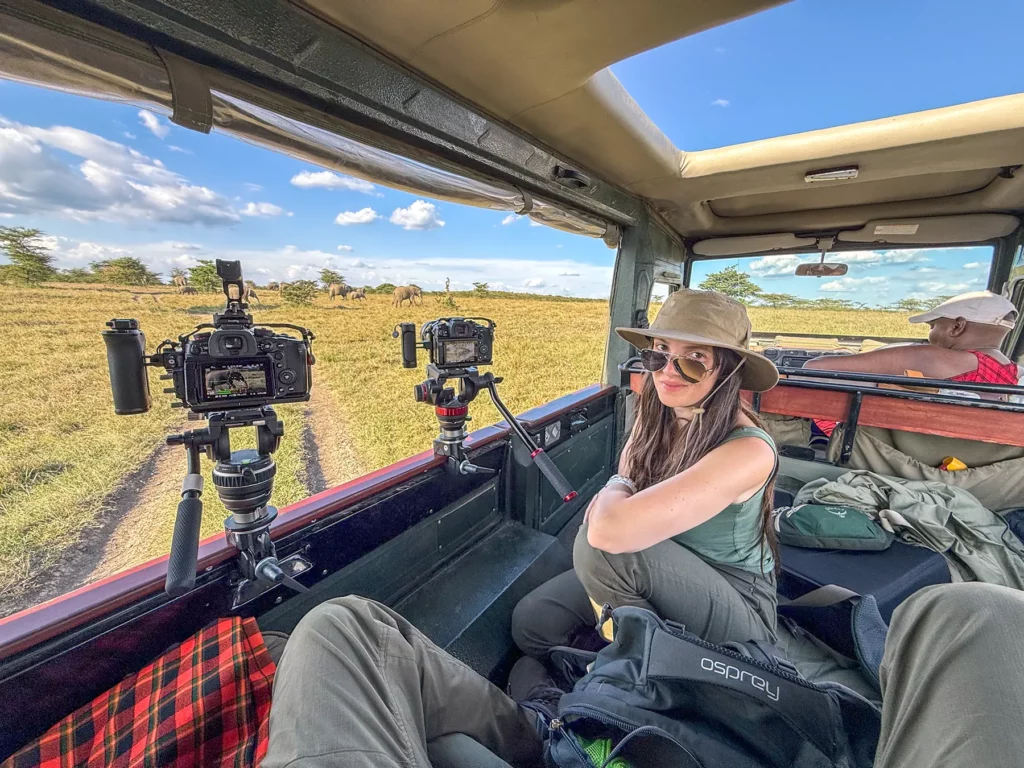
Special Interest / Unique Safaris
There are a range of different safaris on offer in Tanzania, designed to tailor to everyone, no matter what you’re interest. If you have a niche interest such as photography or birding, the chances are, there’s a safari waiting for you!
Let’s delve into some of the most popular options.
Jump for more information on each of these special interest safari questions below.
Can You Go On Dedicated Photographic Safaris in Tanzania?
Can You Go On Bird Watching Safaris in Tanzania?
Can You Go On Walking Safaris in Tanzania?
Can You Go On Safaris By Bike in Tanzania?
Can You Go On Fly-In Safaris in Tanzania?
Can You Go On Helicopter Safaris in Tanzania?
Can You Go Hiking And Trekking in Tanzania?
Can You Go Fly-Camping in Tanzania?
Can You Go On Dedicated Photographic Safaris in Tanzania?
Yes, you can! The easiest way to go on a photographic safari in Tanzania is to book a private safari through a tour operator who has dedicated photography-ready Land Cruisers and experienced guides who understand photography. I’ve had some really incredible photographic safaris by booking this way!
Many of my recommended tour operators have open-sided Land Cruisers which are perfect for photography. Simply let them know you’re interested in photography and would like the best guide for photography.
A secondary option is to book on a group photography tour led by a popular photographer. The limitations of this type of safari is availability, they are typically a lot more expensive and you don’t have a private vehicle and so are competing with others for the best view.
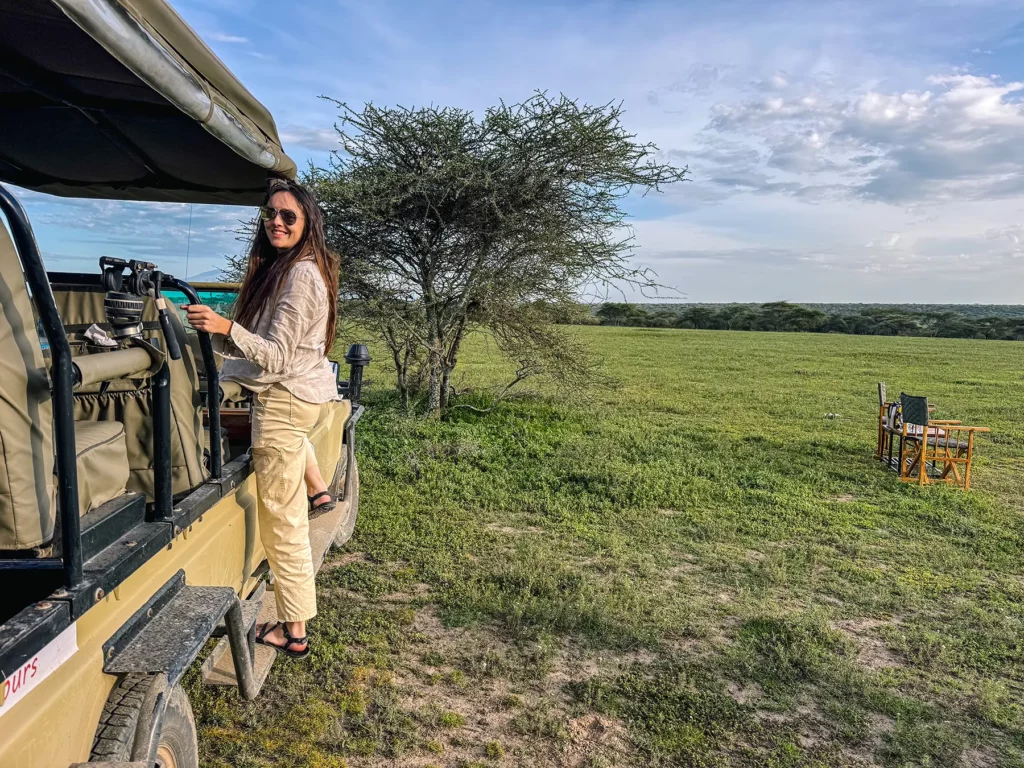
Are Balloon Safaris Worth It?
Yes, they are! Balloon safaris may be expensive but they allow you to soak up a bird’s eye view of the savannah which is a special once in a lifetime experience.
Balloon safaris also come with a champagne breakfast in the bush afterwards, another unique experience.
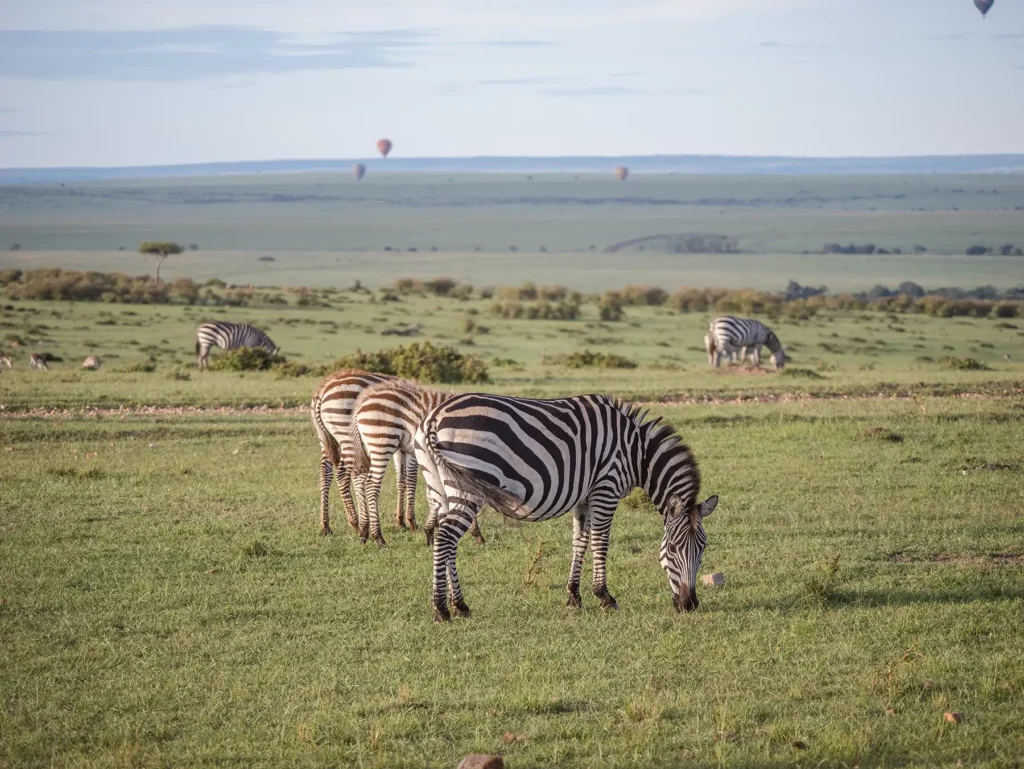
Can You Go On Bird Watching Safaris in Tanzania?
Yes, you can! With over 1,160 confirmed bird species in Tanzania, this East African country is the perfect place to enjoy a bird watching safari.
There are some tour operators who focus exclusively on bird watching. However, bird watching safaris are not limited to only these companies. I’ve had some incredible guides from local tour companies who have been able to point out hundreds of bird species to me. Just let them know you’re interested in bird watching and they’ll allocate their most skilled guide to you.
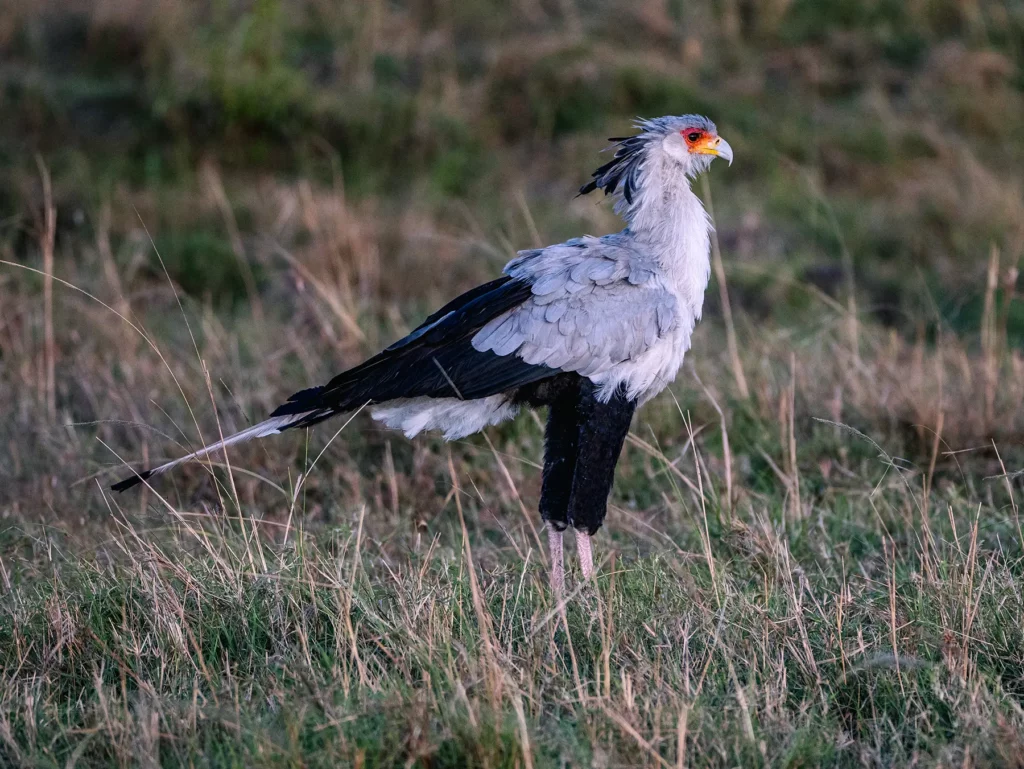
Can You Go On Walking Safaris in Tanzania?
Yes, you can! Walking safaris are available but only in certain national parks and reserves.
Arusha national park and Tarangire national park both allow walking safaris. Serengeti national park only allows walking at designated locations.
Another great place to enjoy a walking safari is on Ngorongoro Crater rim.
A walking safari is a great way to breakup game drives on your multi-day safari in Tanzania. If you’re interested in embarking on a walking safari or two, just let your favourite tour operator know and they’ll include them in the itinerary for you.

Can You Go On Safaris By Bike in Tanzania?
Yes! However, you can only go cycling in certain locations in Tanzania.
Arusha national park, Kilimanjaro national park and Lake Natron are the most popular cycling locations in northern Tanzania. Additionally, you can cycle to Materuni Waterfall which is an extremely popular daytrip for those who wish to spend a day or two in Arusha before or after their safari.
Like with walking safaris, a cycling safari can be arranged into your itinerary by your tour operator.
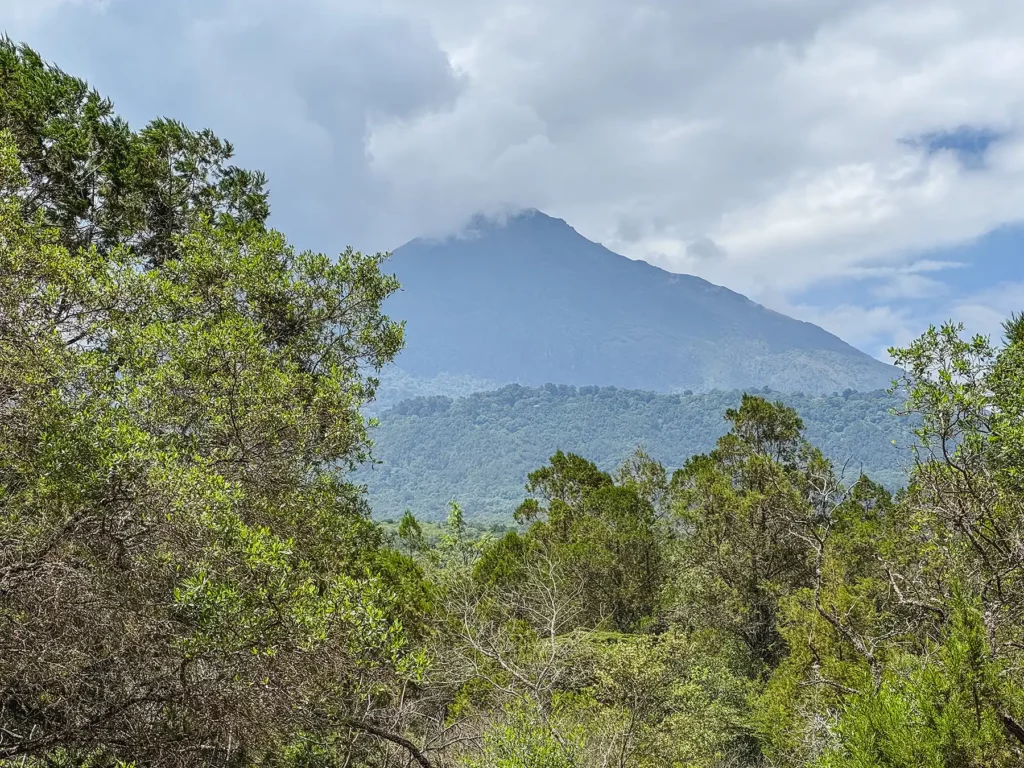
Can You Go On Fly-In Safaris in Tanzania?
Yes, fly-in safaris are extremely popular in Tanzania as they allow you to travel between parks with ease, cutting out on several hour drives.
Most parks in Tanzania contain airstrips, making fly-in safari extremely convenient.
Each flight costs around $300 per person so fly-in safaris are typically only included in luxury safari packages.
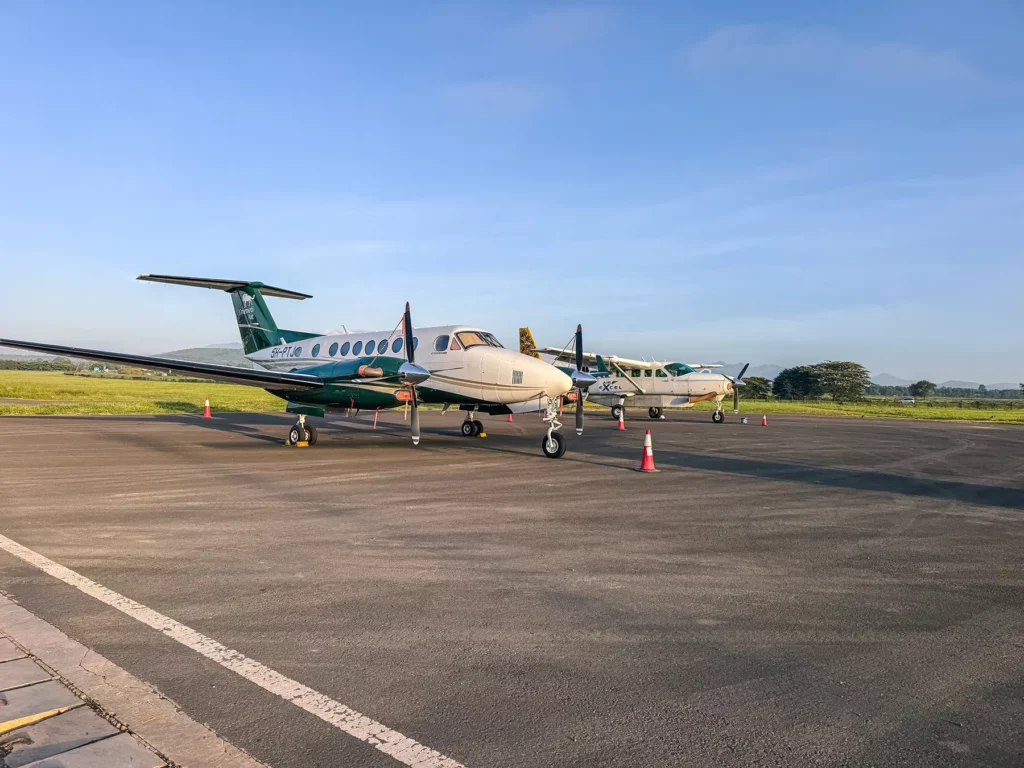
Can You Go On Helicopter Safaris in Tanzania?
Yes, you can go on helicopter safaris in Tanzania.
Scenic helicopter rides offer a great opportunity to see Mount Kilimanjaro, Lake Natron or the Great Rift Valley from the air.
Helicopter tours typically start from Kilimanjaro International Airport so it makes sense to plan a scenic helicopter ride for the start or end of your safari.
Helicopter tours normally last for a couple of hours and some include a stop for a picnic lunch in a scenic location.
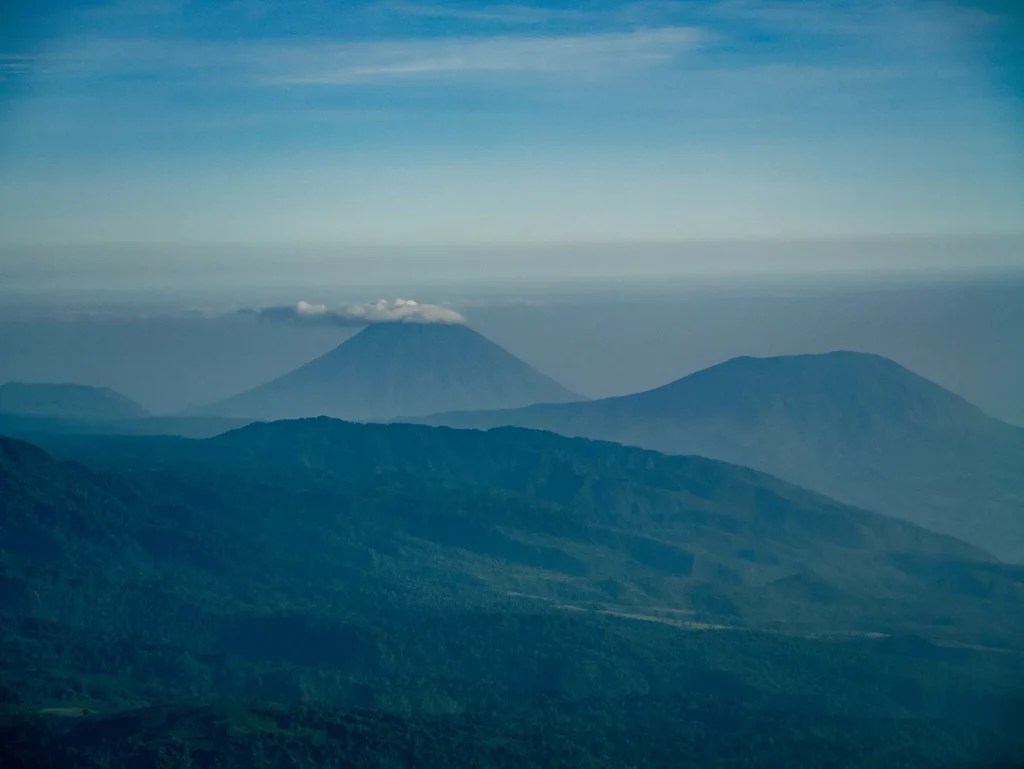
Can You Go Hiking And Trekking in Tanzania?
Yes! Hiking and trekking trips are extremely popular in Tanzania. Tanzania hosts some beautiful natural scenery, from the towering peaks of Kilimanjaro to the arid shores of Lake Natron.
The most popular hiking trip you can embark on in Tanzania is a multi-day hike to summit Kilimanjaro.
If Kilimanjaro is a little too high for you, then Mount Meru is another popular mountain which you can hike, the trek typically spanning across 5 days.
A slightly different but popular hike involves hiking across the plains between Lake Natron and Serengeti in the Rift Valley. The scenery is truly spectacular here and you feel well off the beaten tourist path.
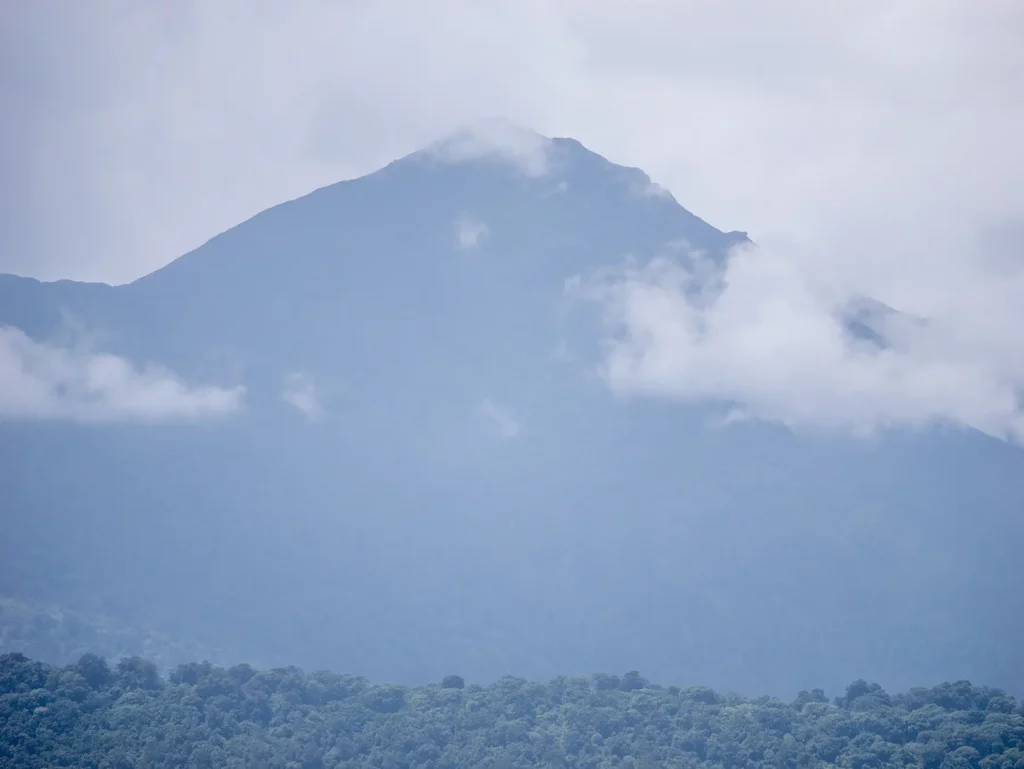
Can You Go Fly-Camping in Tanzania?
You can fly-camp in Tanzania in designated campsites. There are government-run campsites in most of Tanzania’s national parks, including Serengeti and atop Ngorongoro Crater rim.
A fly-camping safari involves sleeping in basic ground tents. You can book this type of safari through many tour operators. Thee safaris typically come with your own chef who moves with you from campsite to campsite.
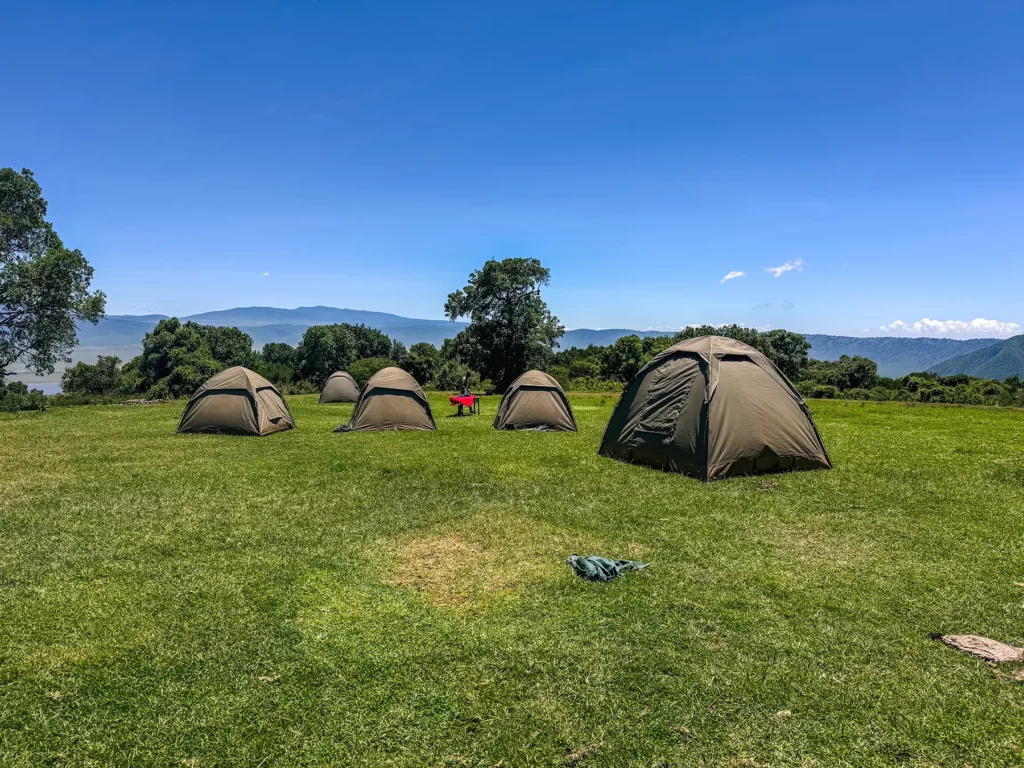
Can You Self-Drive in Tanzania?
It’s certainly possible to self-drive in Tanzania. However, I wouldn’t really recommend it unless you are extremely experienced at driving in foreign countries and have off-road experience.
Tanzania isn’t the easiest place to embark on a self-drive safari. The parks have strict regulations around which vehicles they let into them and the roads within the park aren’t the best maintained. The road into the Serengeti, for example, is pretty lethal for punctures and stone chips in the windscreen.
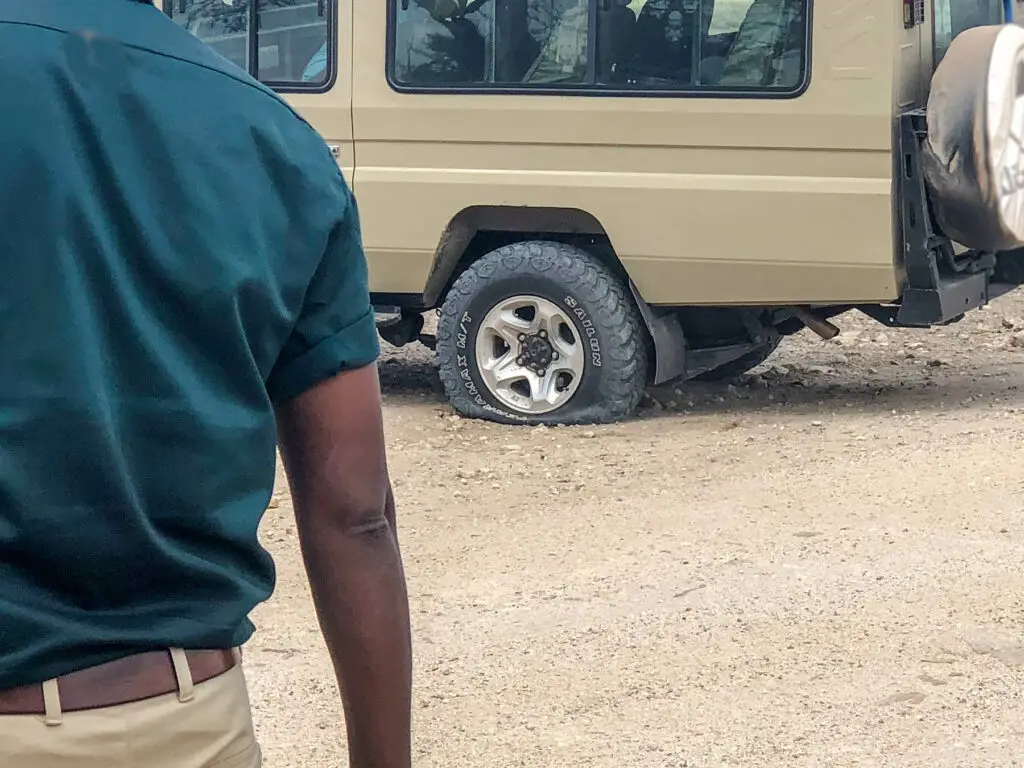
Final Thoughts
Tanzania is a dream safari destination, with fabulous and varied scenery to match an immense density of wildlife.
In this guide I’ve given you everything you need to go ahead and plan your own Tanzania safari. If you follow these steps and tips, I’m confident you’ll have an incredible trip!
If you wish to explore some of the topics that we’ve discussed here more in depth, I’ve included links to some of my other Tanzania guides below.
Read More Tanzania Guides
For an overview of planning your safari, you can read my Ultimate Tanzania Safari Guide.
Tanzania Itineraries
Recomended itineraries and how to book them.
7-10 Day Tanzania Safari Itinerary & Costs
5-Day Tanzania Safari Itineraries & Costs (6 unique Itineraries)
3-Day Tanzania Safari Itinerary & Costs
2-Week Tanzania & Zanzibar Safari Itinerary & Costs
3-Week Tanzania Safari Itinerary & Costs
10-Day Tanzania Honeymoon Itinerary & Costs
Tanzania and Kenya Itineraries
Multi-country itineraries and how to book them.
10-Day Kenya and Tanzania Safari Itinerary
2-Week Kenya & Tanzania Safari Itinerary
Costs & Planning
How to get the most bang for your buck and the best time of year to visit depending on what you want to do and see.
Tanzania Safari Cost – Everything You Need to Know!
The Great Wildebeest Migration Guide
Zanzibar Island – The Complete Guide
National Parks & Reserves
Complete guides to the best and most famous safari reserves, including the wildlife you’ll see, entrance costs and best time to visit.
Other Popular Safari Destinations
How to Book Your Safari
Save time and ensure an incredible safari experience by getting quotes from my recommended local safari companies.
Join the rapidly growing tribe of over 1,000 travellers who’ve booked their dream safari using my insider tips and recommendations.

